My most current blog entry:
Road Trip USA: Lake Tahoe, California: Hiking the Rubicon Trail
 Wednesday, September 26, 2018 at 12:13PM
Wednesday, September 26, 2018 at 12:13PM Two days of hiking the Rubicon Trail along the mountains of Lake Tahoe, California, USA.
Day One: Around the Lighthouse Trail, along Emerald Point, to Calawee Cove Beach . . . . and back on the ridge trail.
 Day one began at my friend's house . . . with this beautiful view out over a wetlands reserve.
Day one began at my friend's house . . . with this beautiful view out over a wetlands reserve. The wetlands and the hills nearby . . . amazing colors . . . first day of Autumn.
The wetlands and the hills nearby . . . amazing colors . . . first day of Autumn. Our hike would begin along Emerald Bay.
Our hike would begin along Emerald Bay.-----------------------
Day Two: Walking the South portion of the Rubicon Trail past the Vikingsholm and along the shore of Lake Tahoe.
 The Rubicon Trail follows the ridges and contours of beautiful Emerald Bay of Lake Tahoe.
The Rubicon Trail follows the ridges and contours of beautiful Emerald Bay of Lake Tahoe.With a tourist boat in the background, some friendly ducks came to sit on a rock.
Update on Thursday, September 27, 2018 at 7:07AM by
 Dr. Jeff Harper
Dr. Jeff Harper
 Dr. Jeff Harper
Dr. Jeff Harper
Yes, we saw wildlife in Lake Tahoe . . . but it was all around the house!
 The hummingbirds enjoyed the feeder. They will leave soon on a migration ahead of the coming snows.
The hummingbirds enjoyed the feeder. They will leave soon on a migration ahead of the coming snows.
 A busy little fellow.
A busy little fellow.
 A challenge to the feeder perch.
A challenge to the feeder perch.
 A visiting white egret.
A visiting white egret.
 This one was hunting fish . . . and eventually caught one that was too big to swallow whole!
This one was hunting fish . . . and eventually caught one that was too big to swallow whole!
 My host told me there were black bears living in the neighborhood, but this did not prepare me for the excitement of actually seeing one standing in the front yard! This is a real 450-500 pound bear! I had the wrong lend for the low light situation, and was so excited that I didn't check my settings! Oh no! I choked!
My host told me there were black bears living in the neighborhood, but this did not prepare me for the excitement of actually seeing one standing in the front yard! This is a real 450-500 pound bear! I had the wrong lend for the low light situation, and was so excited that I didn't check my settings! Oh no! I choked!
Road Trip USA: Cherry Creek, Nevada
 Thursday, September 20, 2018 at 3:36AM
Thursday, September 20, 2018 at 3:36AM 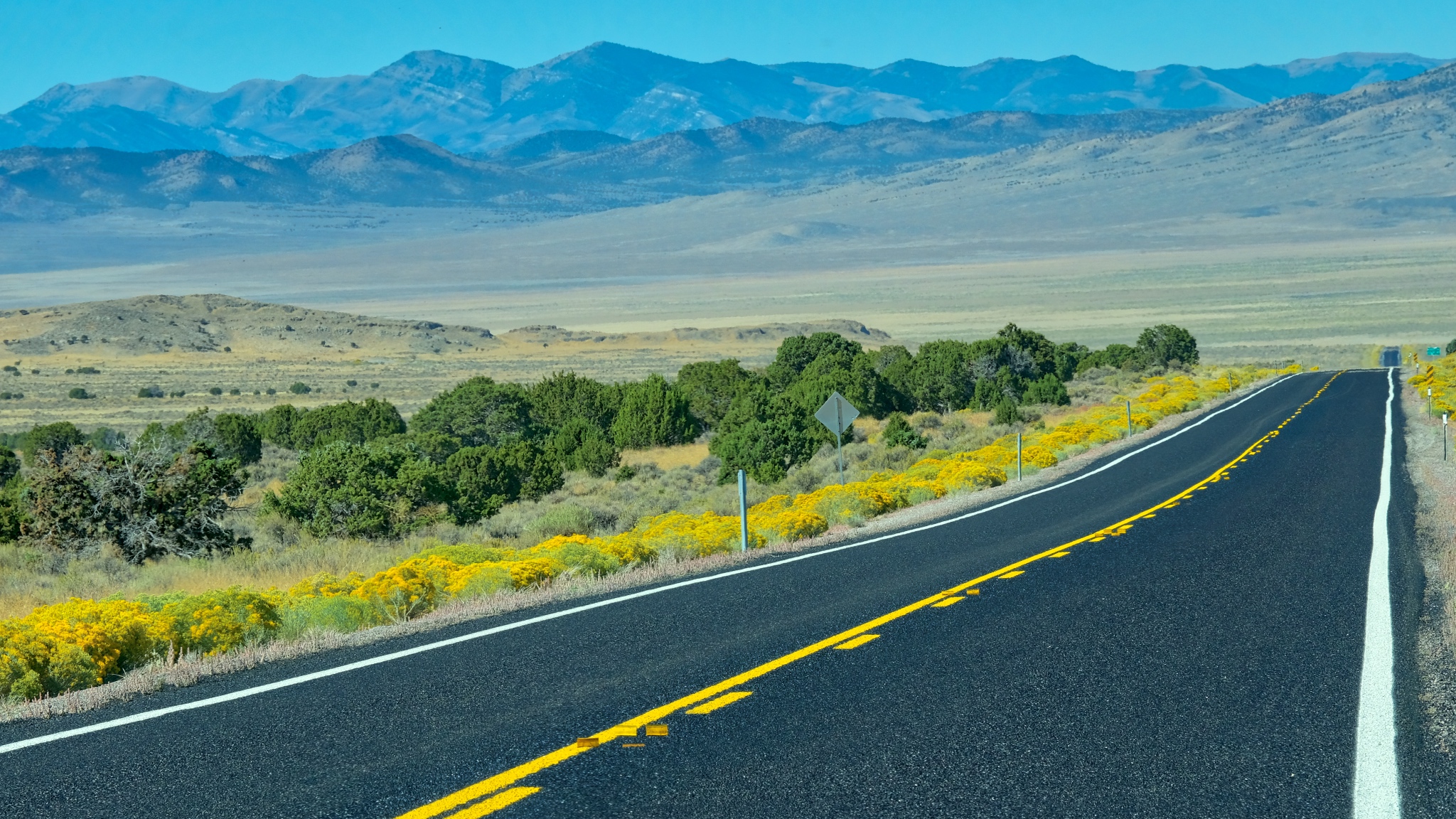 After a wonderful four days at the World of Speed event at the Bonneville Salt Flats in Utah, I headed off on US Highway 93 (via Alt 93) to the Eastern Sierras in California. I was in no hurry . . . and planned to stay at a campground somewhere along the way.
After a wonderful four days at the World of Speed event at the Bonneville Salt Flats in Utah, I headed off on US Highway 93 (via Alt 93) to the Eastern Sierras in California. I was in no hurry . . . and planned to stay at a campground somewhere along the way.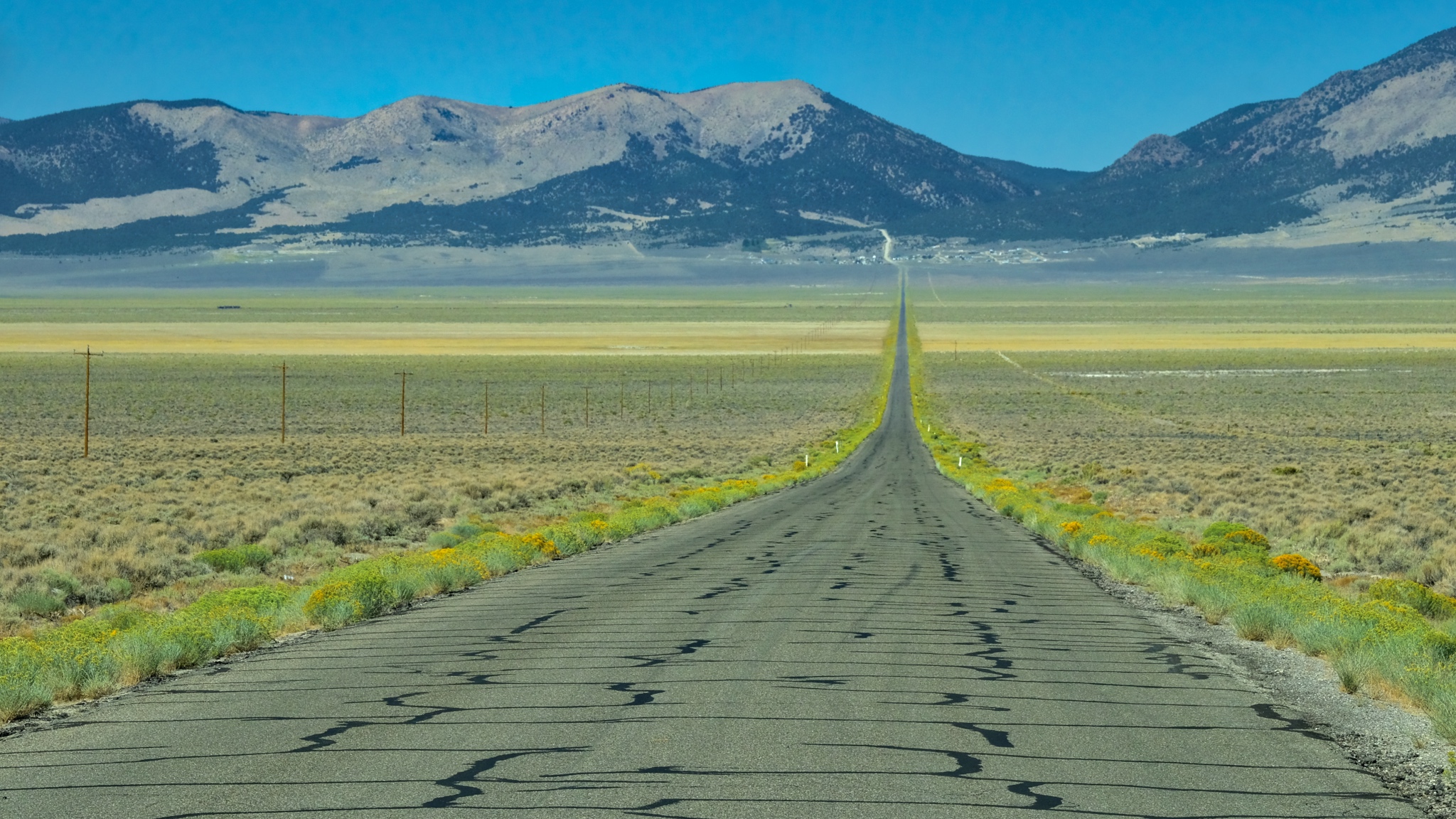 I came across this road leading up to some hills with a sign that said "Cherry Creek Museum 8 Miles" that looked interesting to me. Why not? Maybe it is an old photogenic mining town.
I came across this road leading up to some hills with a sign that said "Cherry Creek Museum 8 Miles" that looked interesting to me. Why not? Maybe it is an old photogenic mining town. Yep, sure enough: Cherry Creek was an old mining town that had seen its glory days in the 1880-1890s. Just what I had hoped!
Yep, sure enough: Cherry Creek was an old mining town that had seen its glory days in the 1880-1890s. Just what I had hoped!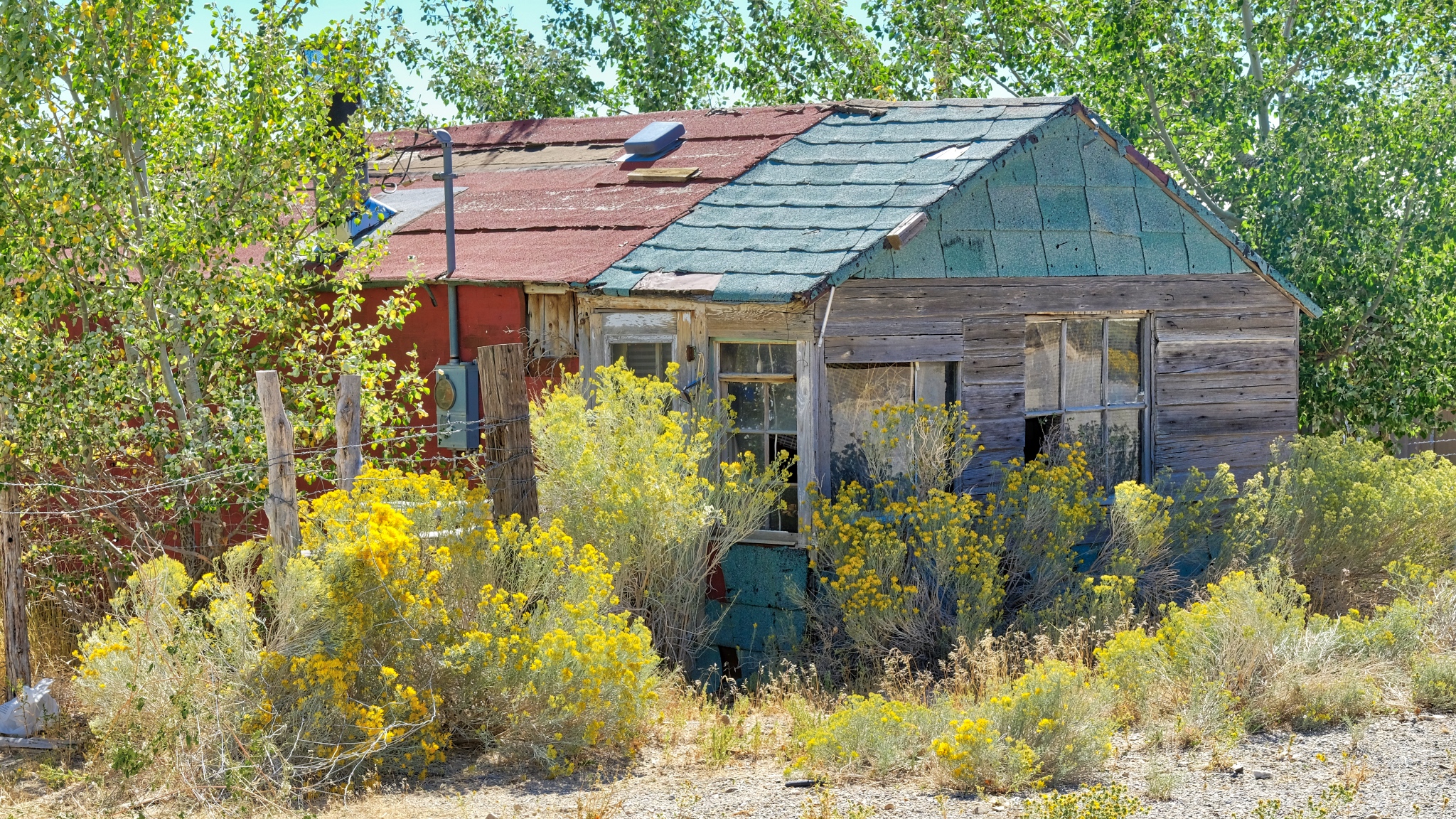 The blooming sage and the old weathered houses made for perfect compositions.
The blooming sage and the old weathered houses made for perfect compositions.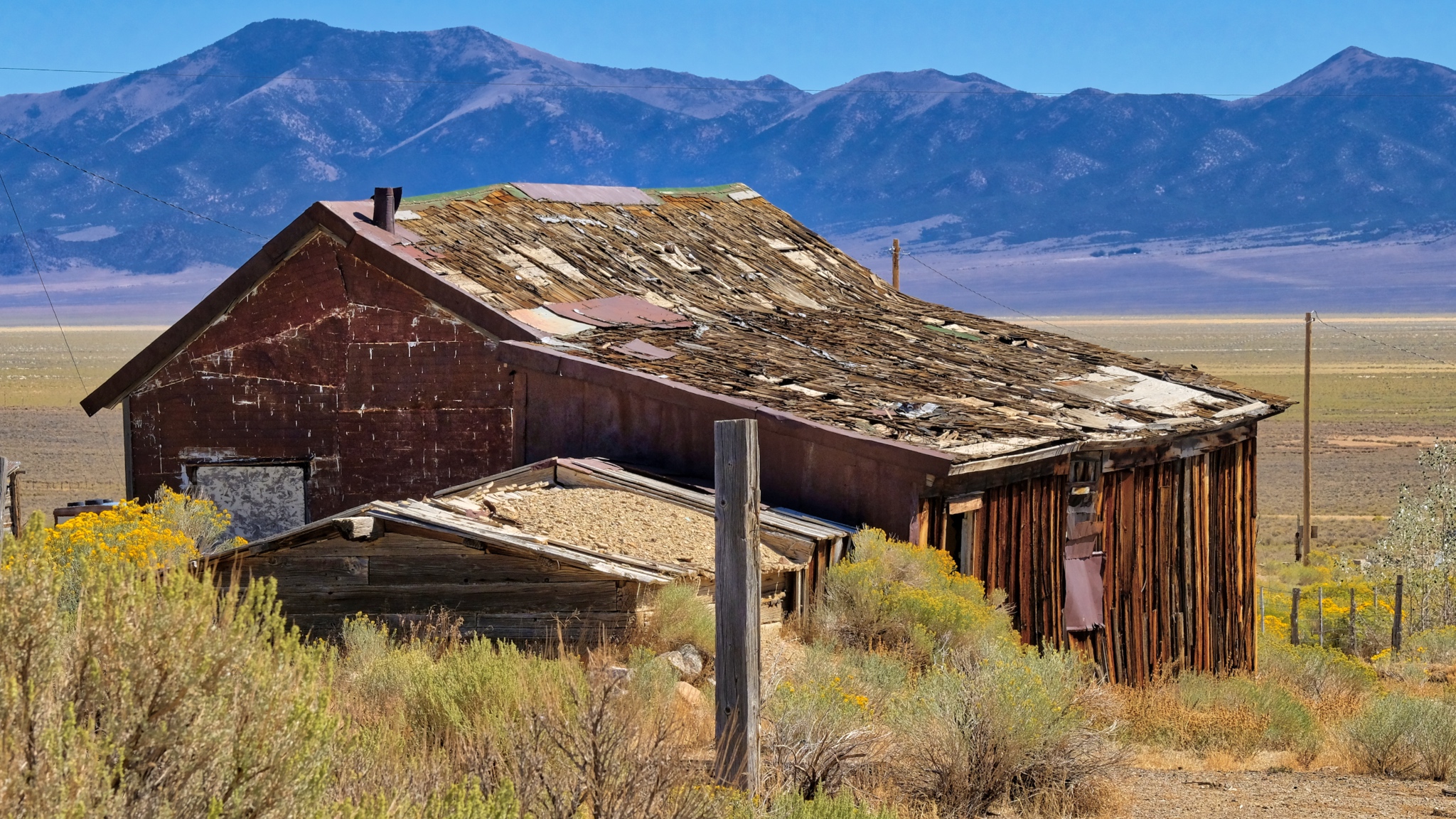 Some of the shacks seemed much older than others . . . perhaps dating to the beginning of the last century.
Some of the shacks seemed much older than others . . . perhaps dating to the beginning of the last century. Much repairing and patching was done before these old houses were abandoned.
Much repairing and patching was done before these old houses were abandoned. The old and the new(er).
The old and the new(er).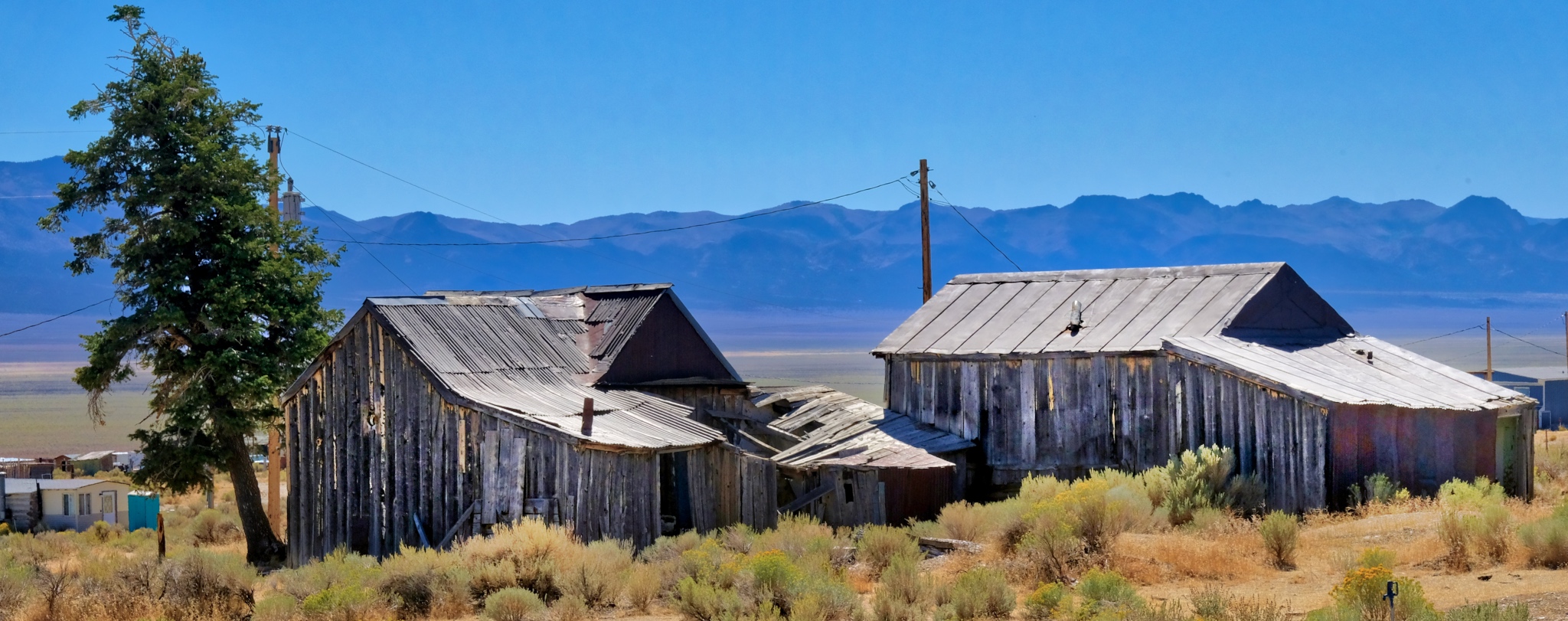 In 1882, Cherry Creek was estimated to have had a population of 7800, but by the census of 1890, it had fallen to just 350. In 2007 the population was 93 (61 male and 32 female). I did not see a single solitary person during my one hour walk-about.
In 1882, Cherry Creek was estimated to have had a population of 7800, but by the census of 1890, it had fallen to just 350. In 2007 the population was 93 (61 male and 32 female). I did not see a single solitary person during my one hour walk-about.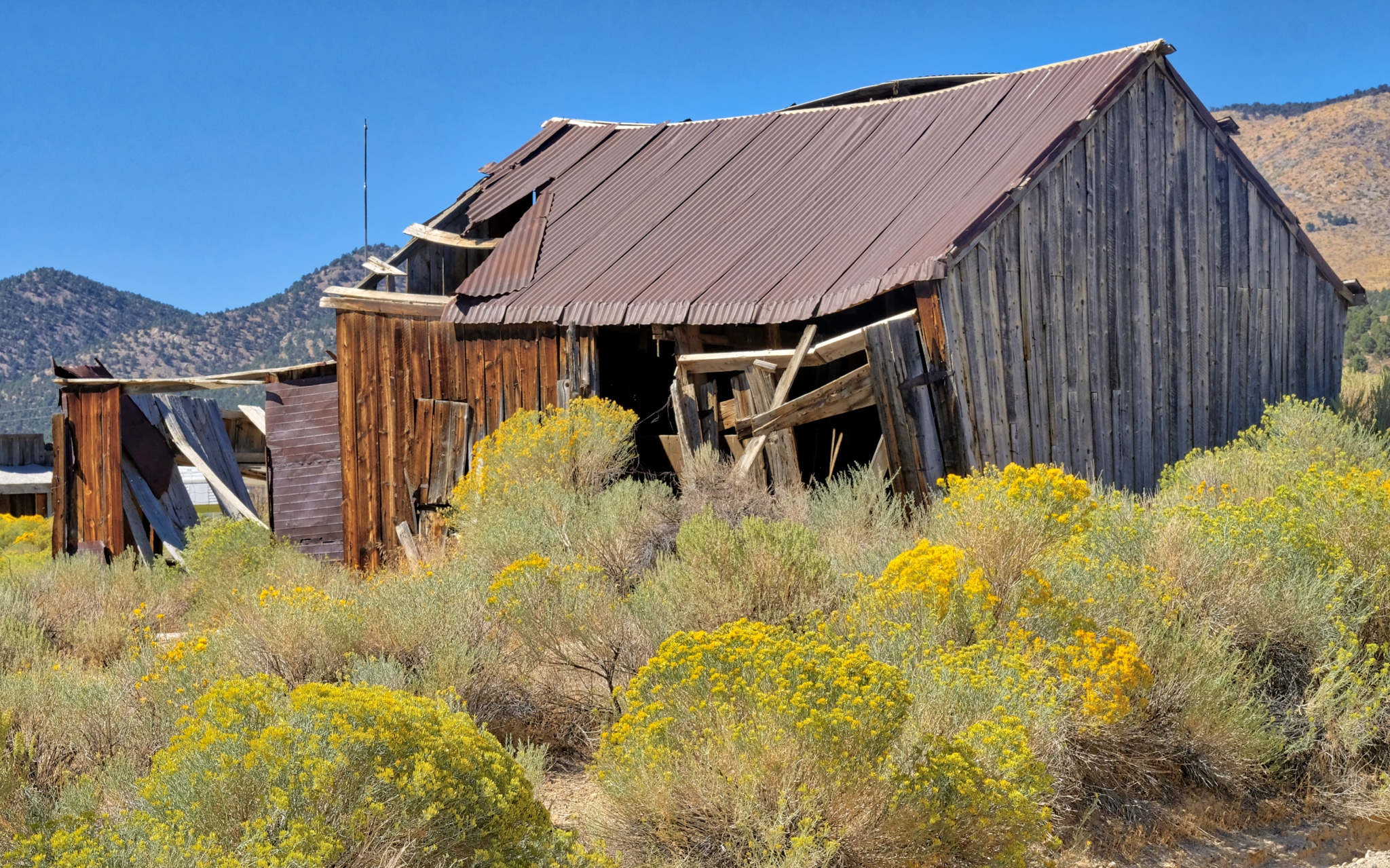 Corrugation and dilapidation . . . my favorite photographic subjects.
Corrugation and dilapidation . . . my favorite photographic subjects.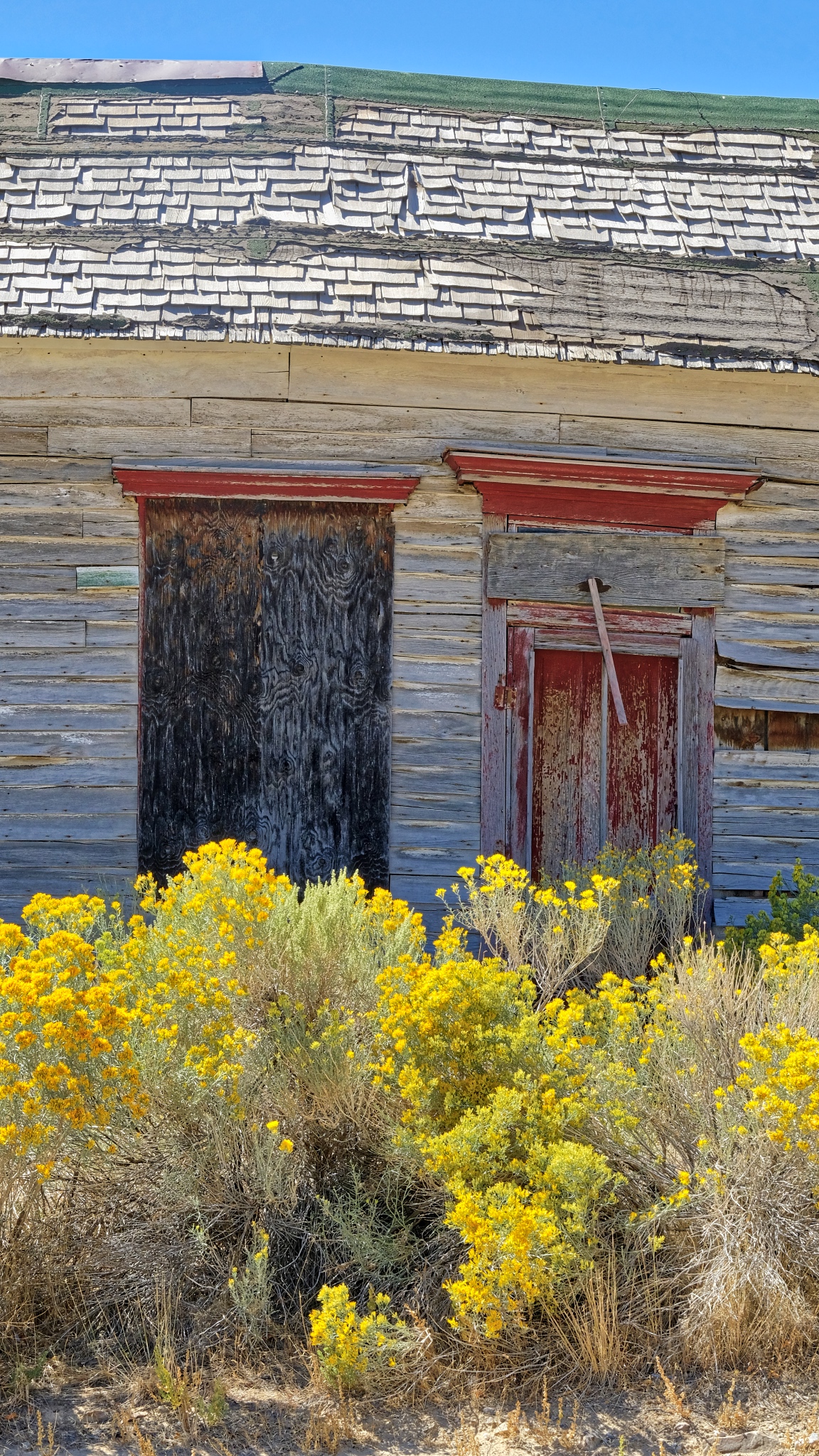 There were some lovely photos to be had.
There were some lovely photos to be had. Although I didn't see any of the 93 inhabitants, I did see a nice rustic garden.
Although I didn't see any of the 93 inhabitants, I did see a nice rustic garden. Patching, propping, and repairing right up to the end.
Patching, propping, and repairing right up to the end.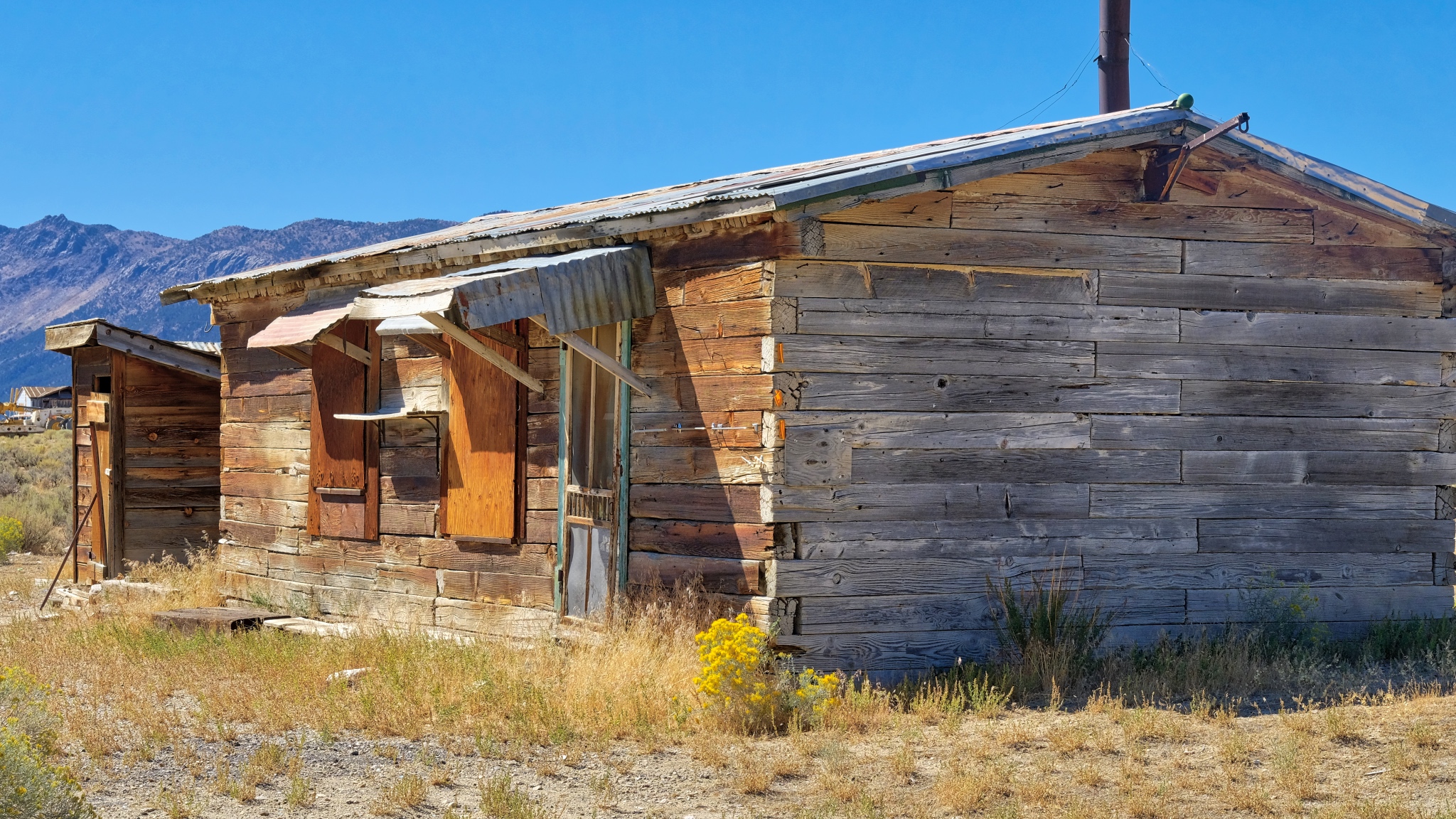 I saw several of these houses in the region that seemed to be made of large timbers like railroad ties.
I saw several of these houses in the region that seemed to be made of large timbers like railroad ties.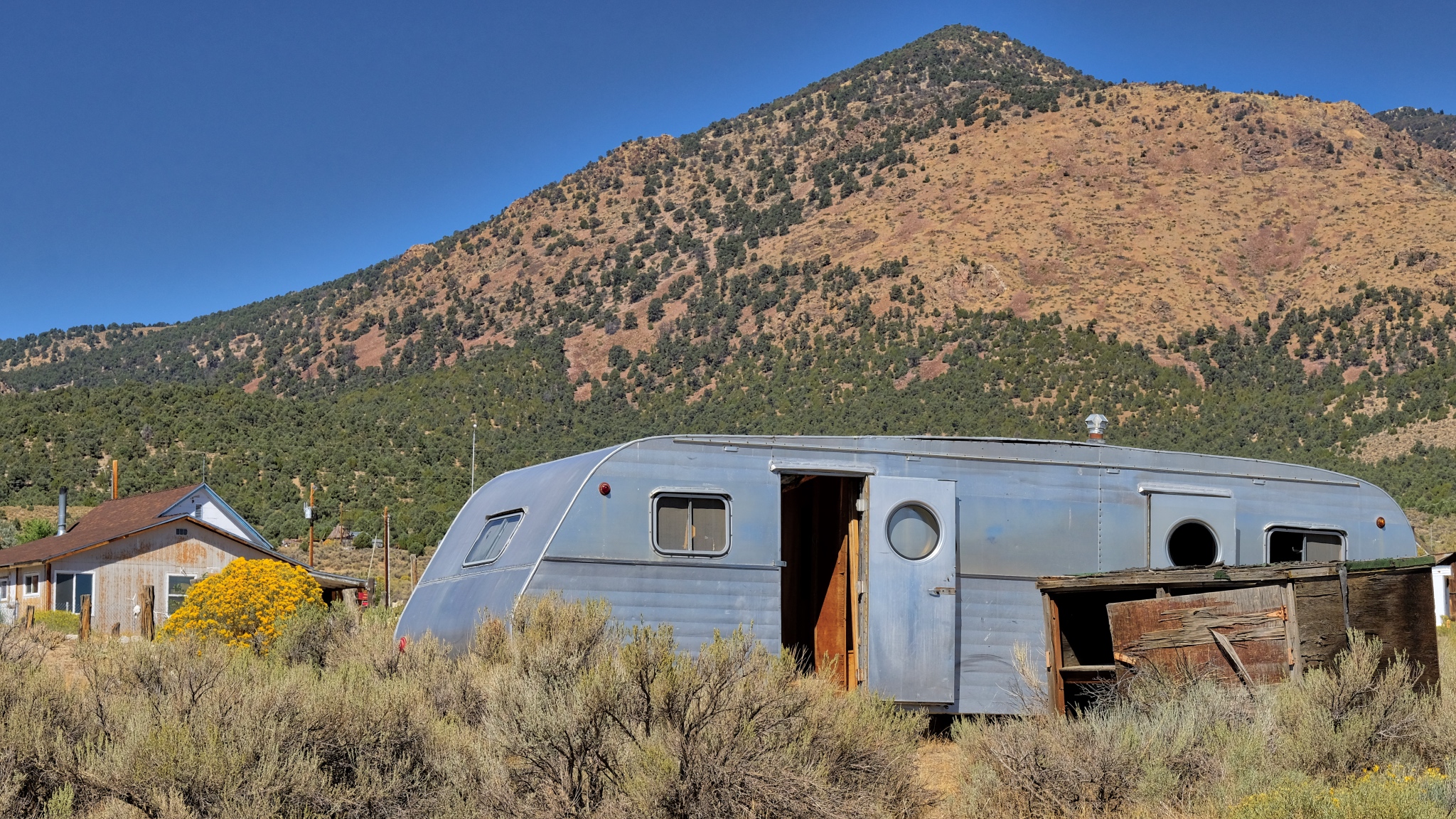 The 'townsite' was literally littered with old antique trailers . . .
The 'townsite' was literally littered with old antique trailers . . .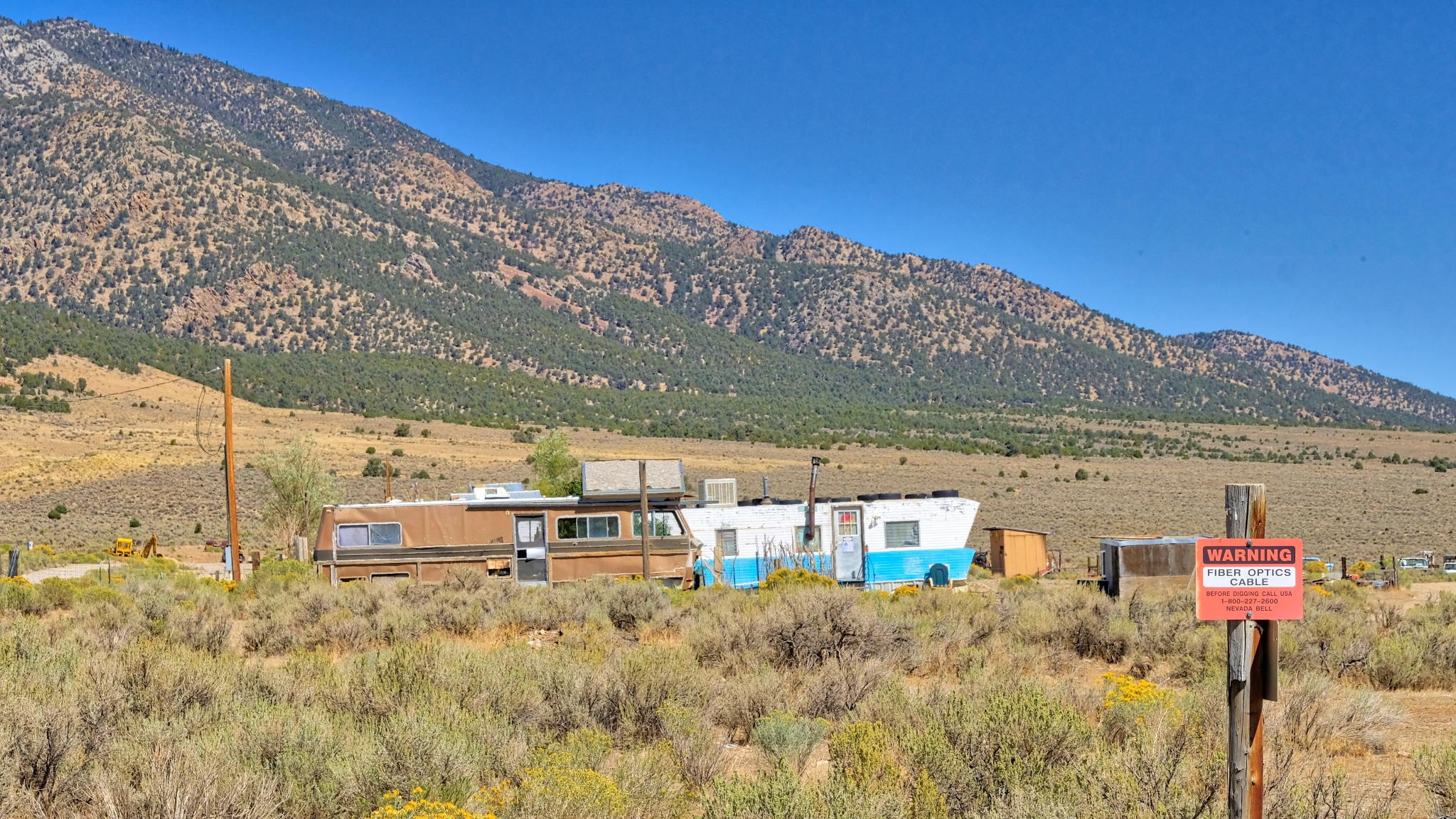 . . . and old motor homes. These residents may live out "in the middle of nowhere" . . . but they are by no means remote: there is fiber optic cable!!!
. . . and old motor homes. These residents may live out "in the middle of nowhere" . . . but they are by no means remote: there is fiber optic cable!!!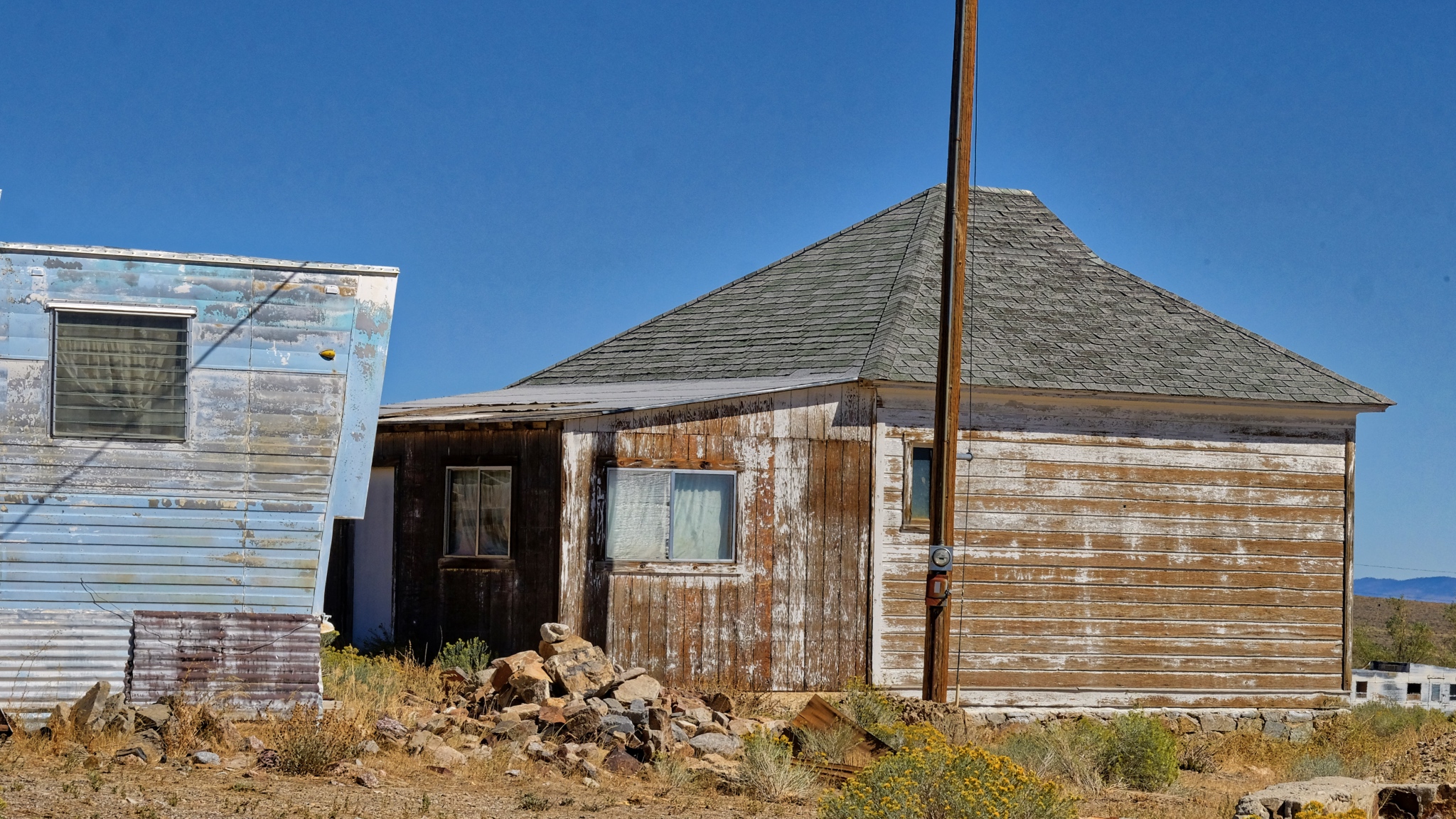 A very cool juxtaposition of old and new . . . .
A very cool juxtaposition of old and new . . . .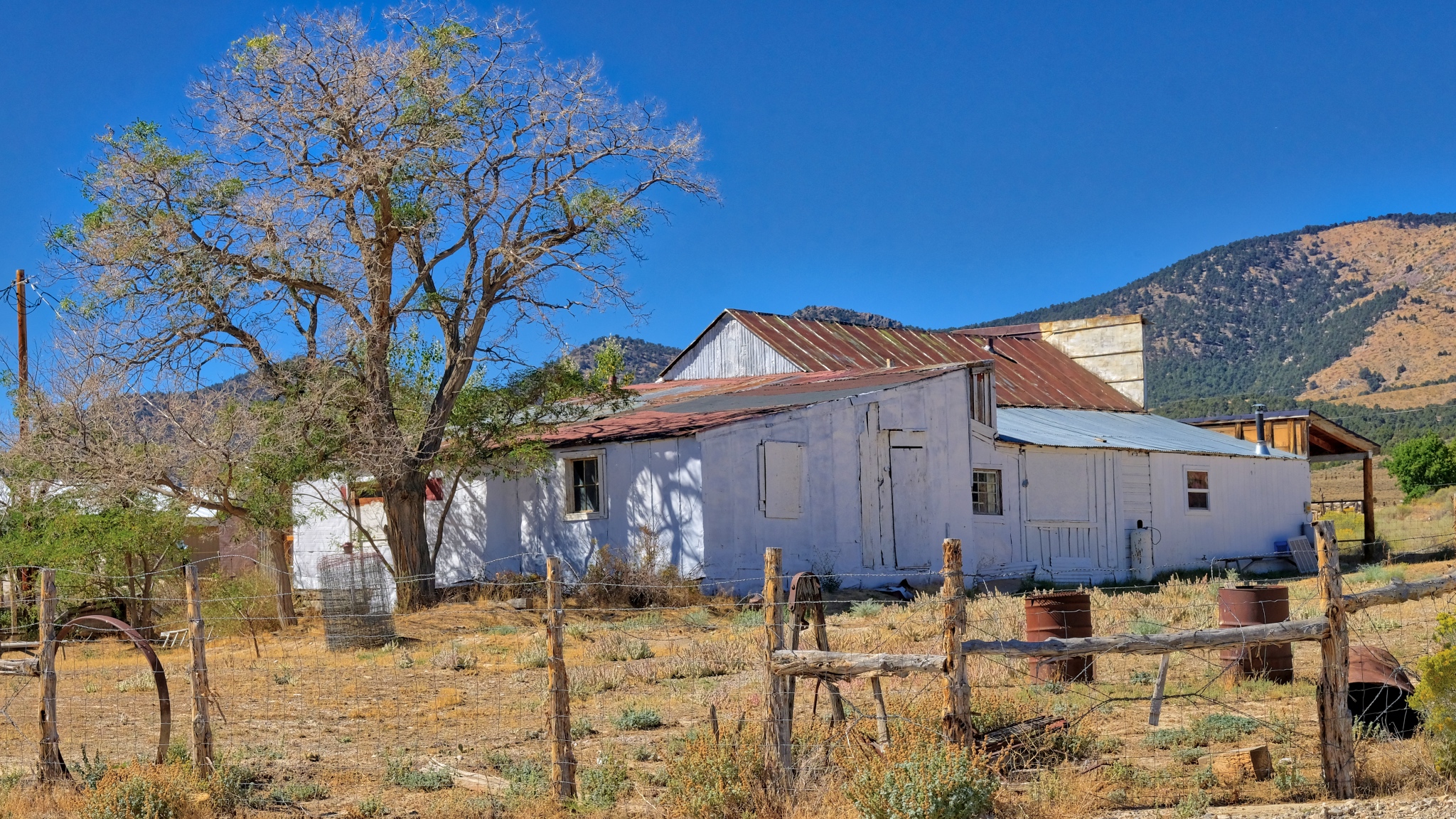 At some point in the recent past there was commerce here . . . this old store was for sale.
At some point in the recent past there was commerce here . . . this old store was for sale.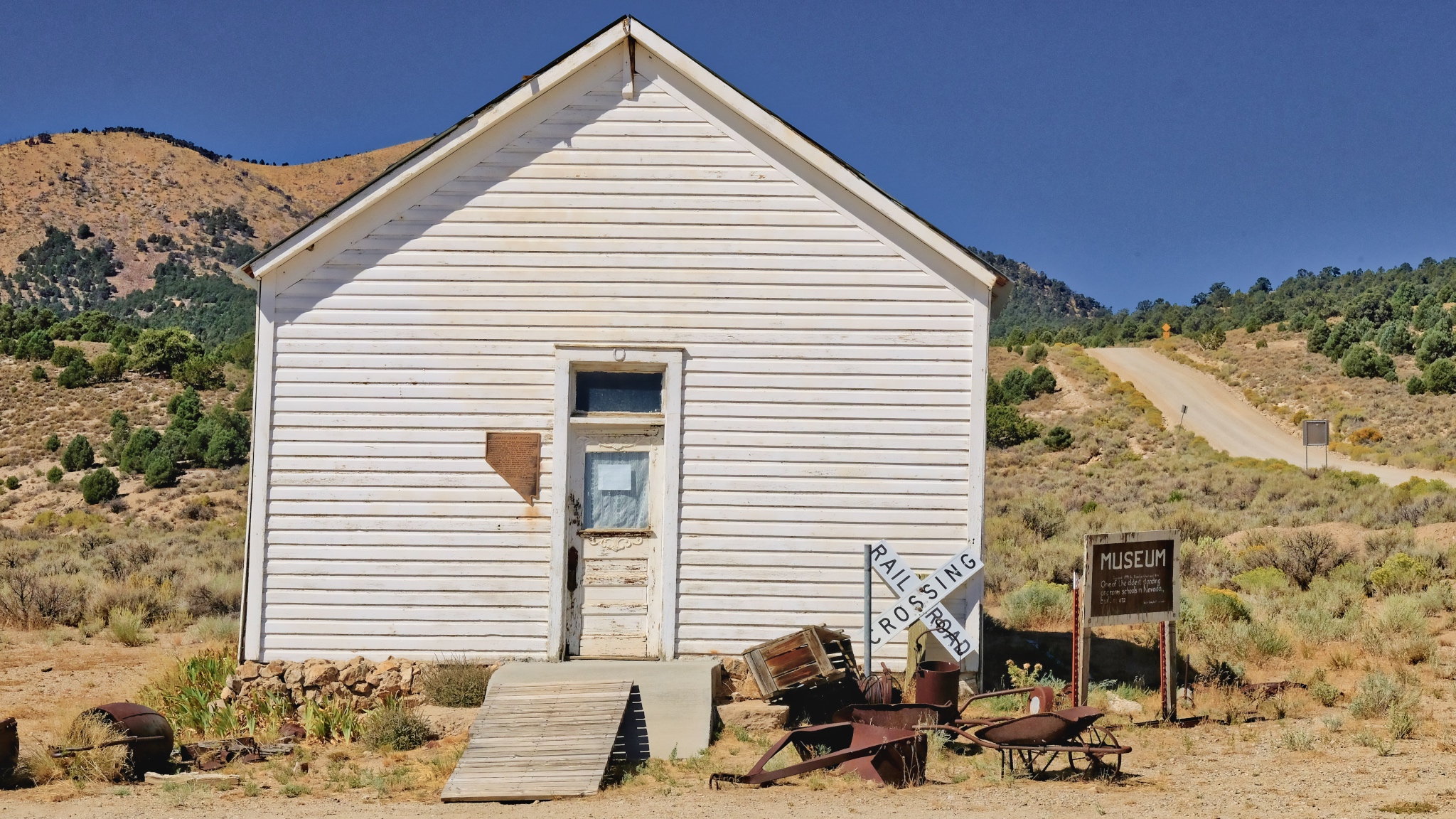 The Cherry Creek Museum was the old school house. It was closed, but a map on the door told you which trailer door to knock on to get a tour.
The Cherry Creek Museum was the old school house. It was closed, but a map on the door told you which trailer door to knock on to get a tour.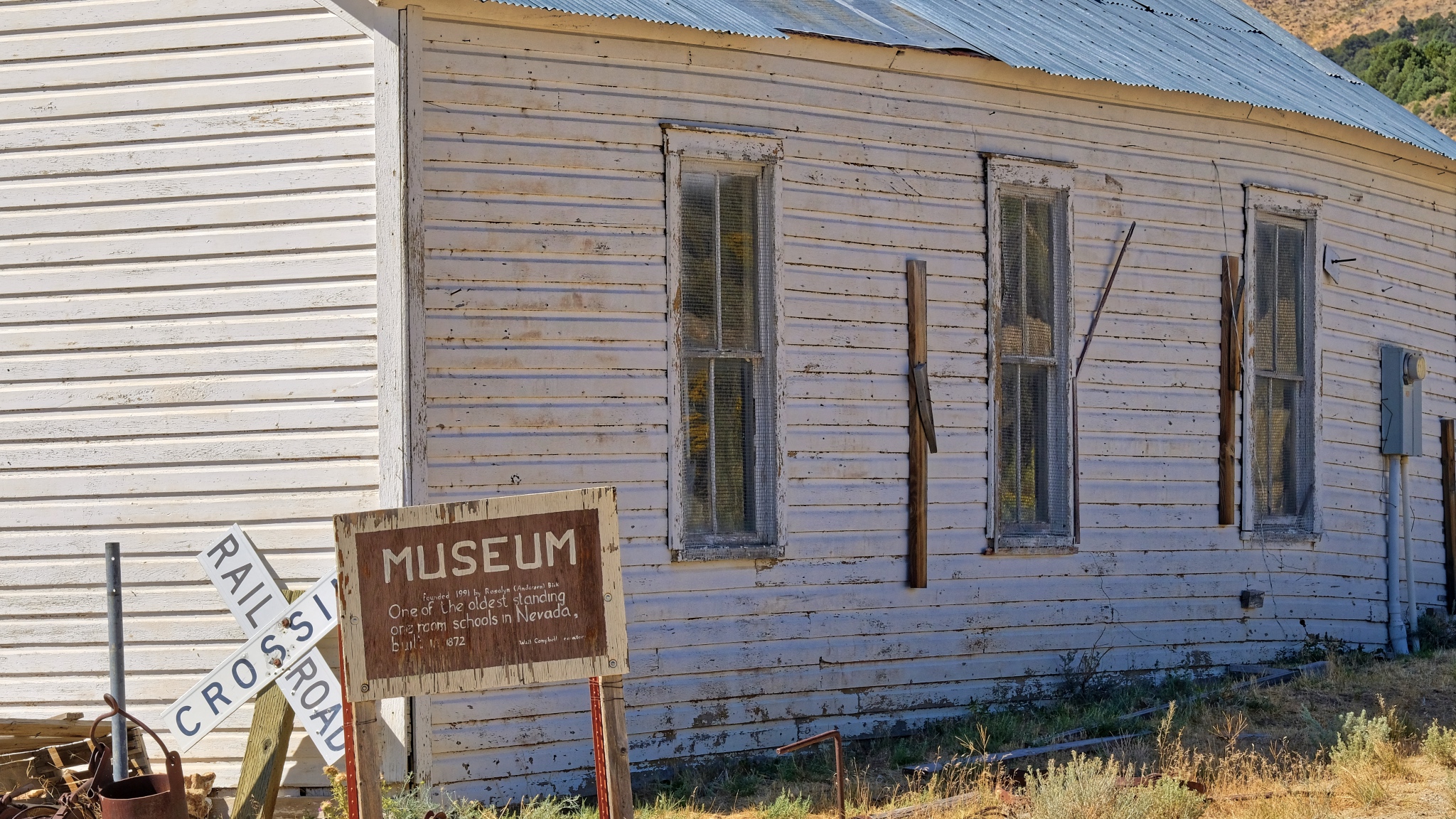 "One of the oldest standing one room schools in Nevada. Built in 1872."
"One of the oldest standing one room schools in Nevada. Built in 1872."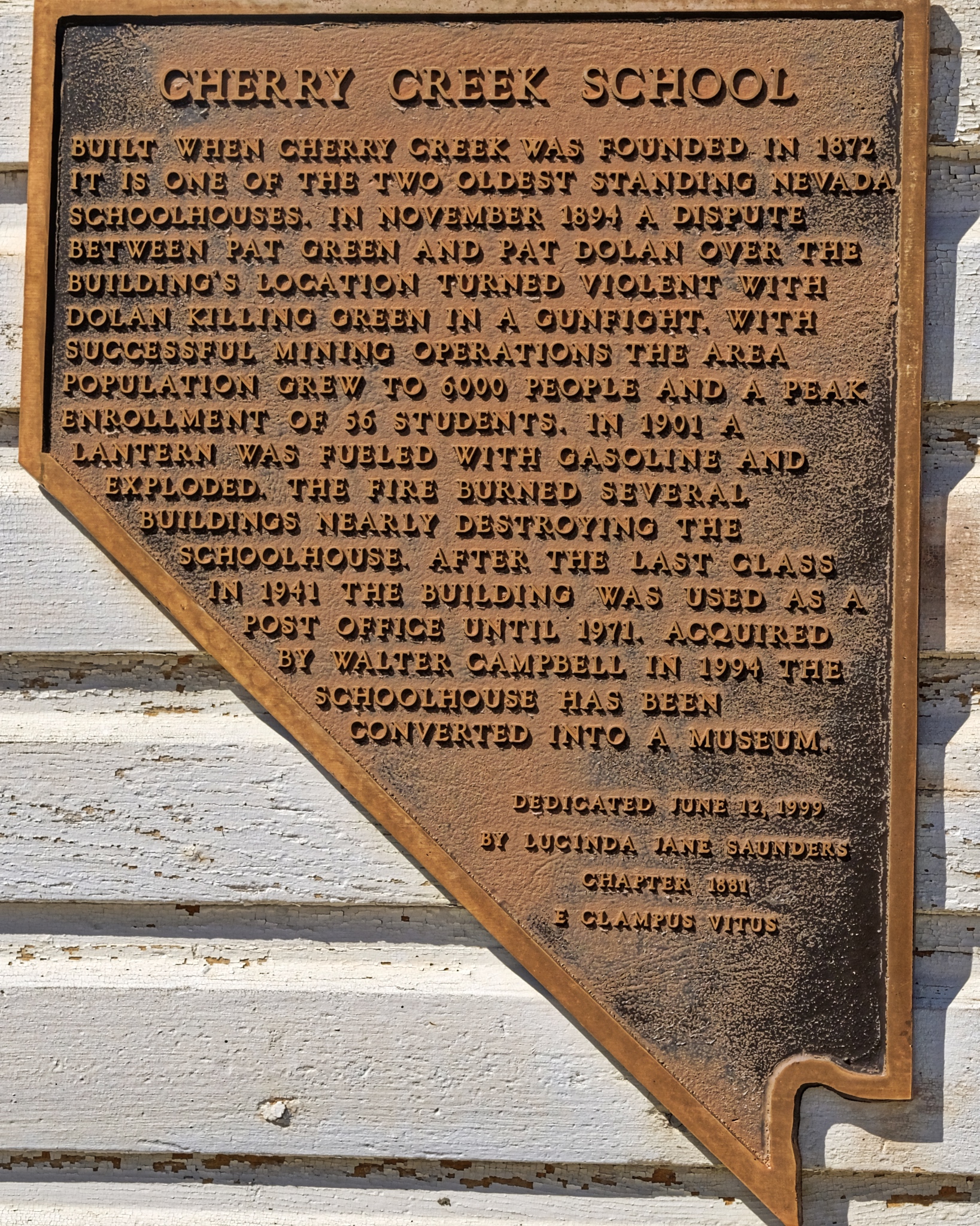 There was this wonderful commemorative plaque attached to the old school.
There was this wonderful commemorative plaque attached to the old school. Oh the memories these children made! At it's peak there were 66 students. Where are all those 'children' now?
Oh the memories these children made! At it's peak there were 66 students. Where are all those 'children' now?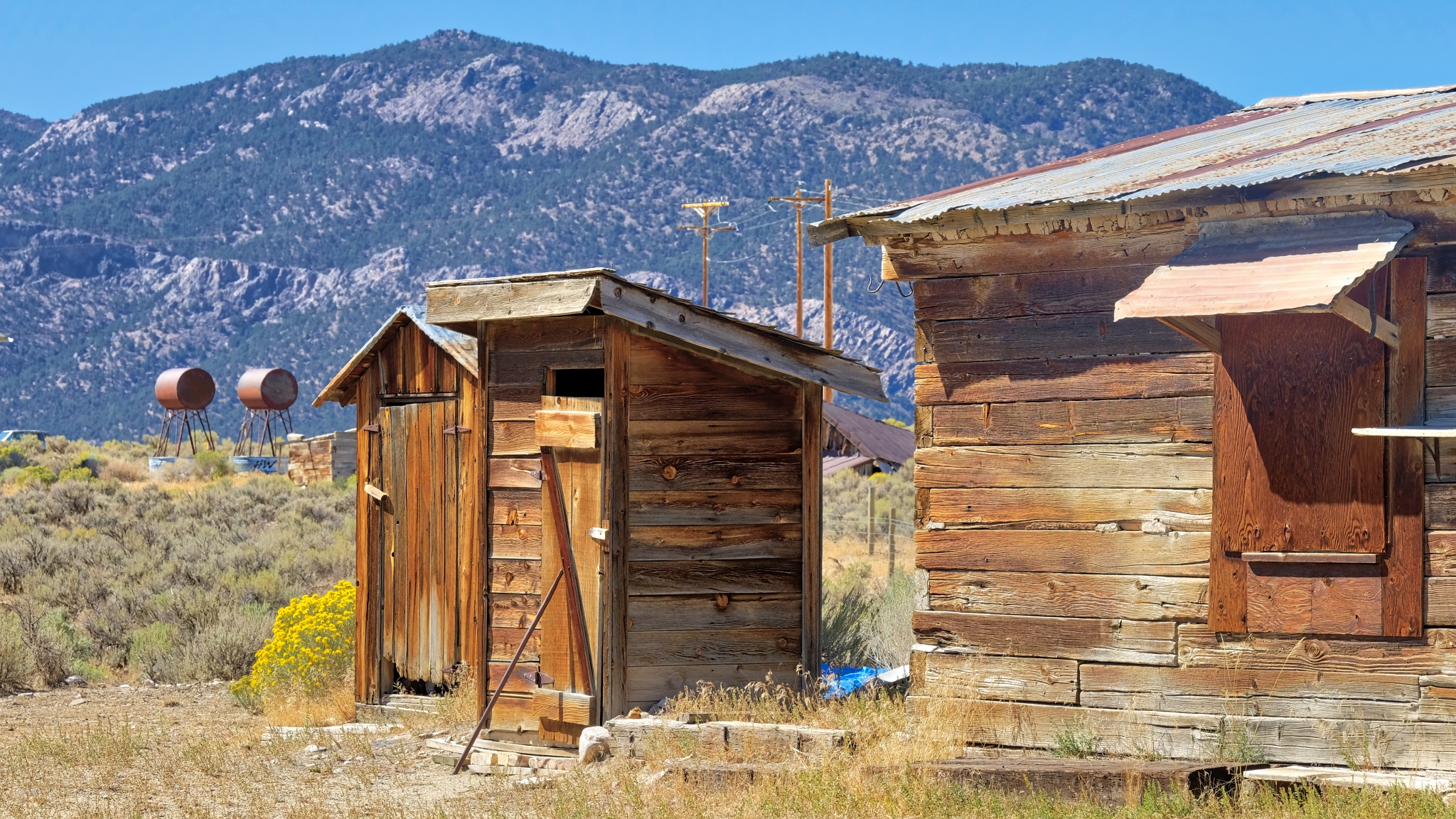 Outhouses.
Outhouses.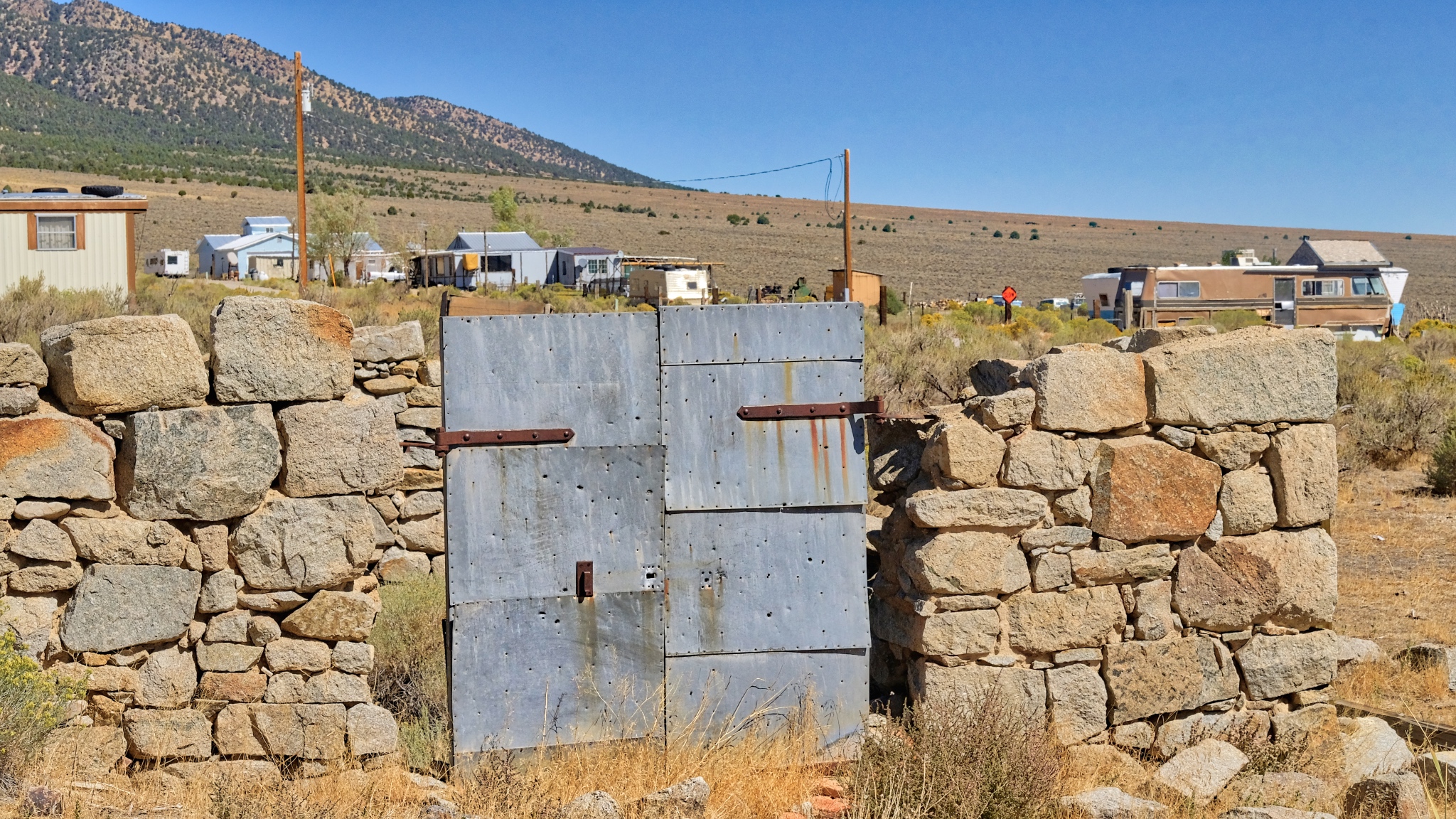 A strong wall and a steel gate to protect what is not there from what is no longer there . . . .
A strong wall and a steel gate to protect what is not there from what is no longer there . . . . And so I left Cherry Creek, Nevada and headed up the 8 miles of road back to US 93.
And so I left Cherry Creek, Nevada and headed up the 8 miles of road back to US 93.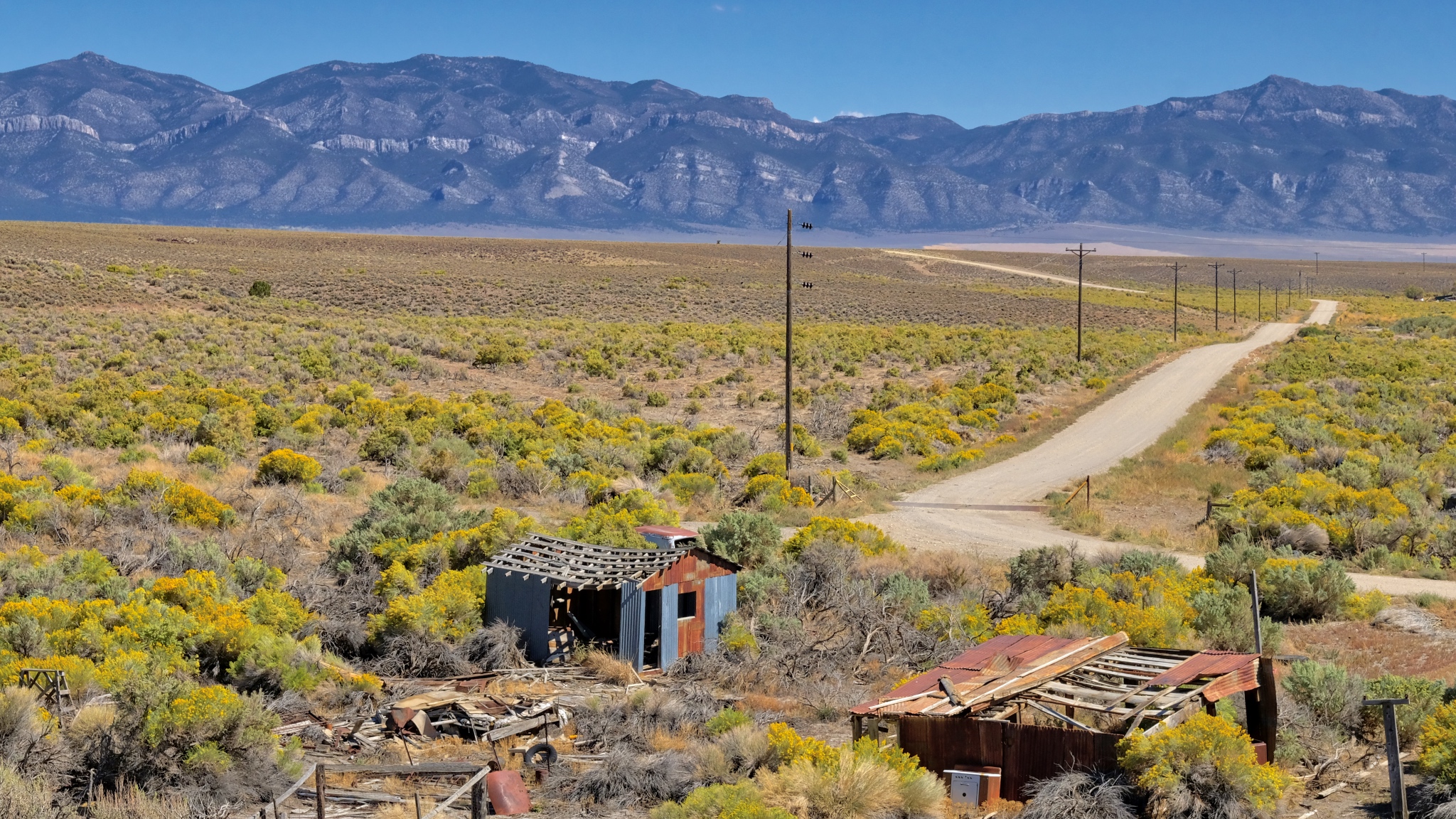 Further up the highway . . . more wonder: corrugation and dilapidation.
Further up the highway . . . more wonder: corrugation and dilapidation.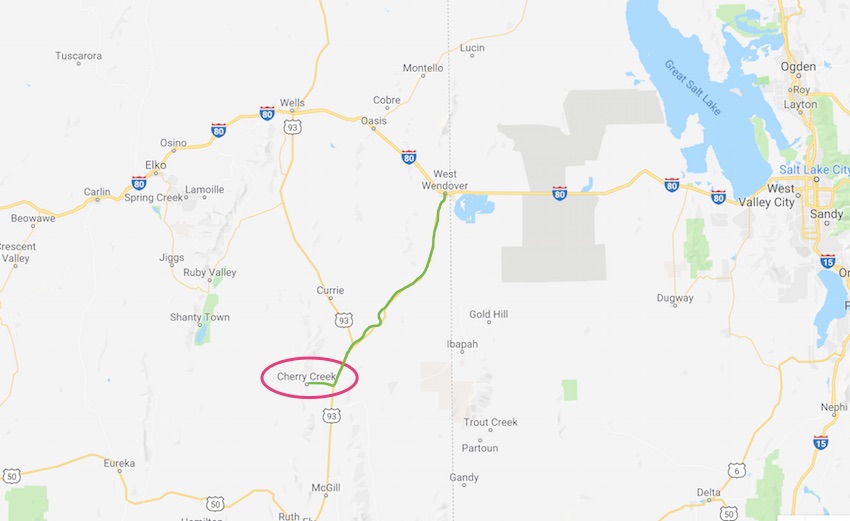 Cherry Creek is in the northeast corner of Nevada.
Cherry Creek is in the northeast corner of Nevada.Update on Thursday, September 20, 2018 at 4:51AM by
 Dr. Jeff Harper
Dr. Jeff Harper
 Dr. Jeff Harper
Dr. Jeff Harper
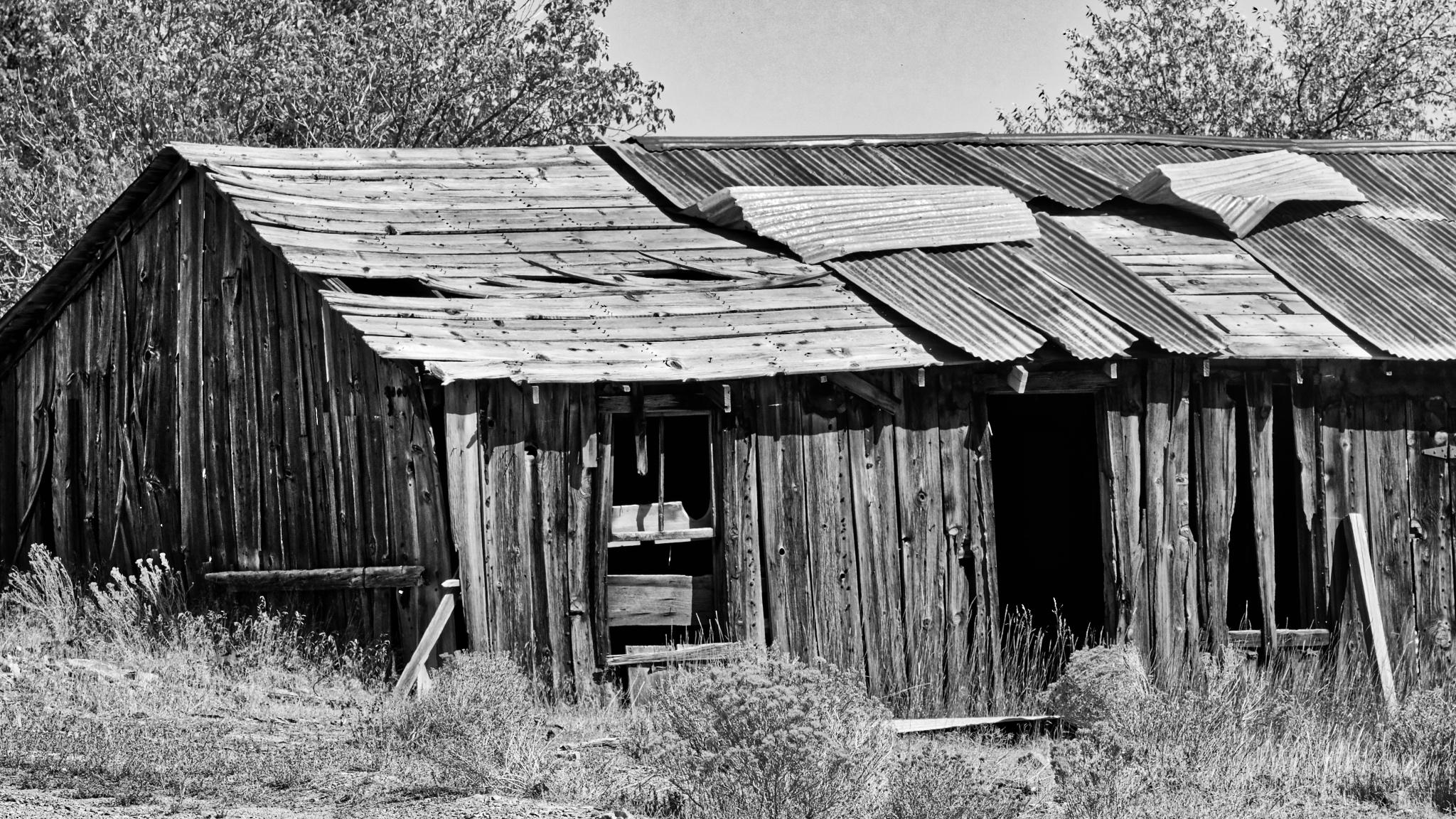 Some of the photos seem to lend themselves to black & white . . . and perhaps printning.
Some of the photos seem to lend themselves to black & white . . . and perhaps printning.Schreiner's Iris Gardens
 Friday, July 6, 2018 at 11:43PM
Friday, July 6, 2018 at 11:43PM  I spent a lovely day in early June at the amazing Schreiner's Iris Gardens outside of Keizer, in the beautiful Willamette Valley of Oregon.
I spent a lovely day in early June at the amazing Schreiner's Iris Gardens outside of Keizer, in the beautiful Willamette Valley of Oregon.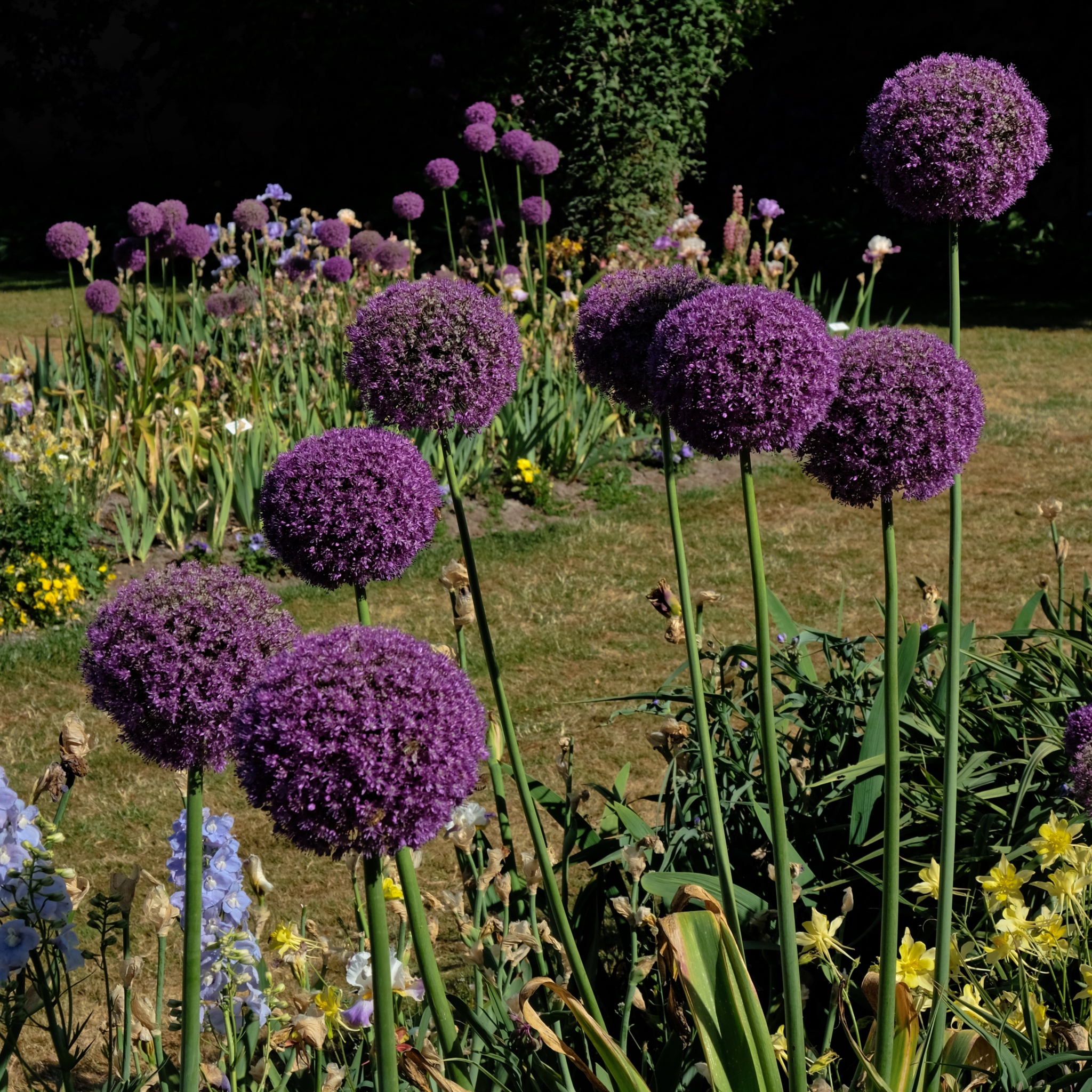 The garden holds flowers other than the iris . . . but first . . . the absolutely amazing iris:
The garden holds flowers other than the iris . . . but first . . . the absolutely amazing iris: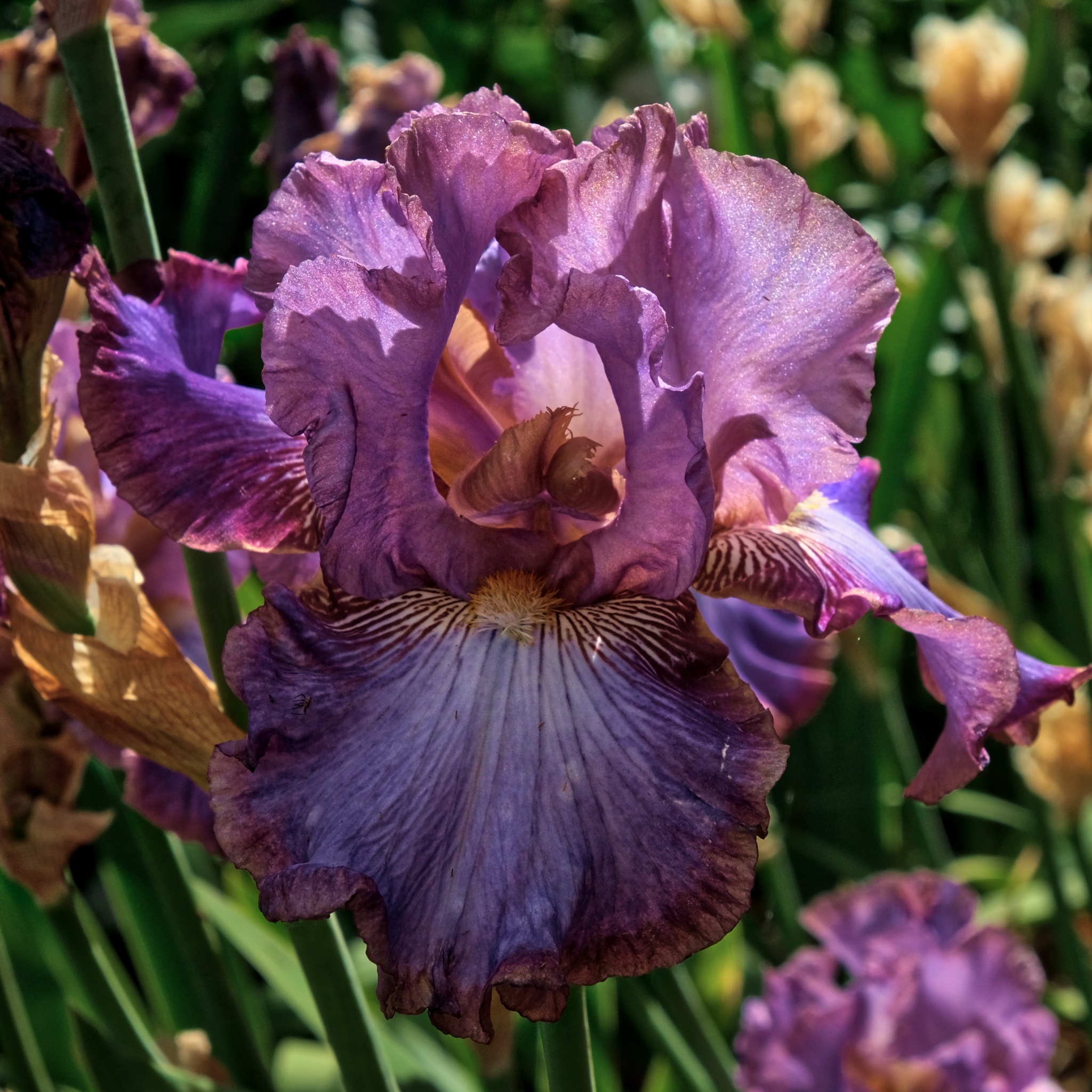 If you LOVE flowers as I do, and especially Irises (but not only), you will absolutely love this garden!!!
If you LOVE flowers as I do, and especially Irises (but not only), you will absolutely love this garden!!! I did not know there were so many kinds of Irises!
I did not know there were so many kinds of Irises!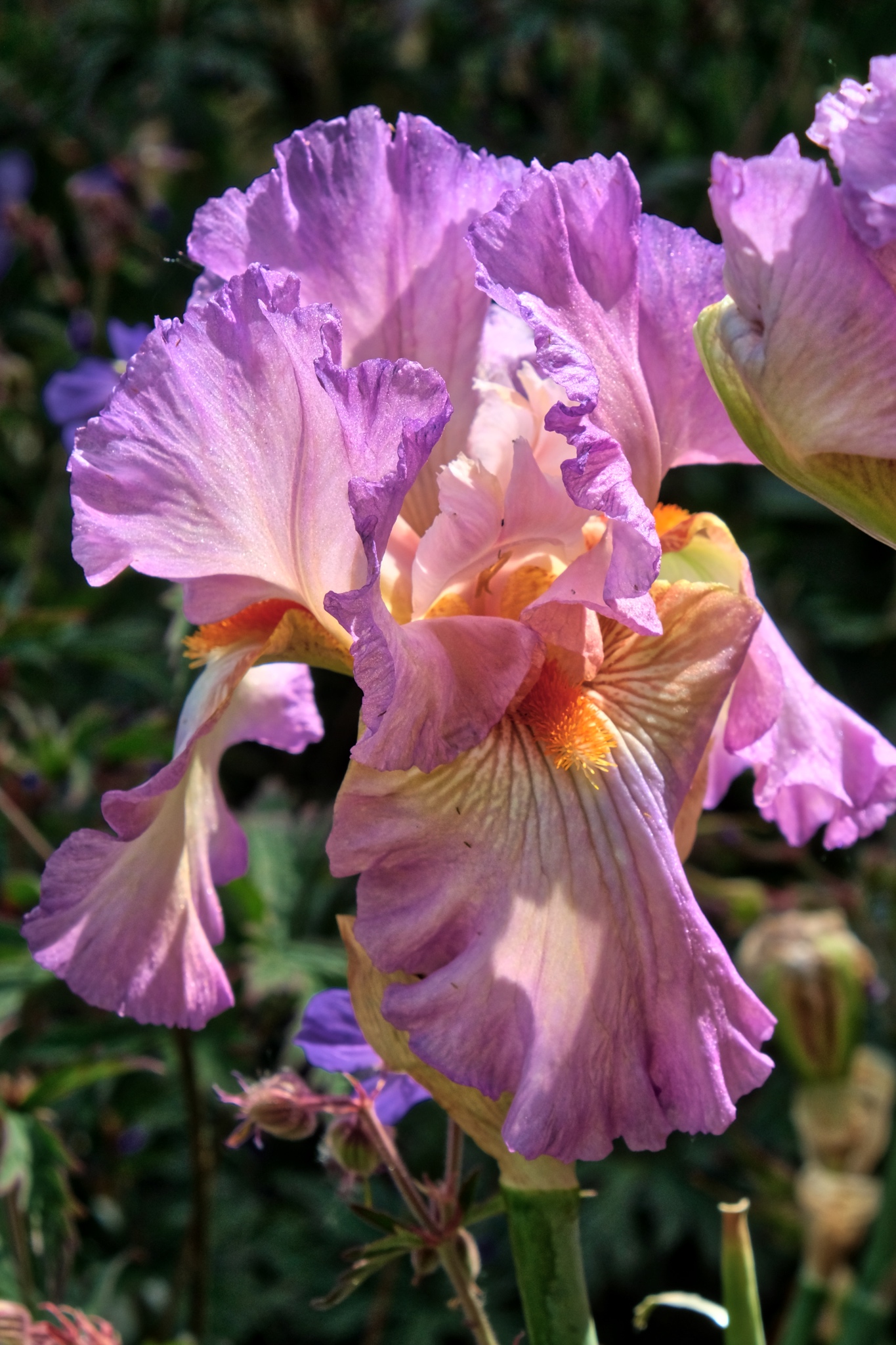 I rode my bike over to the gardens just kin time for the 'magic' evening light . . . and was rewarded!
I rode my bike over to the gardens just kin time for the 'magic' evening light . . . and was rewarded!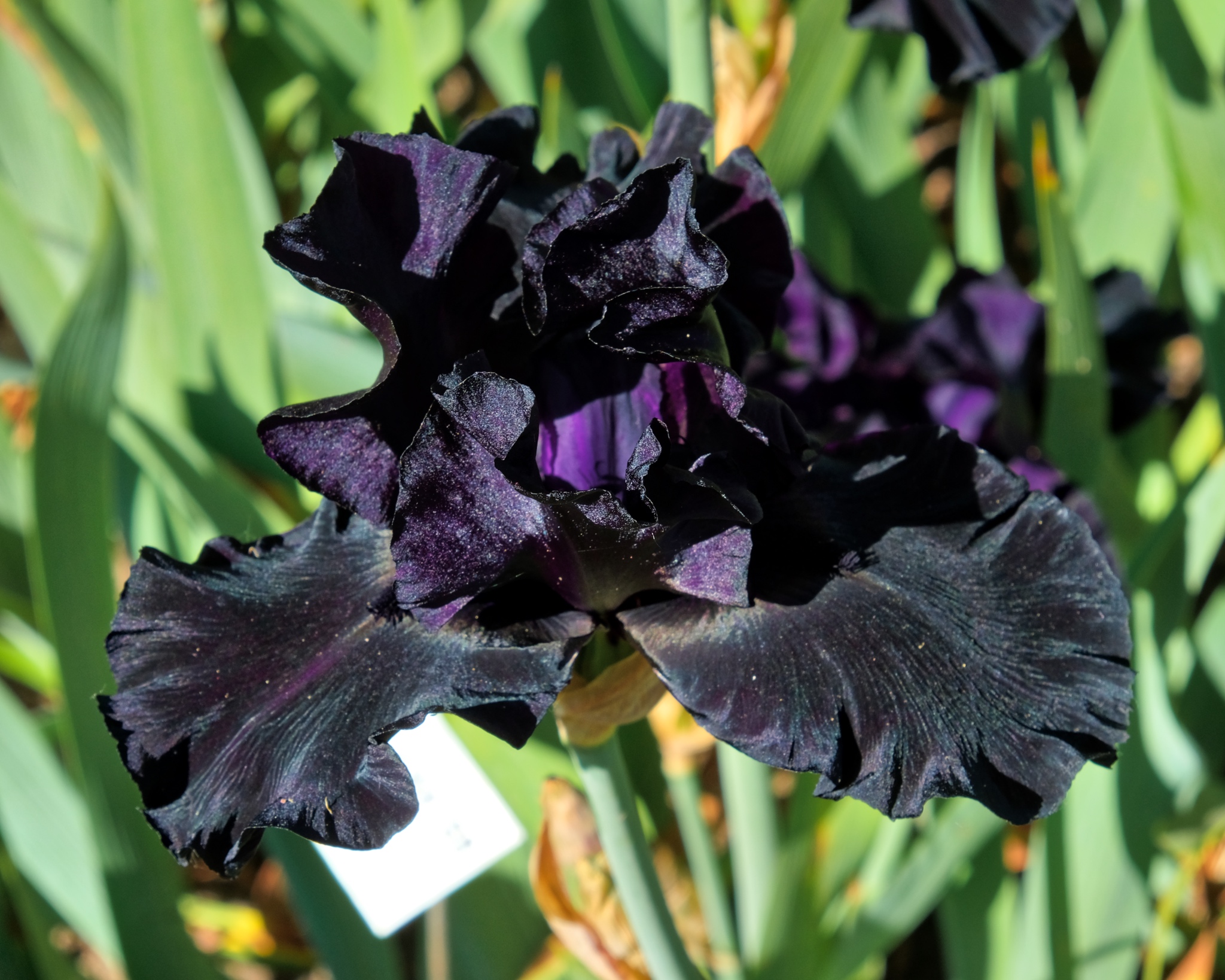 Yes, there are even BLACK irises!
Yes, there are even BLACK irises!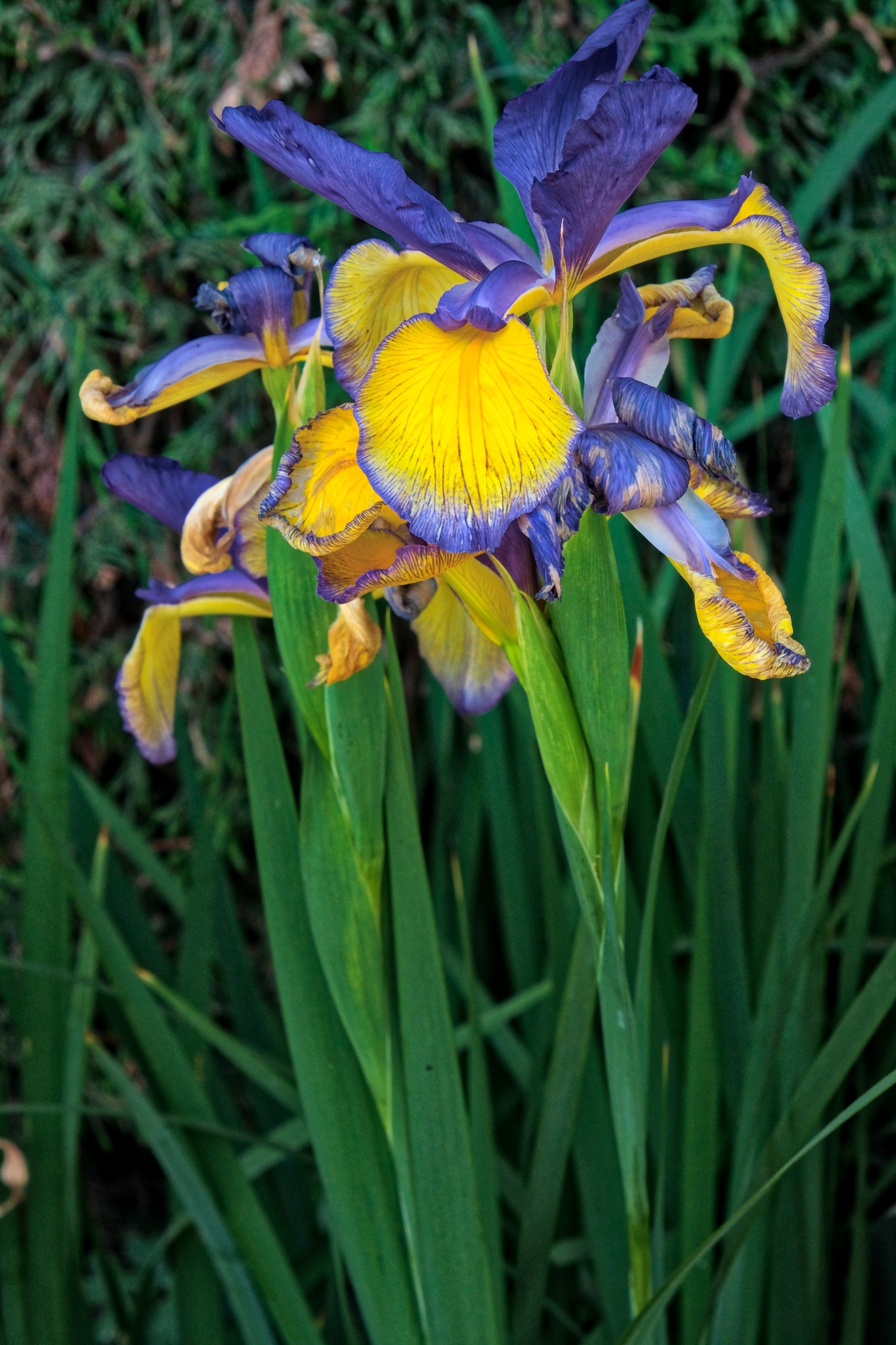 When I think of Irises these are what I usually picture . . .
When I think of Irises these are what I usually picture . . .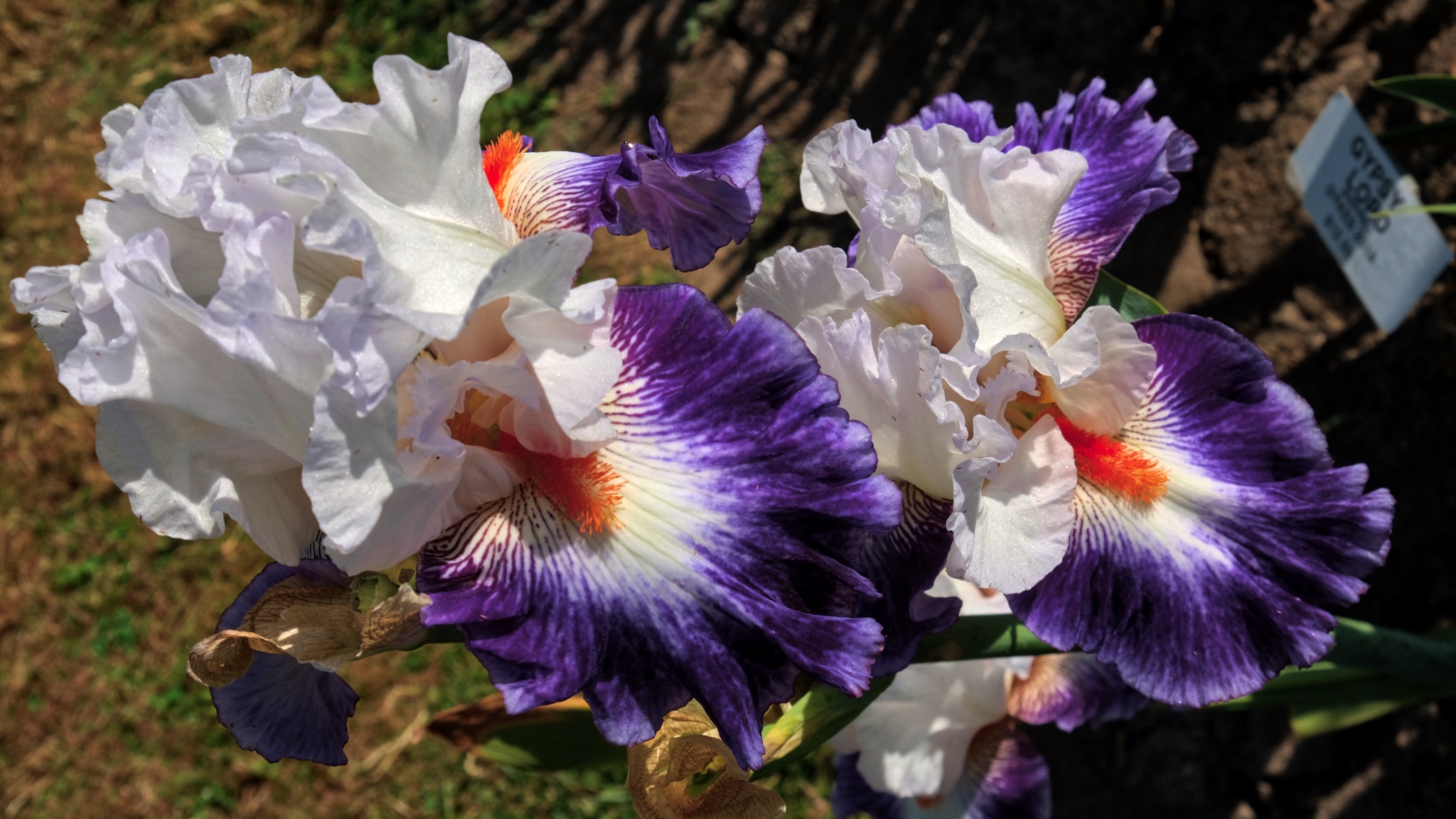 . . . I DO NOT usually think of these . . . Gypsy Lobo Iris. WOW!
. . . I DO NOT usually think of these . . . Gypsy Lobo Iris. WOW!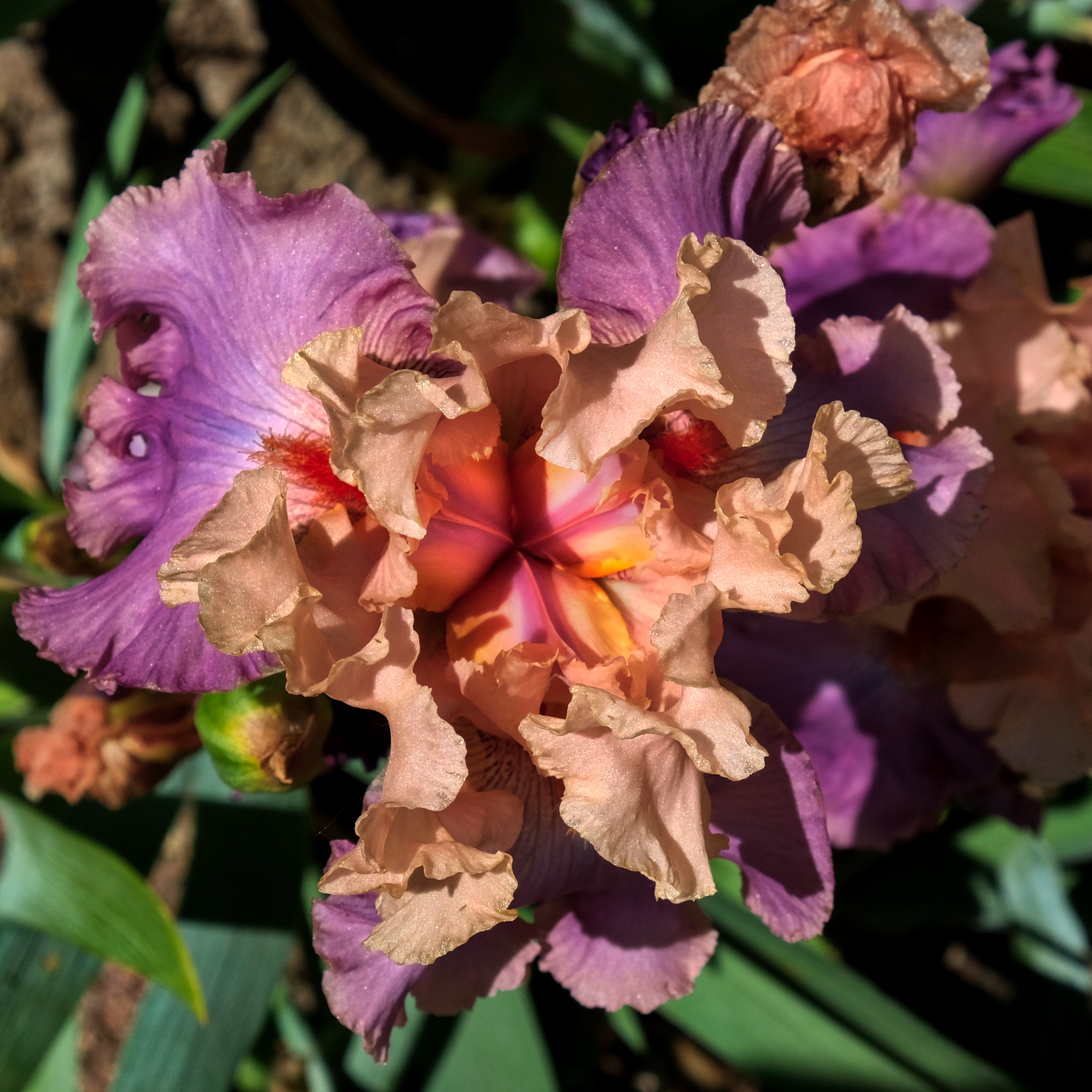 The heart of an amazing iris!
The heart of an amazing iris!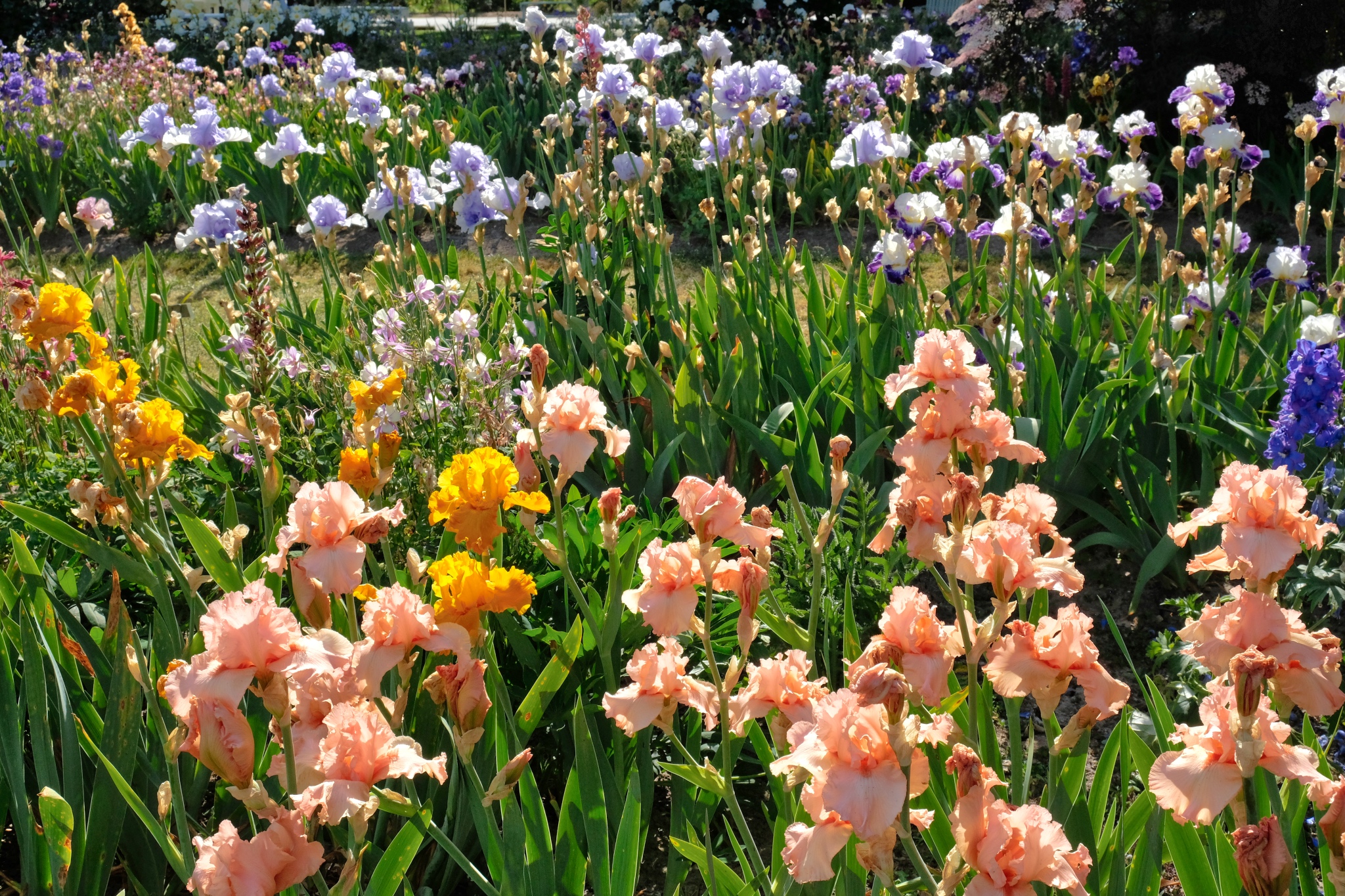 There were so many flowers to study . . .
There were so many flowers to study . . .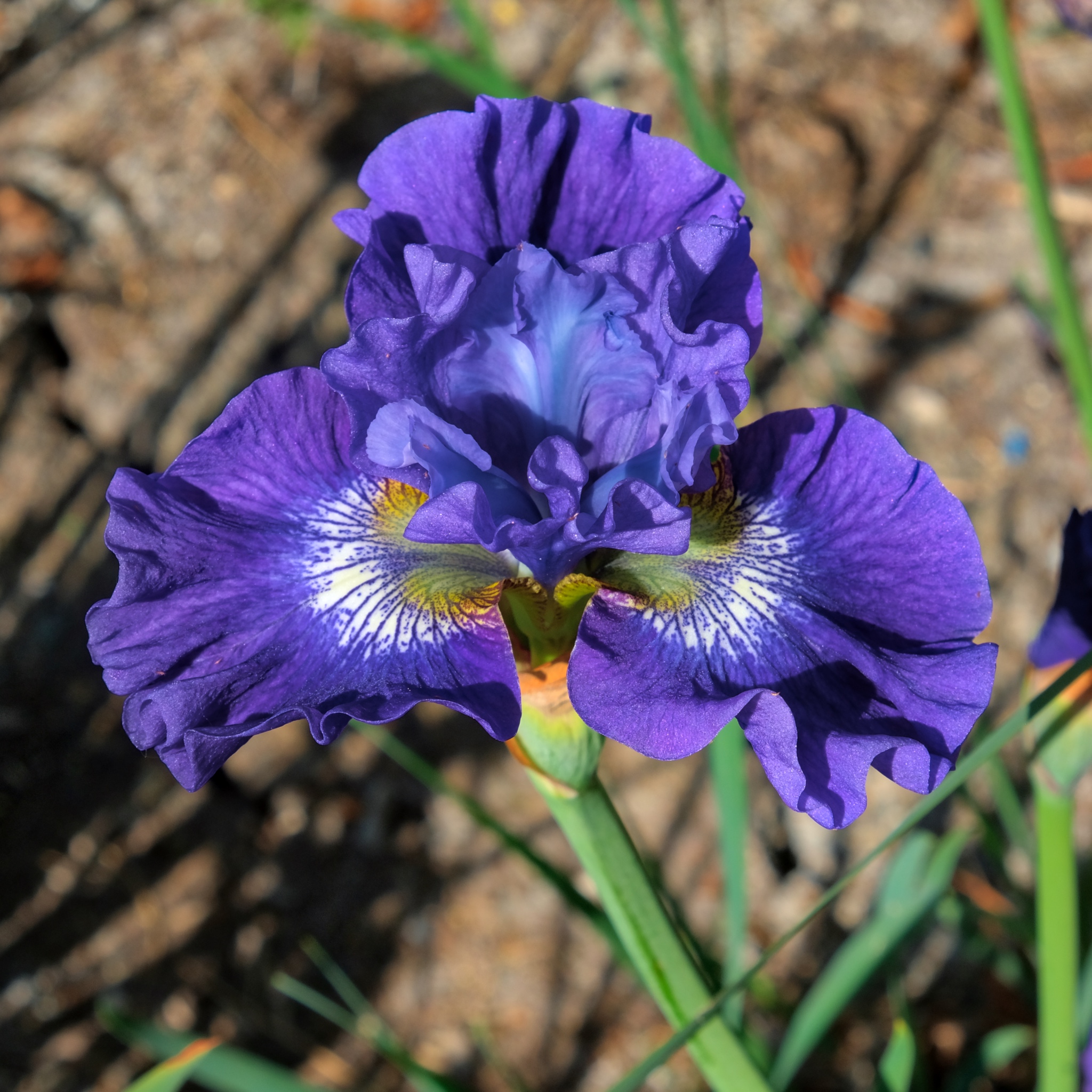 A purple/blue iris.
A purple/blue iris.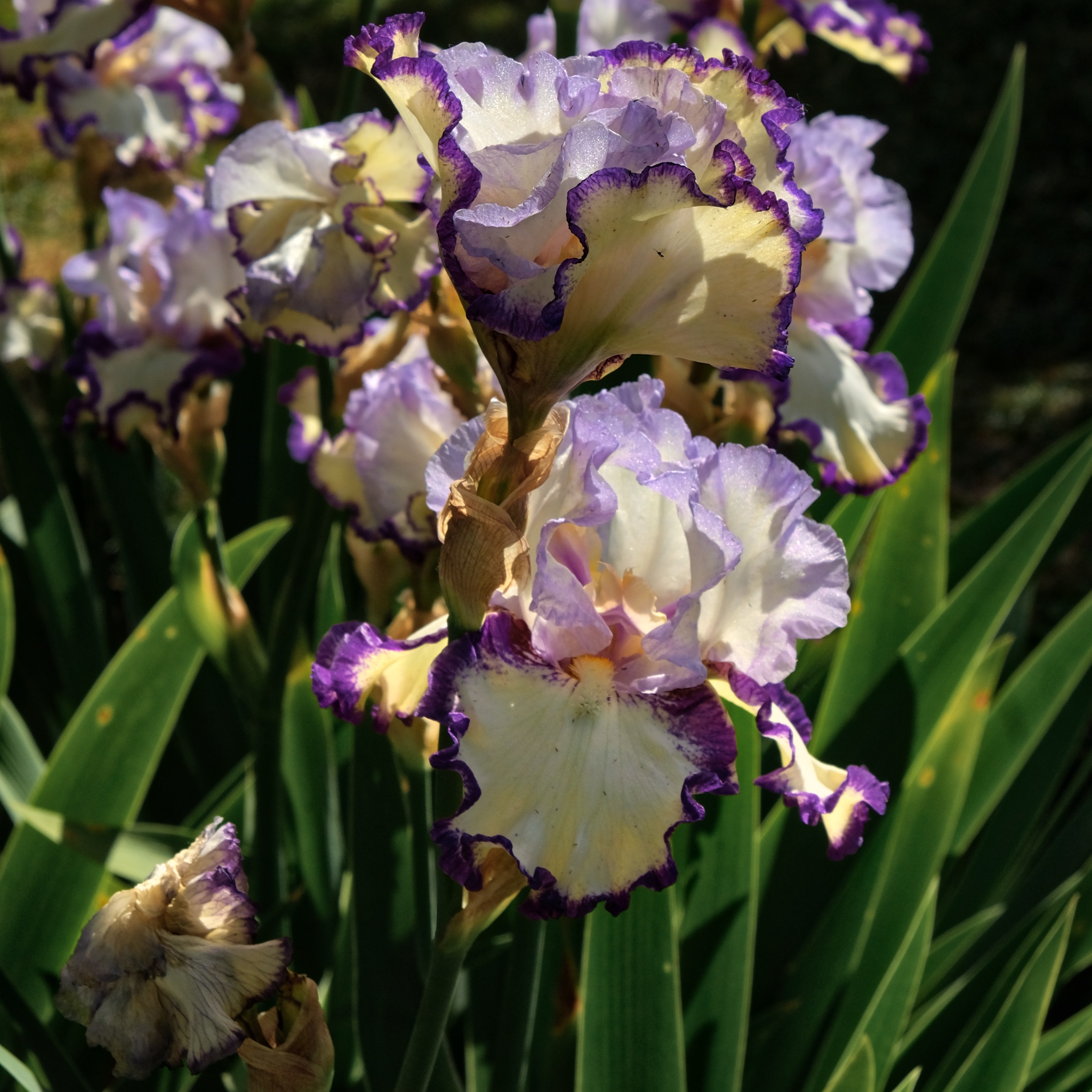 A jumble of white and purple irises.
A jumble of white and purple irises. The combination of colors seemed endless.
The combination of colors seemed endless.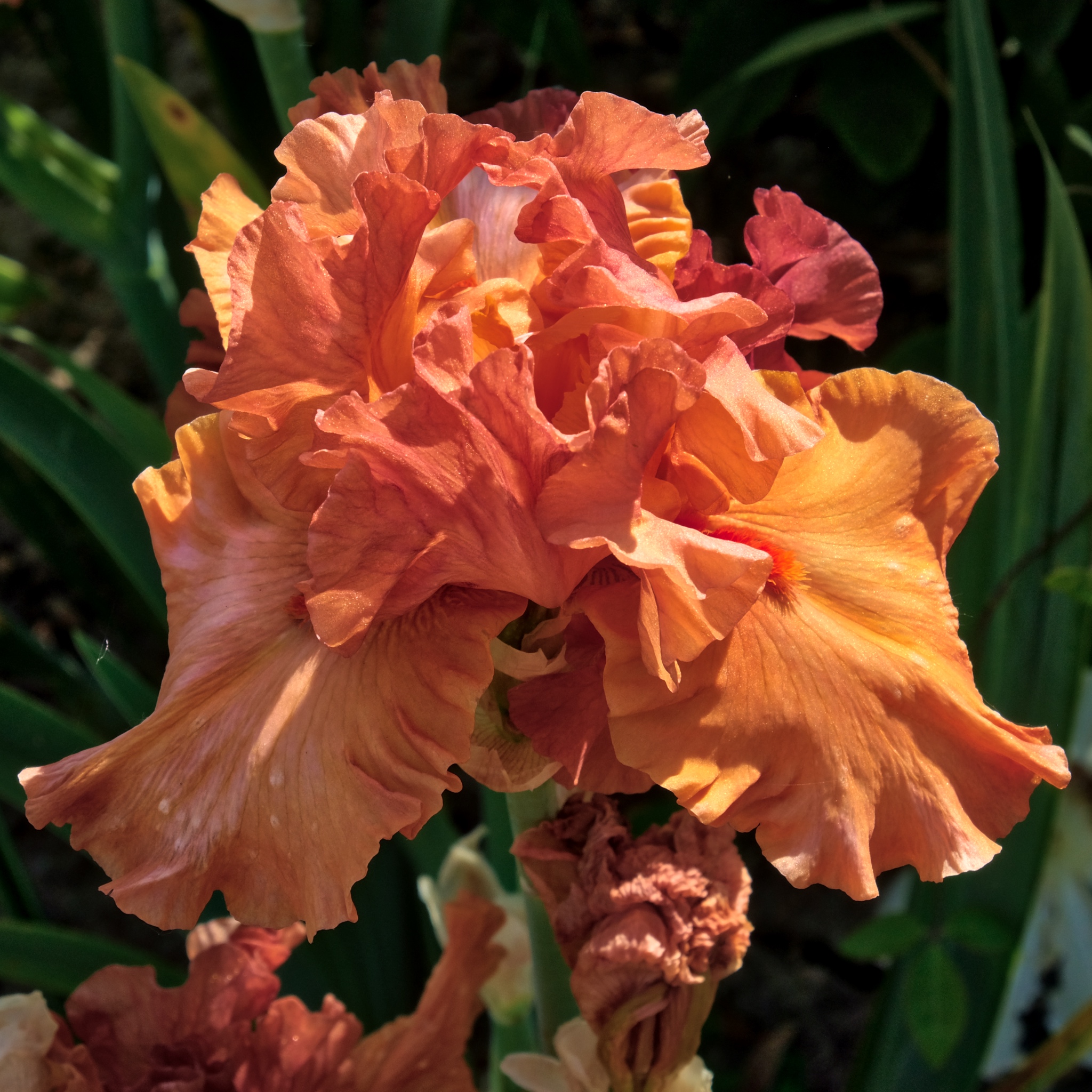 An orange iris.
An orange iris.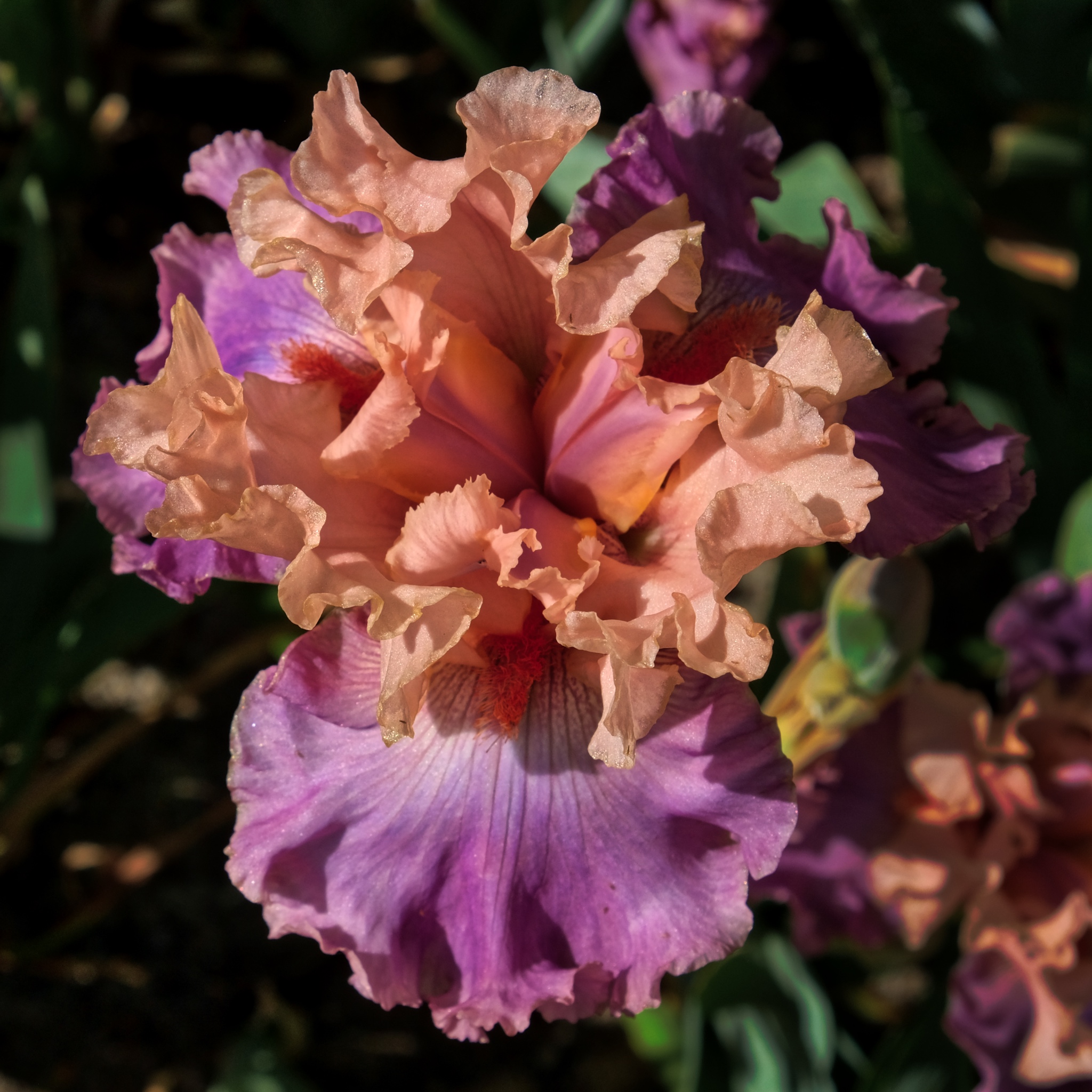 An orange and purple iris.
An orange and purple iris.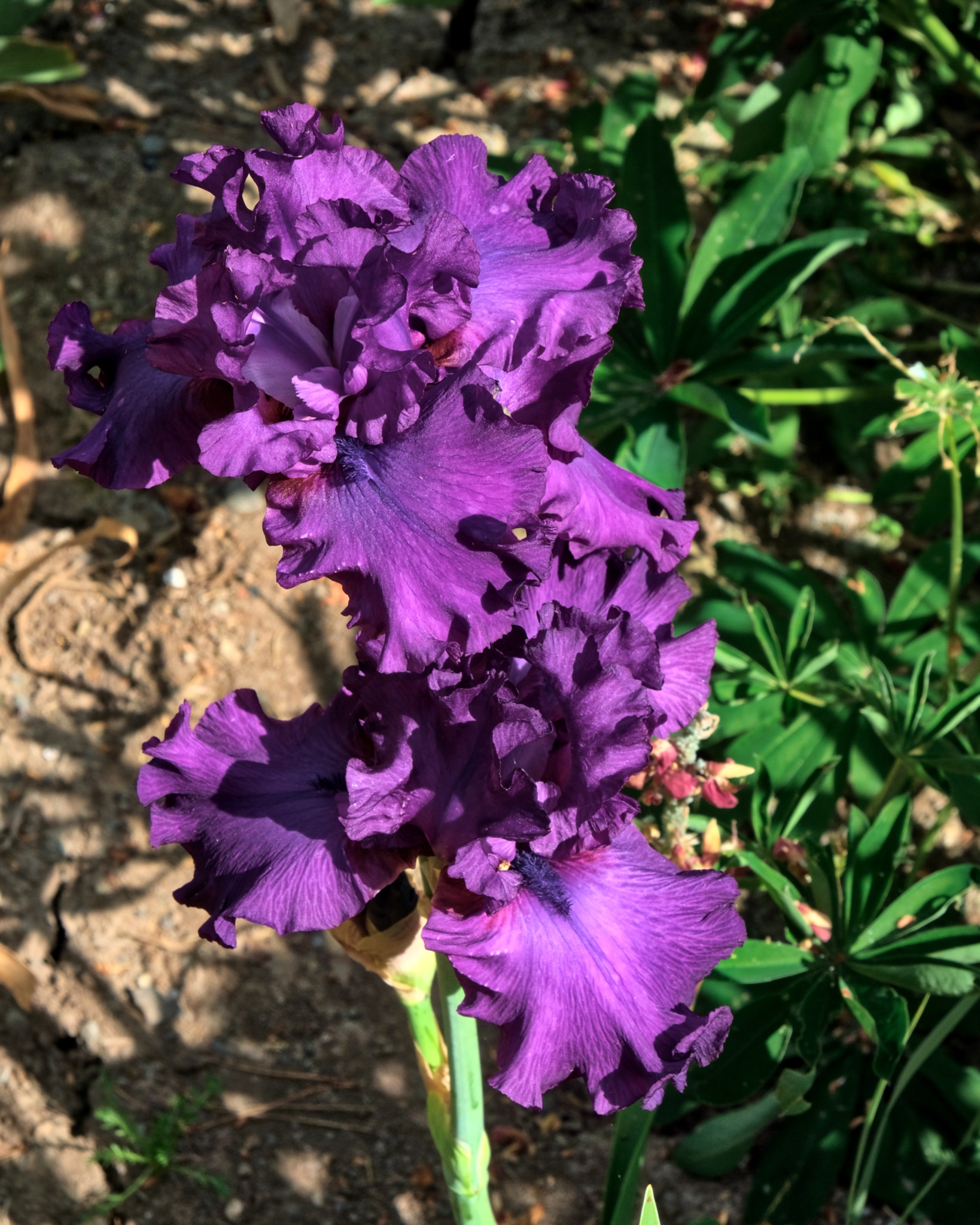 A purple iris . . .
A purple iris . . .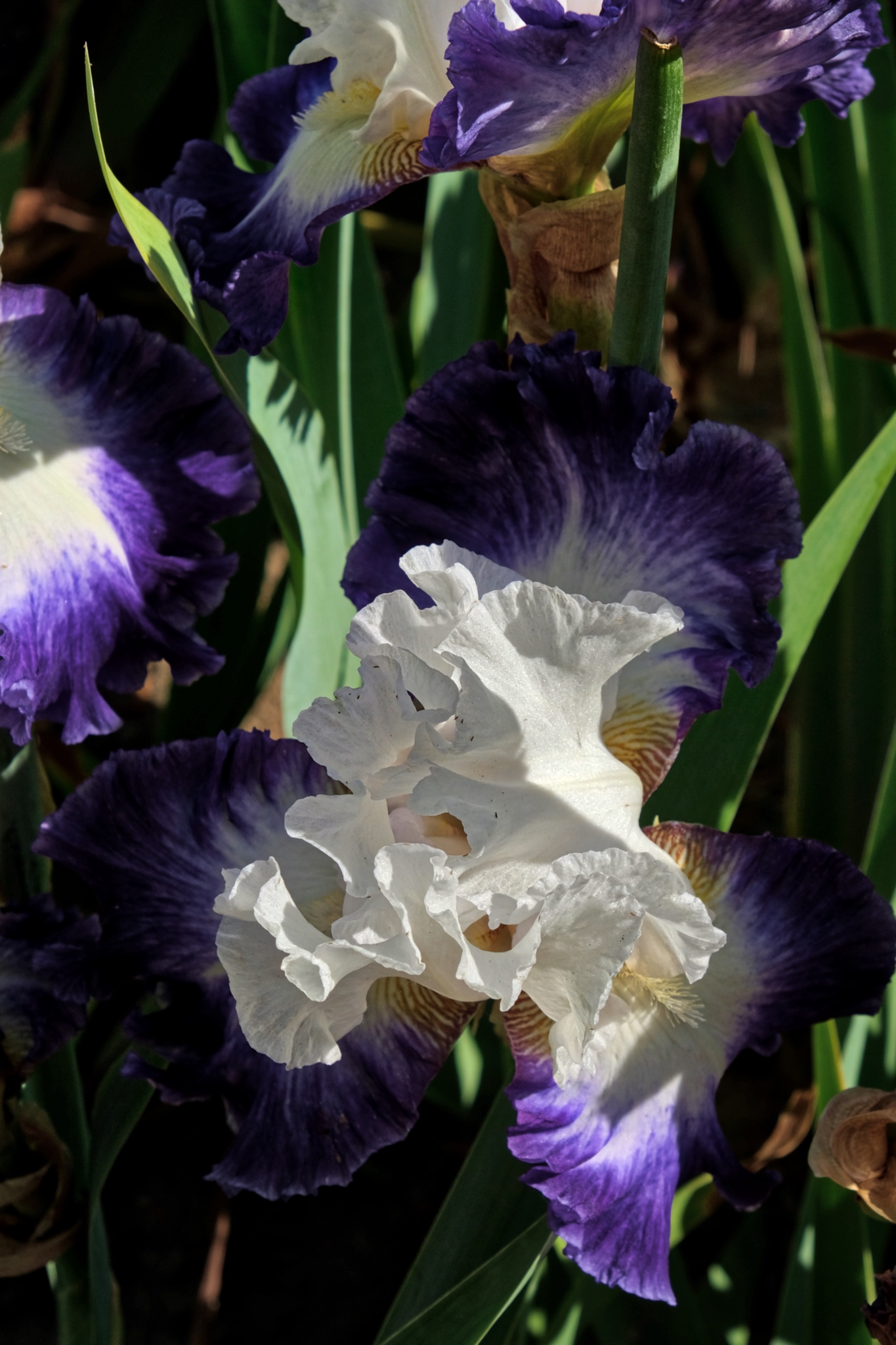 Purple and white . . .
Purple and white . . .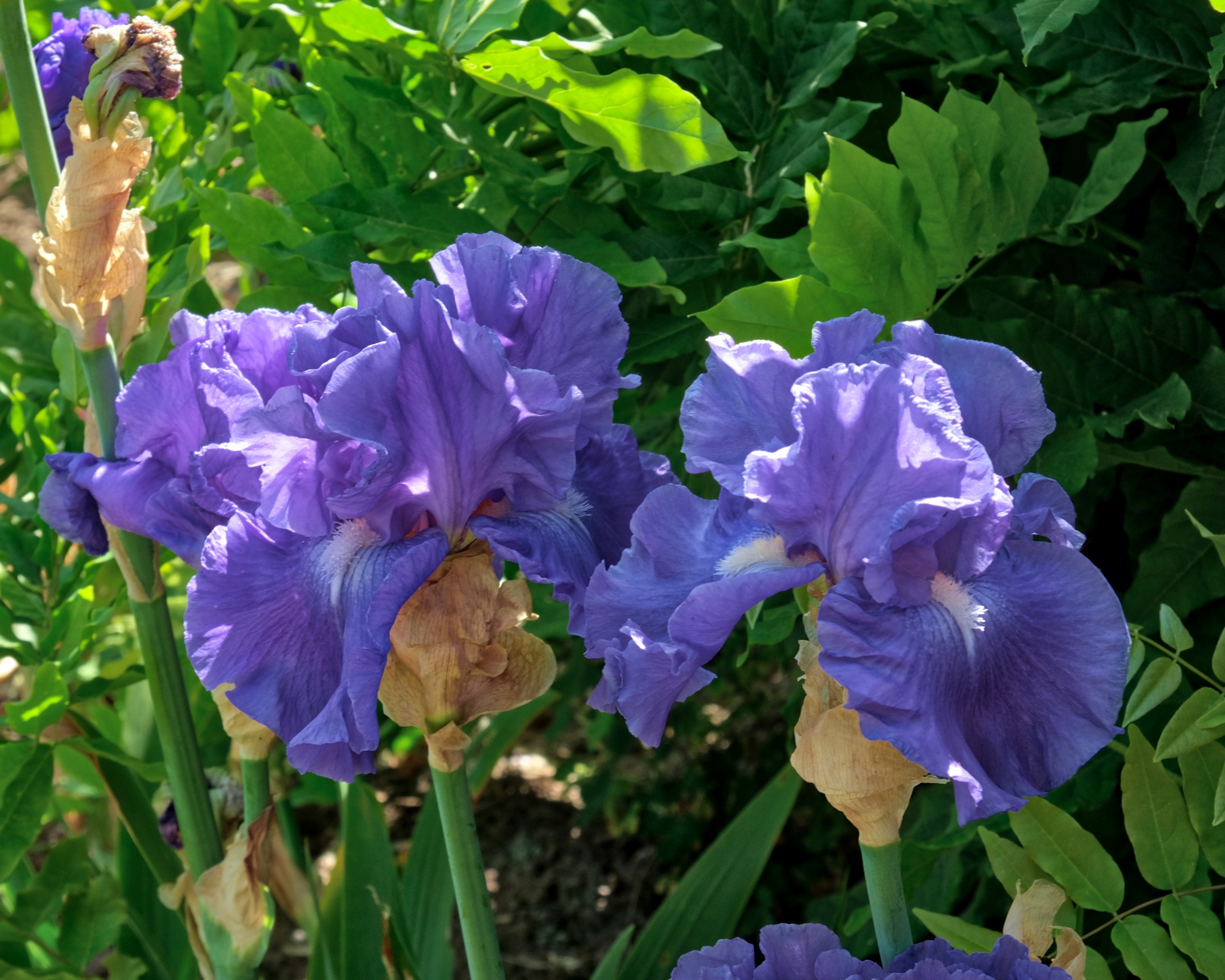 Many shades of color . . .
Many shades of color . . .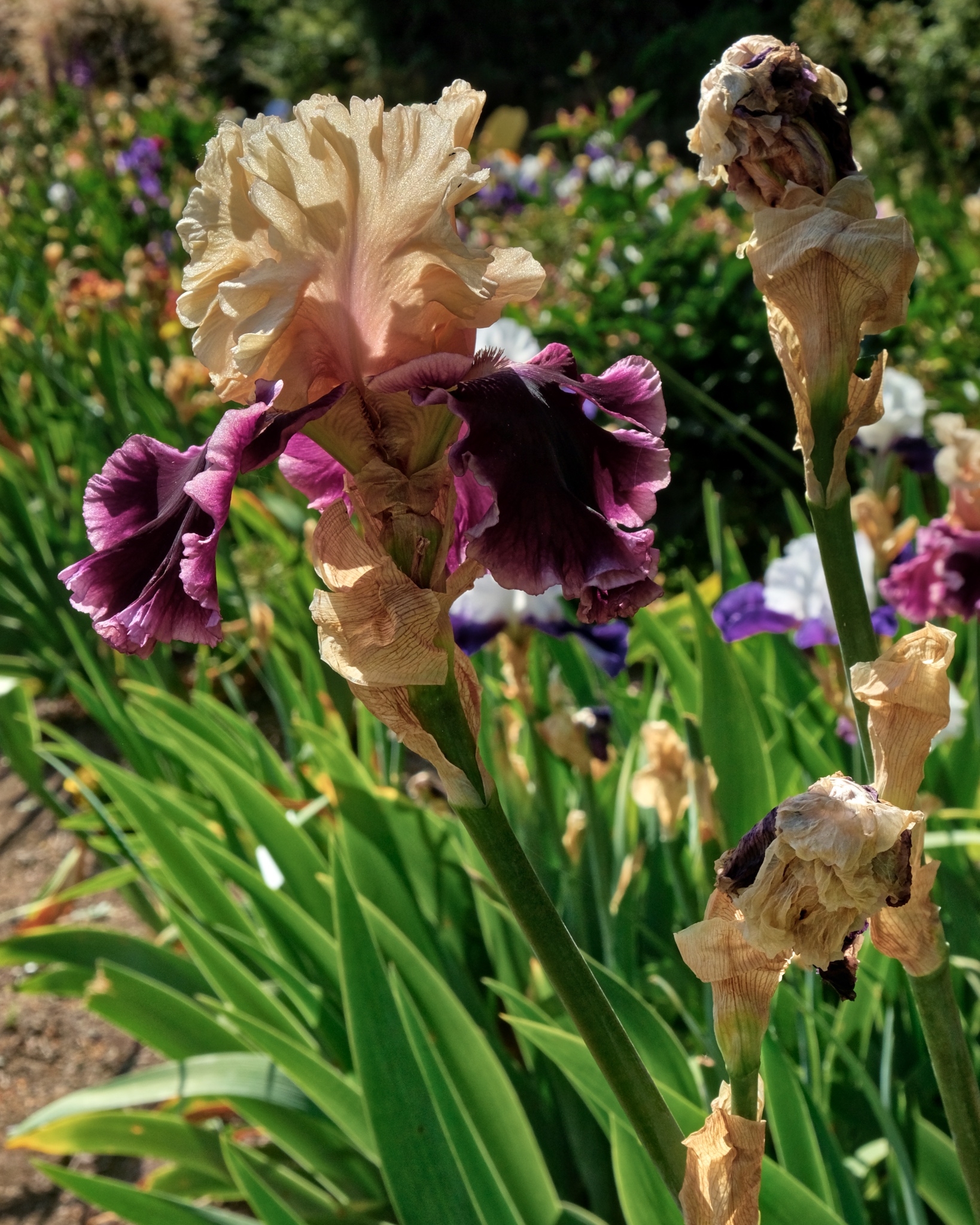 The marvelous iris!
The marvelous iris!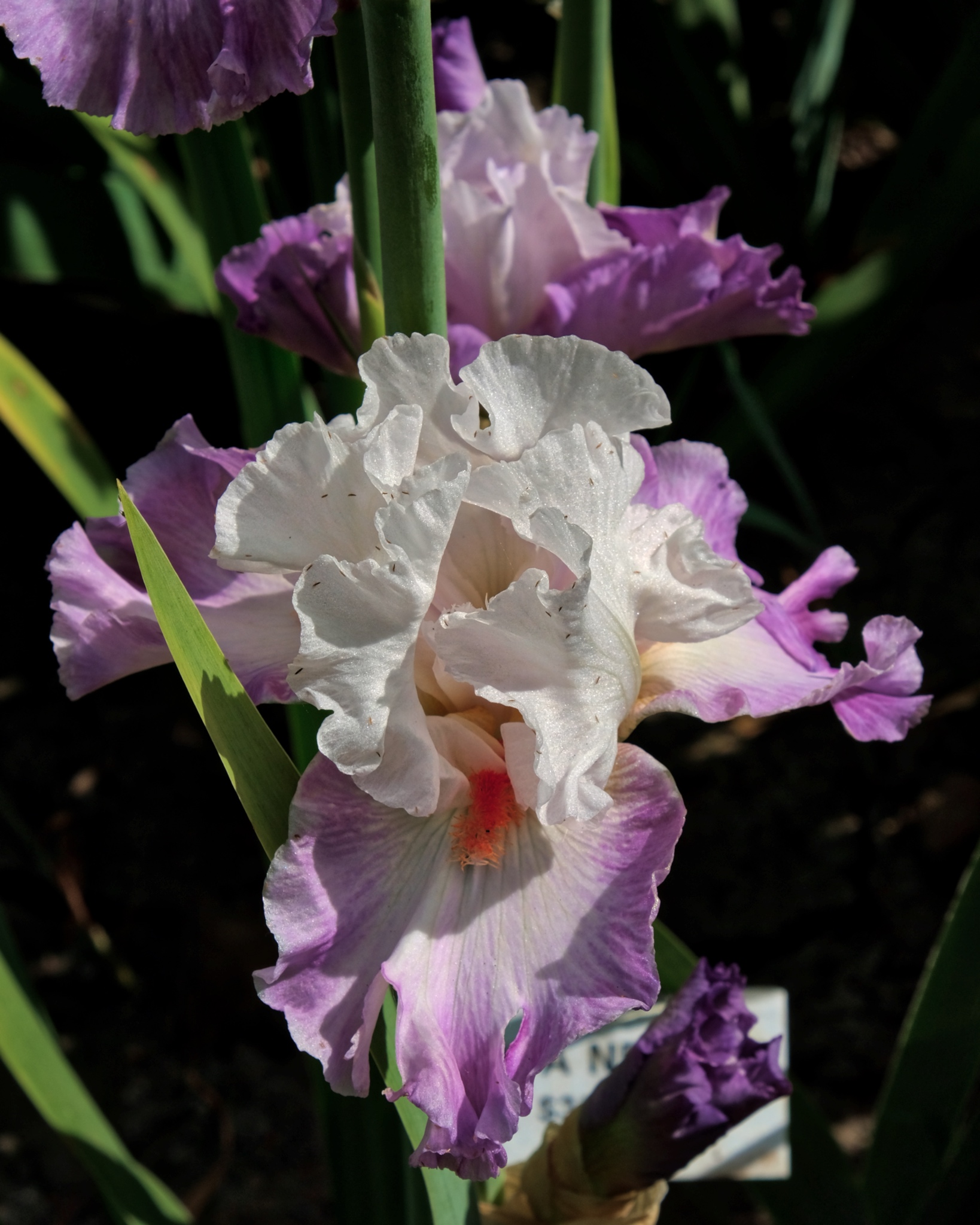 The whites were so pure against the purple . . .
The whites were so pure against the purple . . .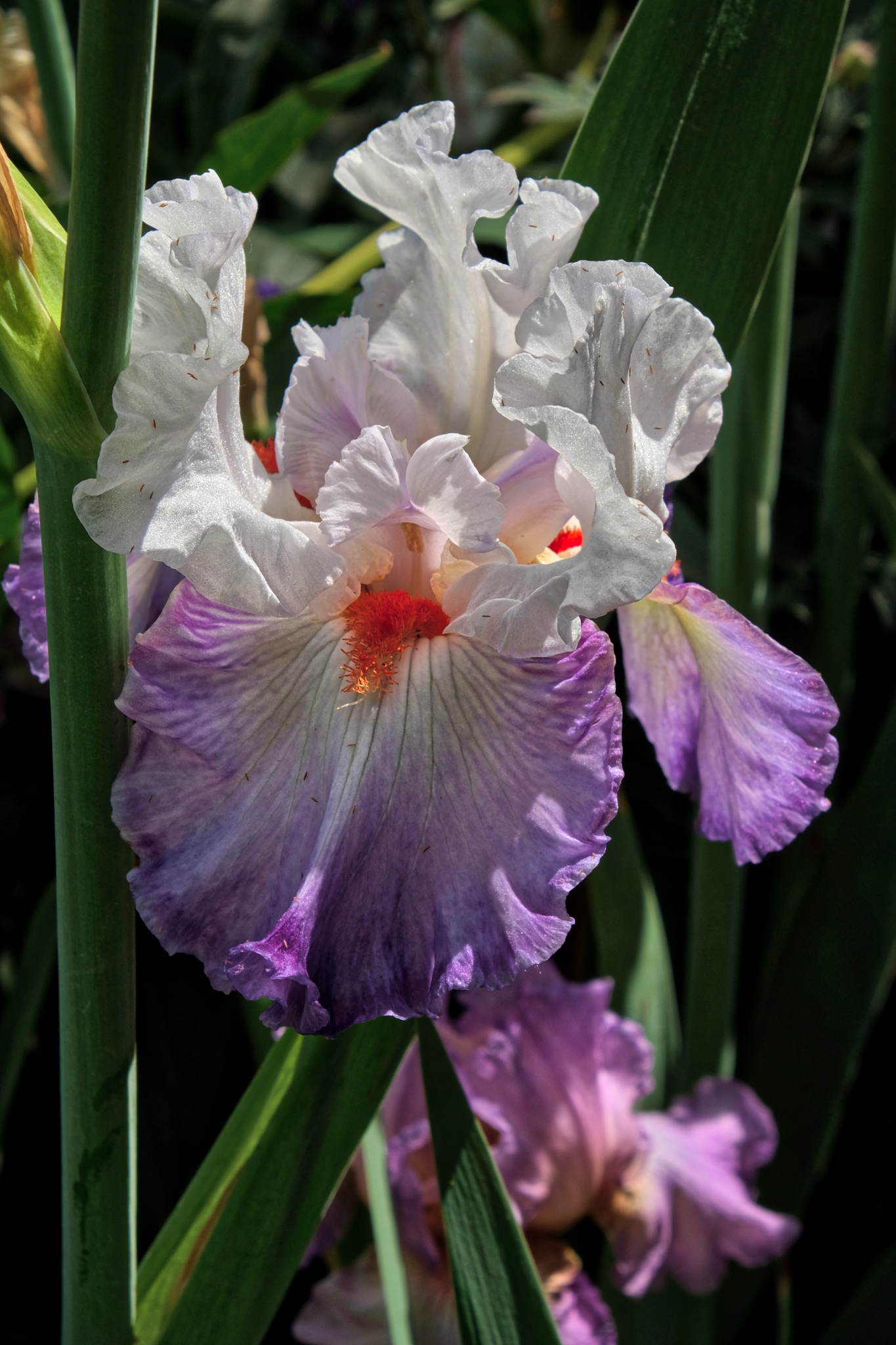 A splash of orange at the center . . .
A splash of orange at the center . . . An otherworldly iris!!!
An otherworldly iris!!!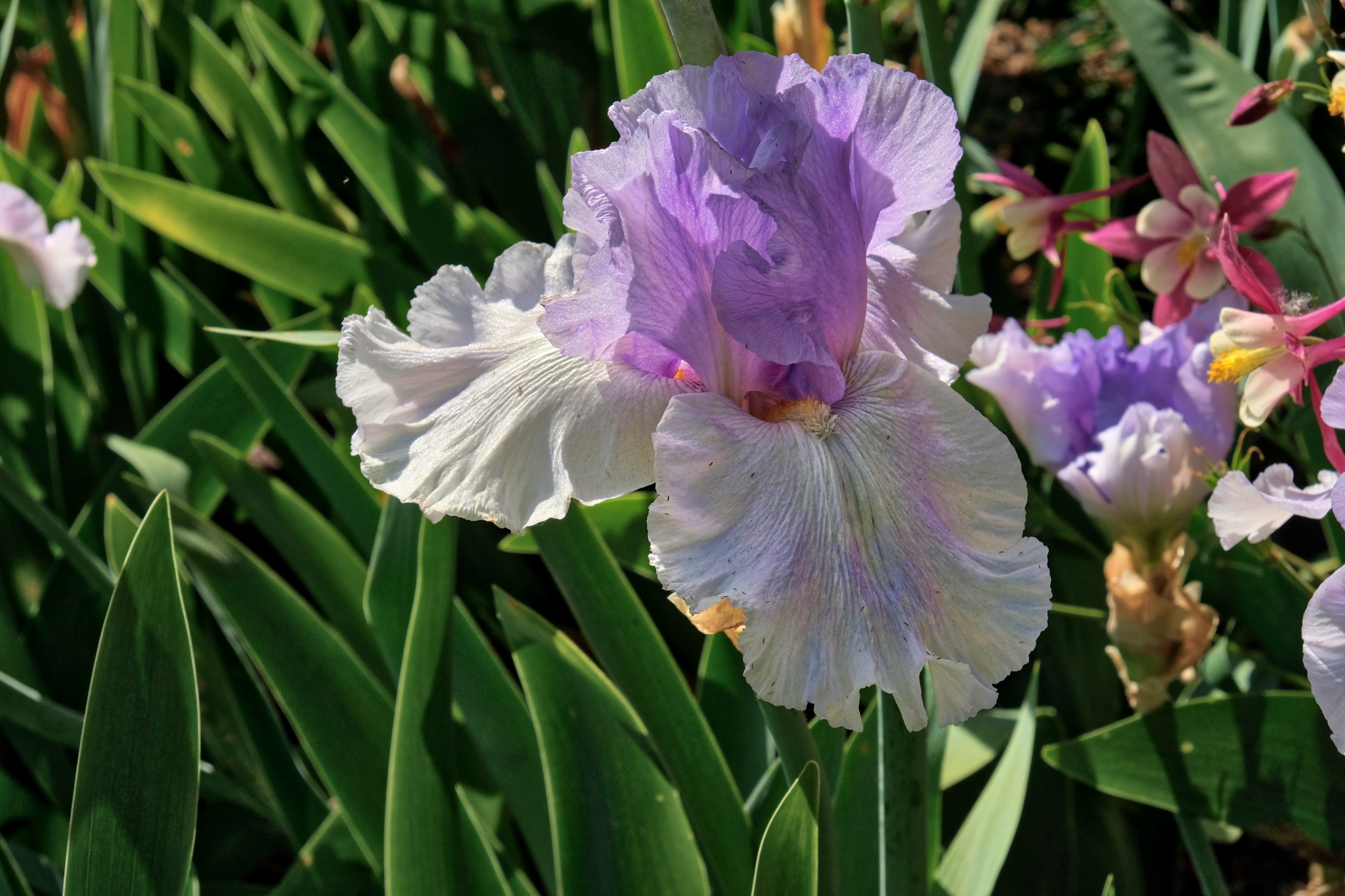 Such a beautiful array of irises.
Such a beautiful array of irises. White, yellow, magenta, and purple . . .wow!
White, yellow, magenta, and purple . . .wow!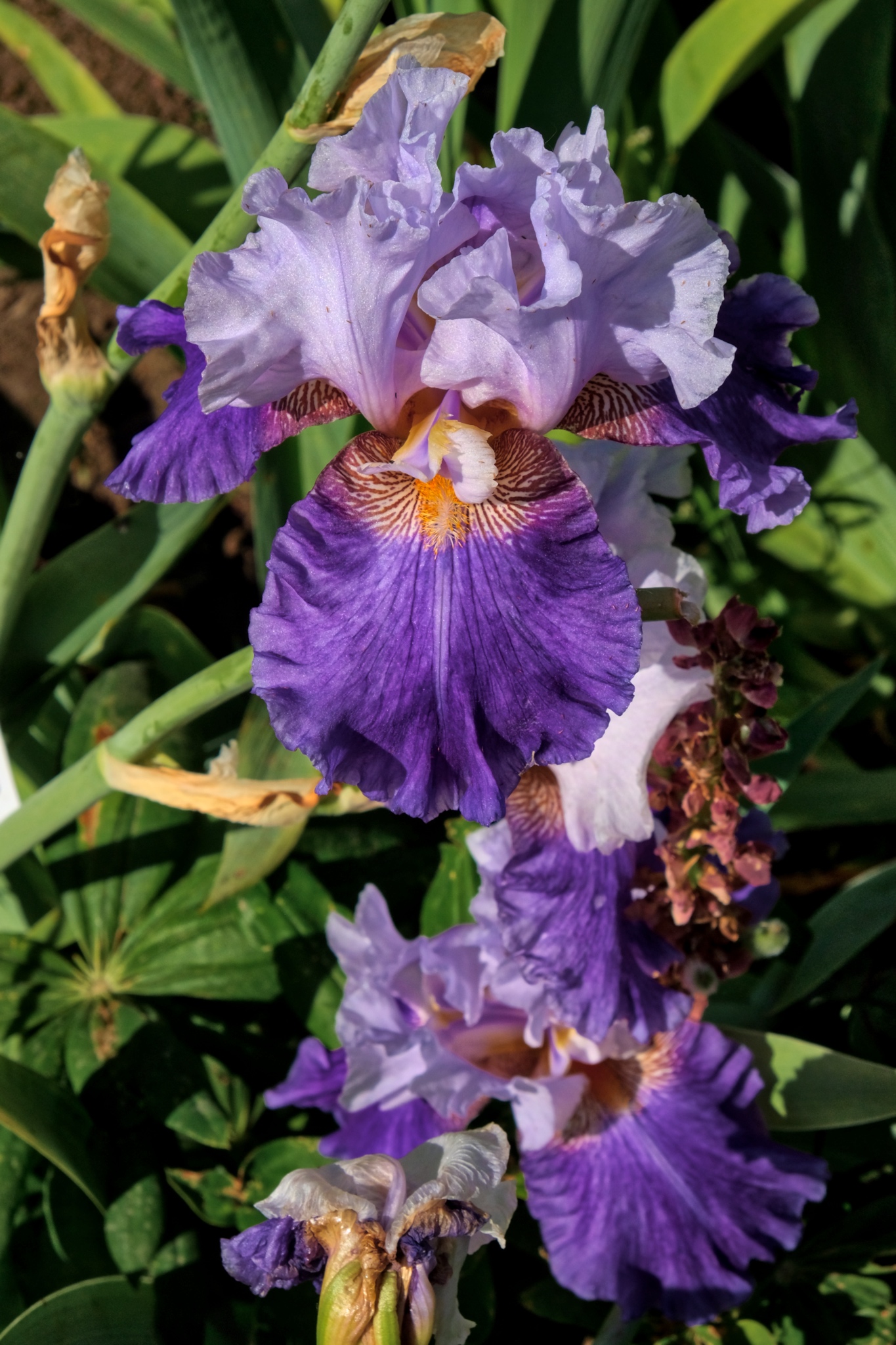 Pattern, color, shape . . .
Pattern, color, shape . . .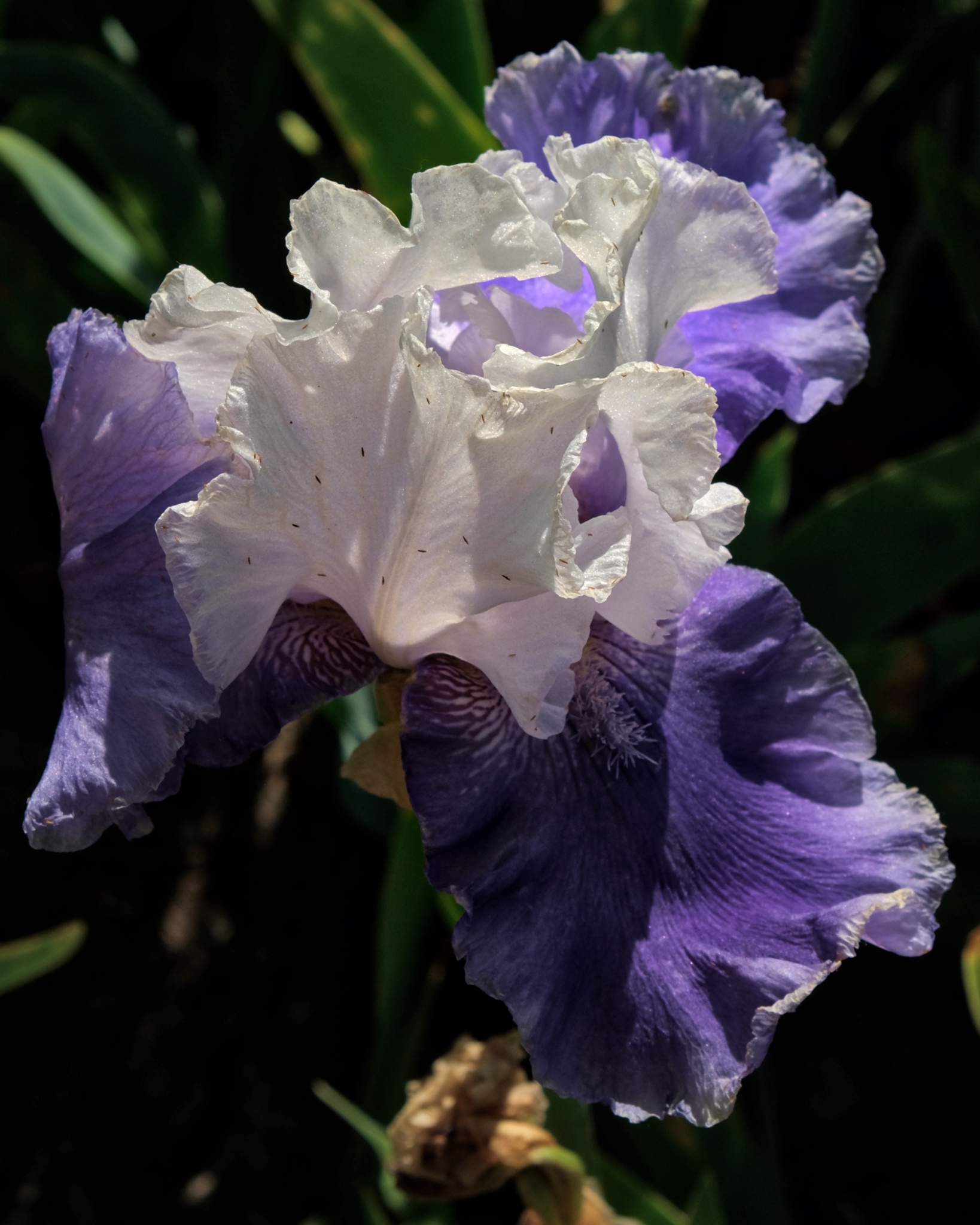 Delicate and fine . . .
Delicate and fine . . .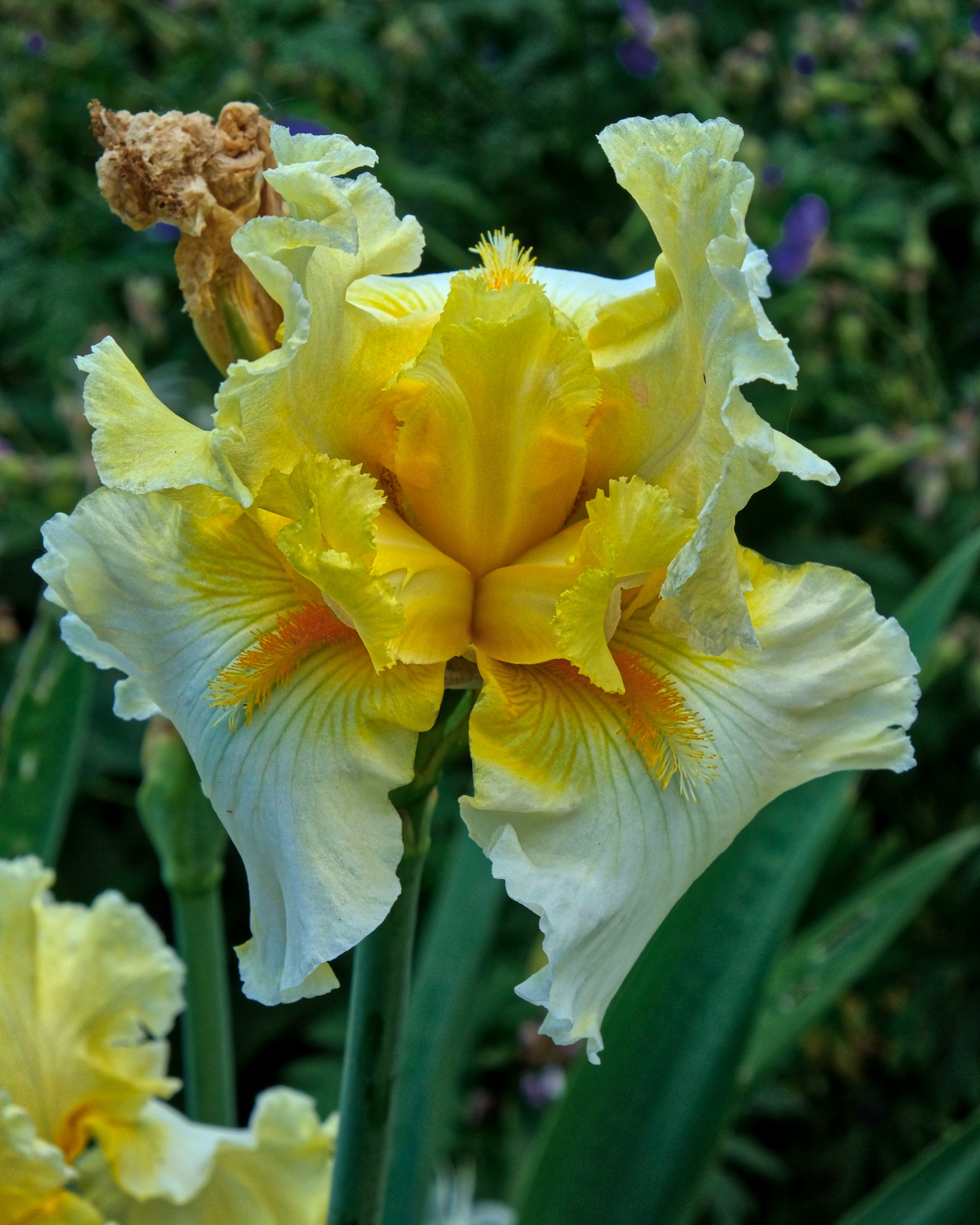 Strong yellow . . .
Strong yellow . . .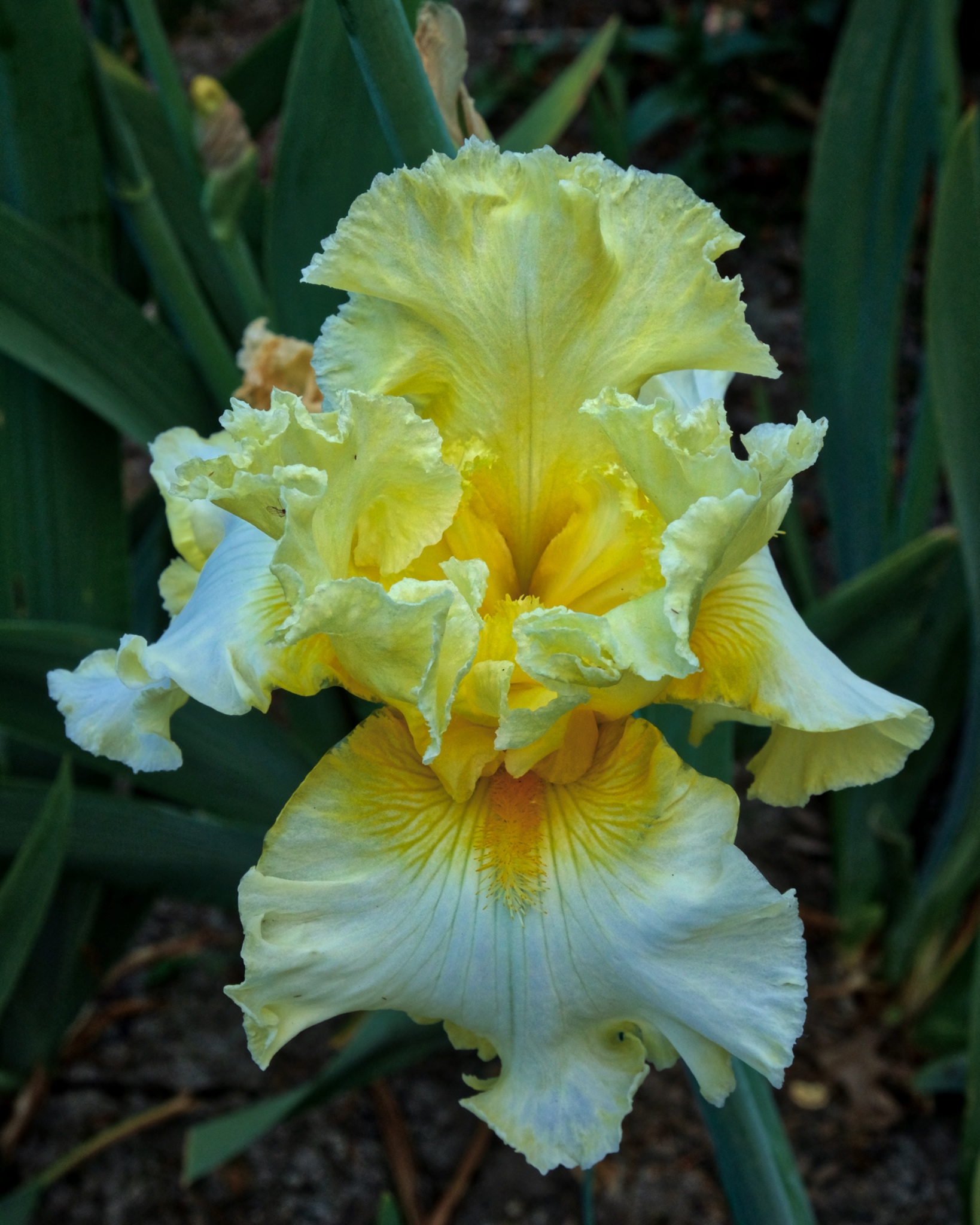 Pastel yellow and white . . .
Pastel yellow and white . . .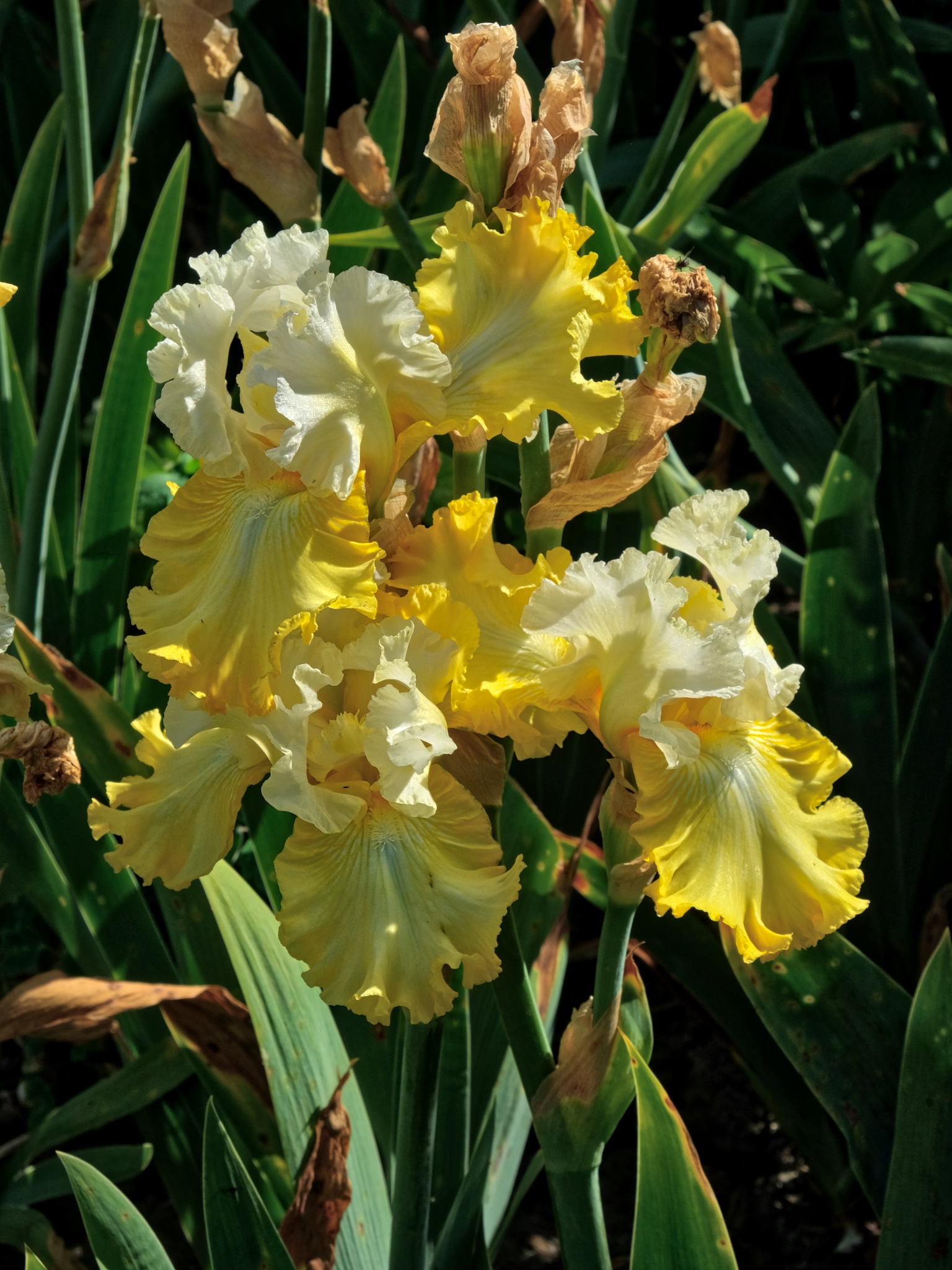 Pale yellow, white, green . . .
Pale yellow, white, green . . .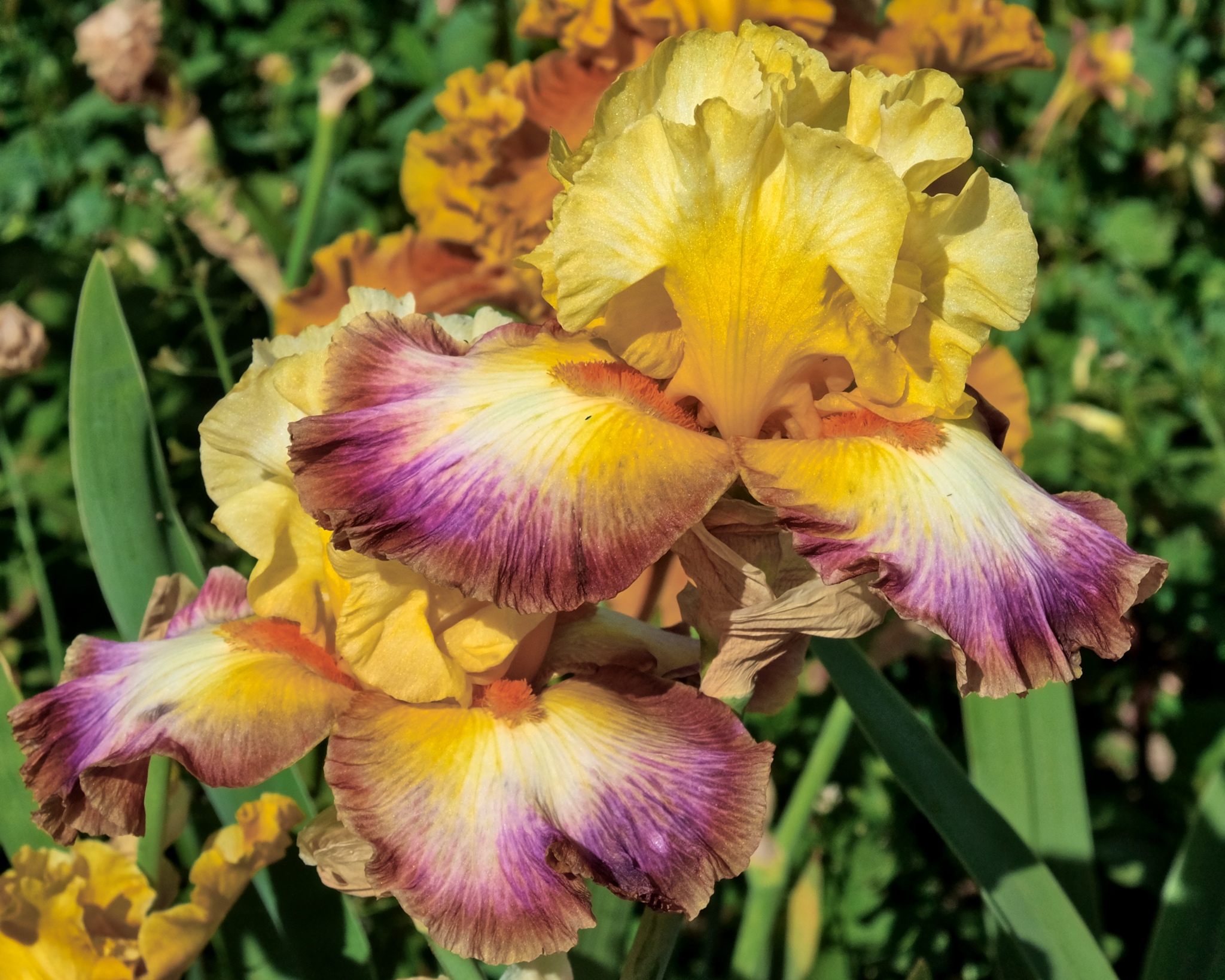 A garish yellow and magenta iris . . .
A garish yellow and magenta iris . . .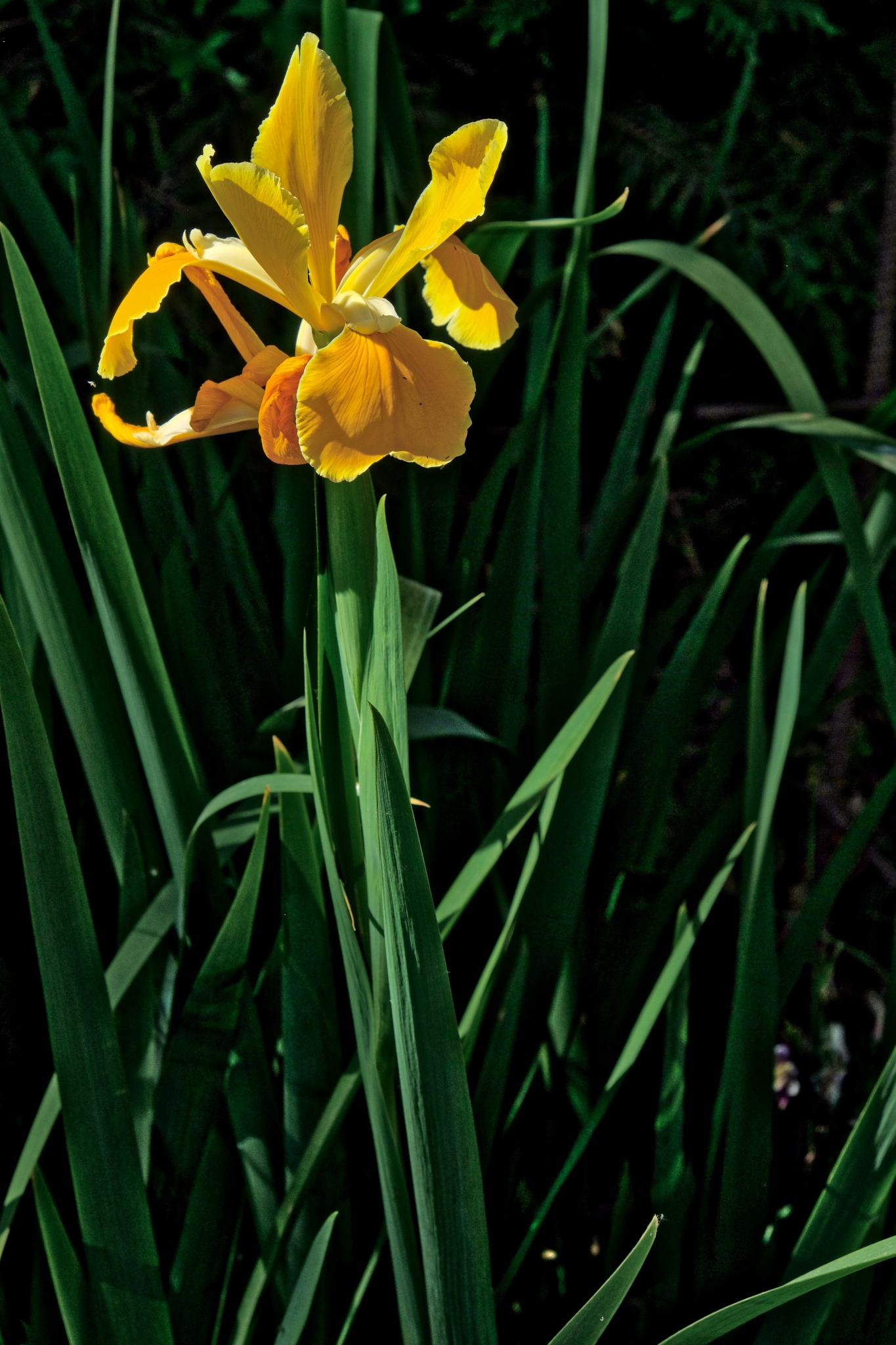 Iris and stem . . . so pretty.
Iris and stem . . . so pretty. Bold color combinations too . . .
Bold color combinations too . . .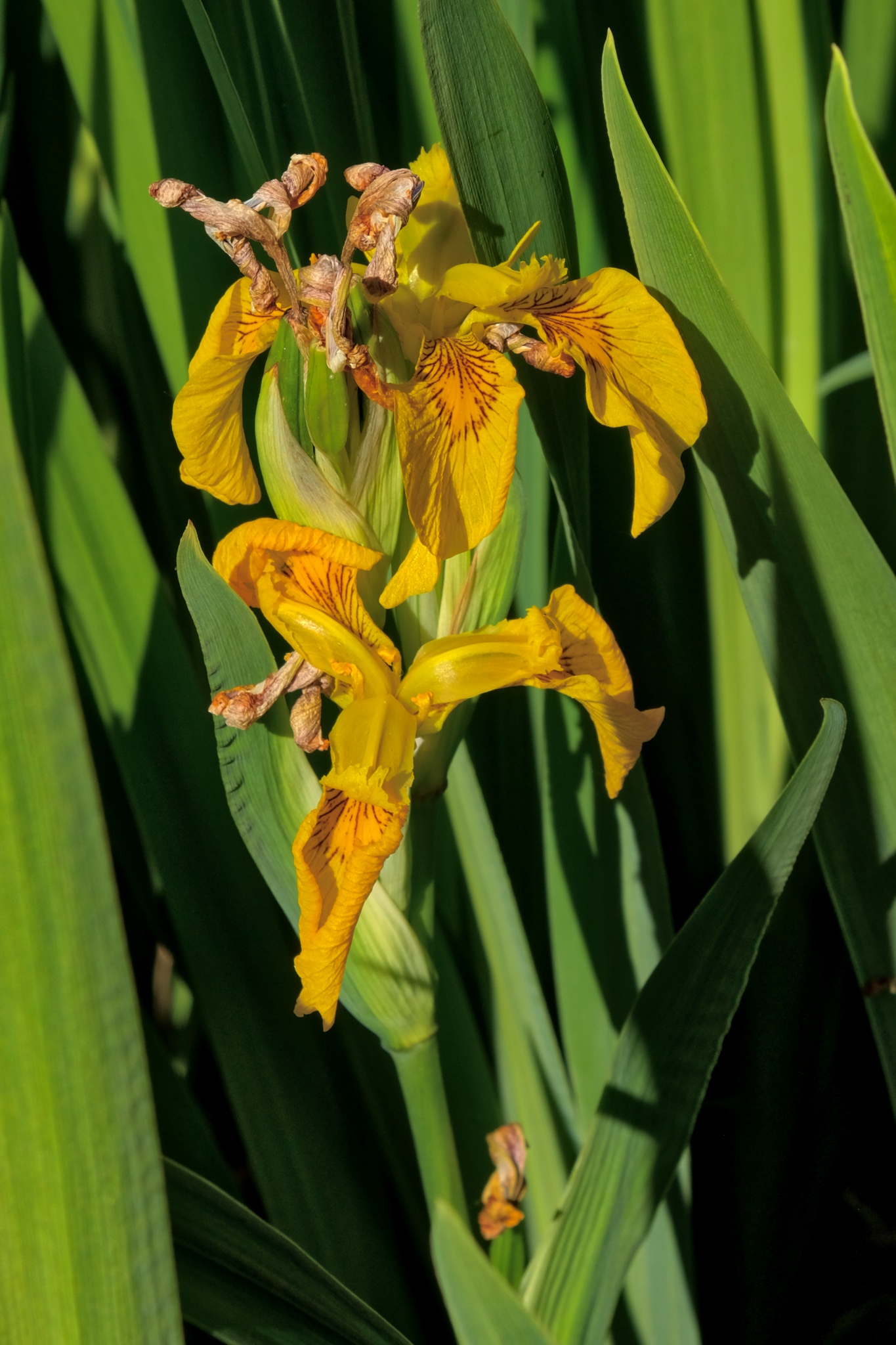 Subtle and gentle irises too.
Subtle and gentle irises too.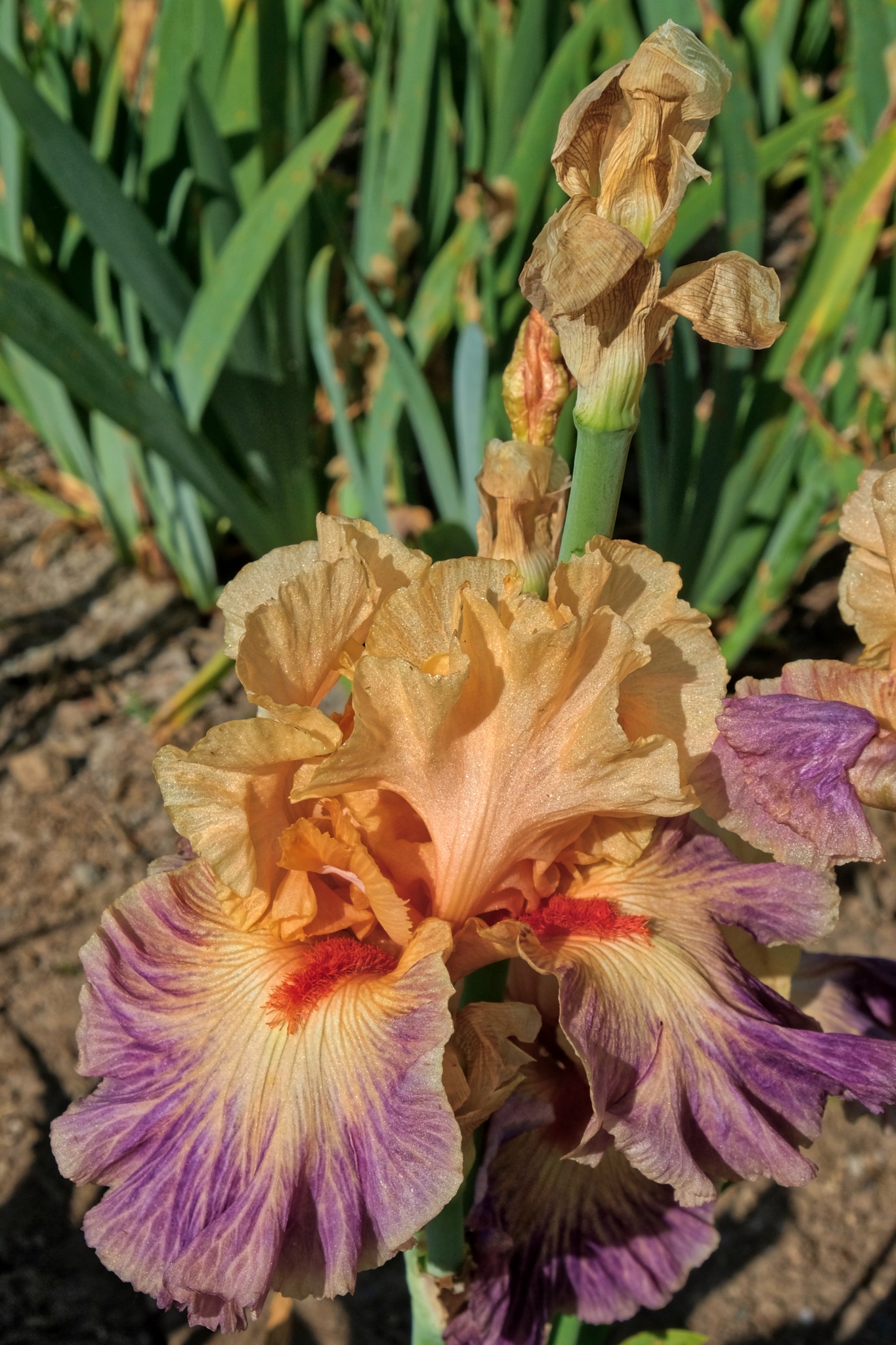 A strange world . . .
A strange world . . .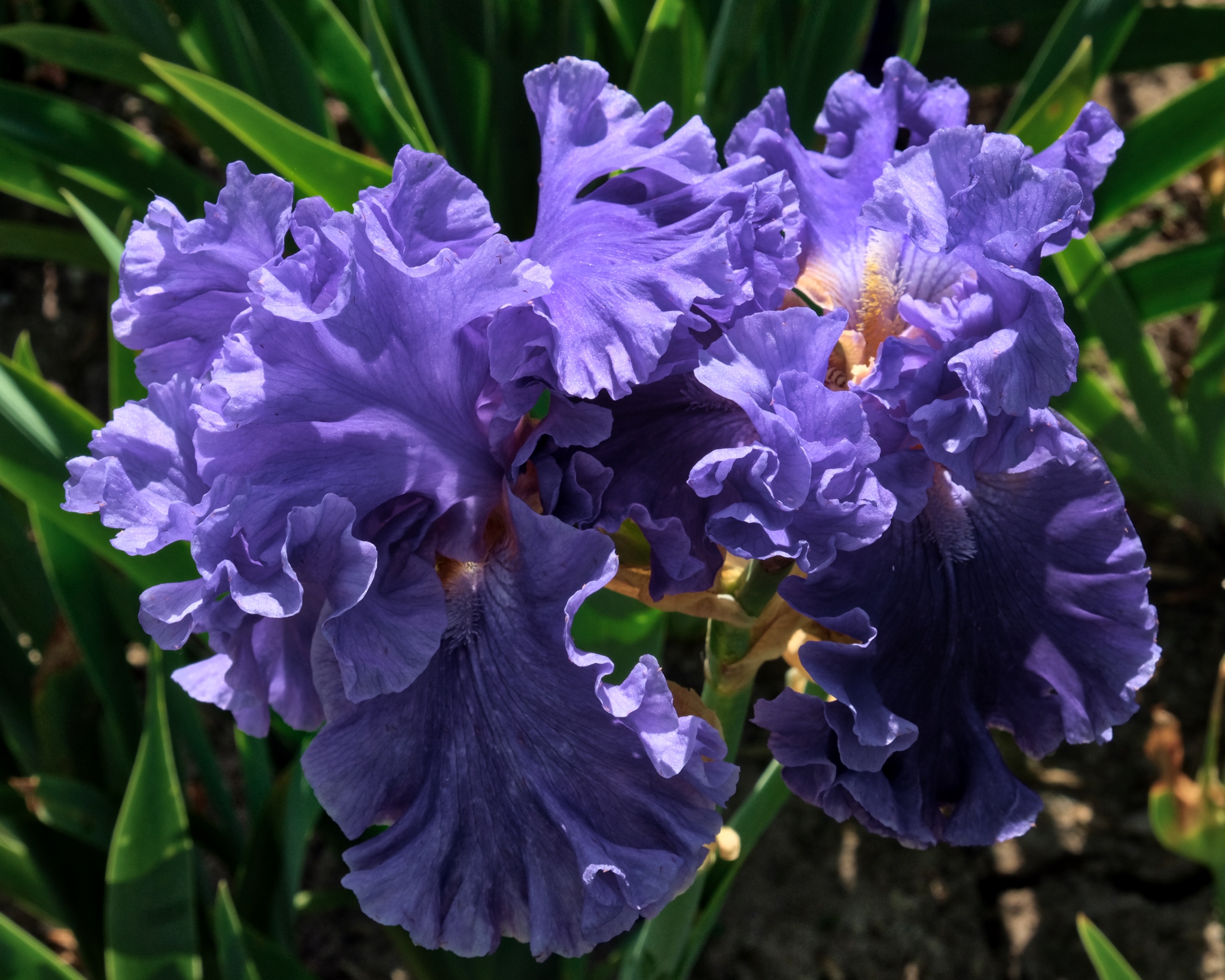 I will never tire of photographing the iris flower . . . simply fascinating!
I will never tire of photographing the iris flower . . . simply fascinating!NOT ONLY THE IRIS!
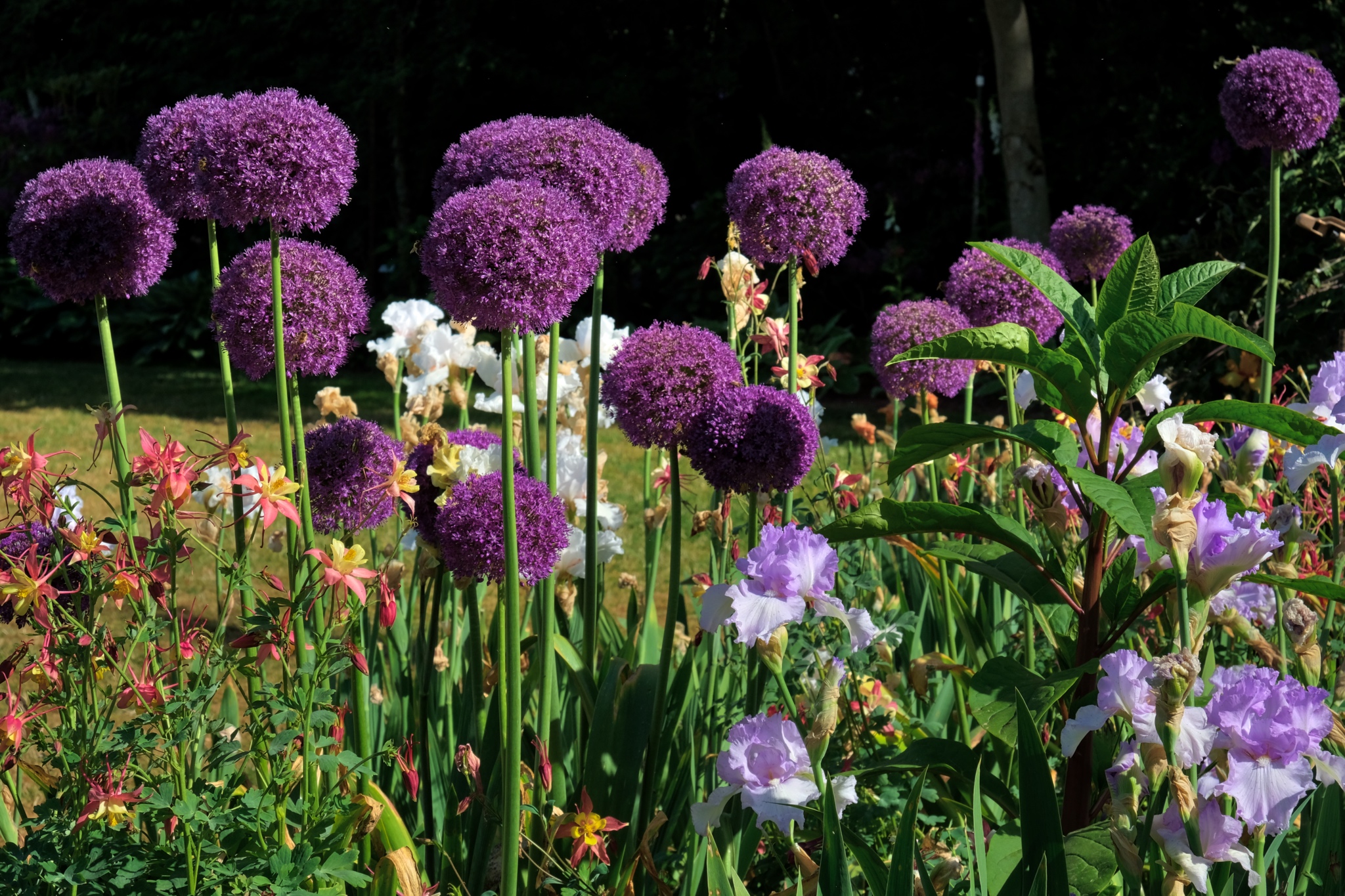 There were many other kinds of flowers at Schreiner's Iris Gardens . . . .
There were many other kinds of flowers at Schreiner's Iris Gardens . . . .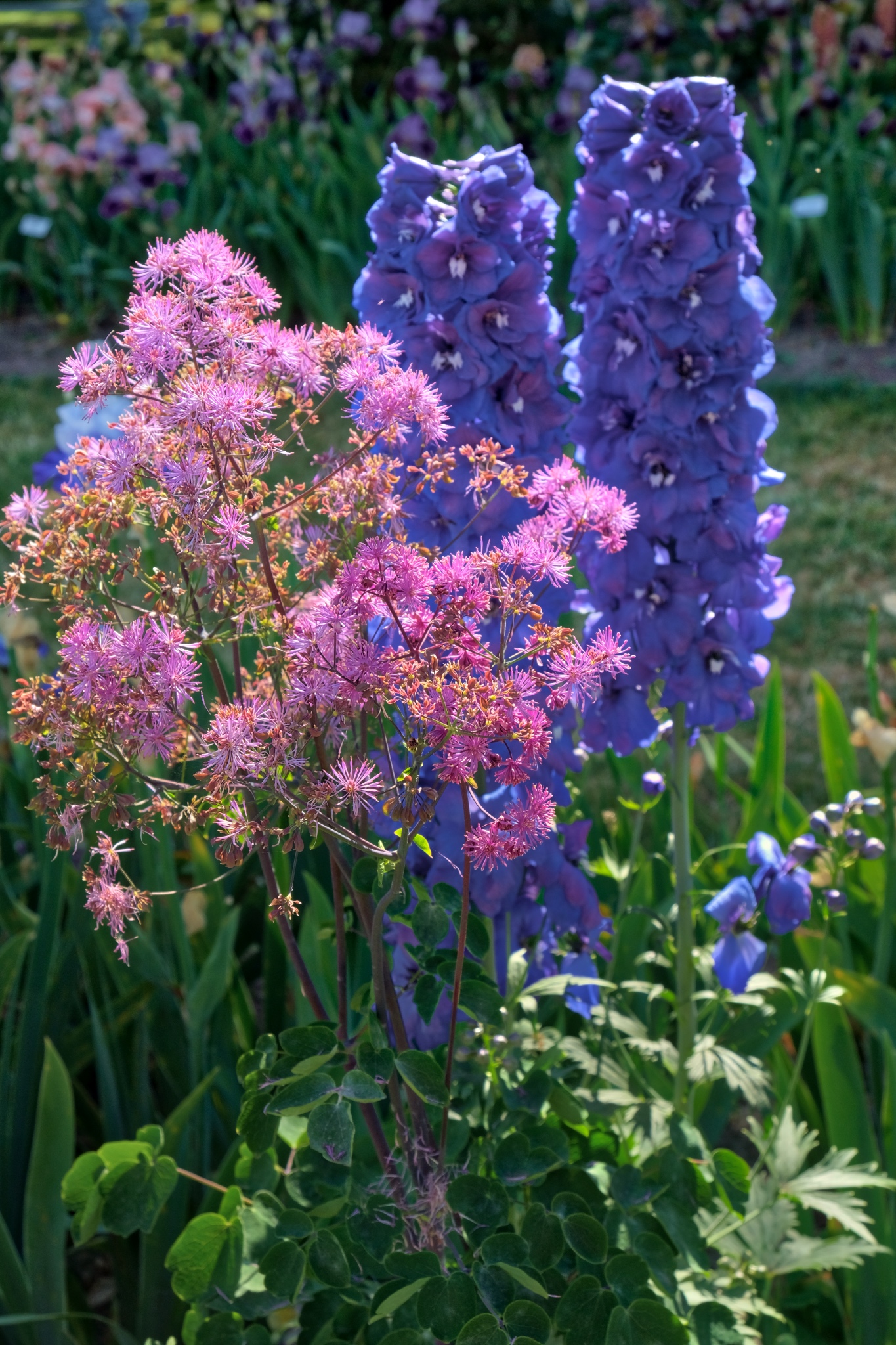 Many, many other kinds of flowers and trees . . . many of which I had never seen before.
Many, many other kinds of flowers and trees . . . many of which I had never seen before. Such a nicely laid out garden too.
Such a nicely laid out garden too.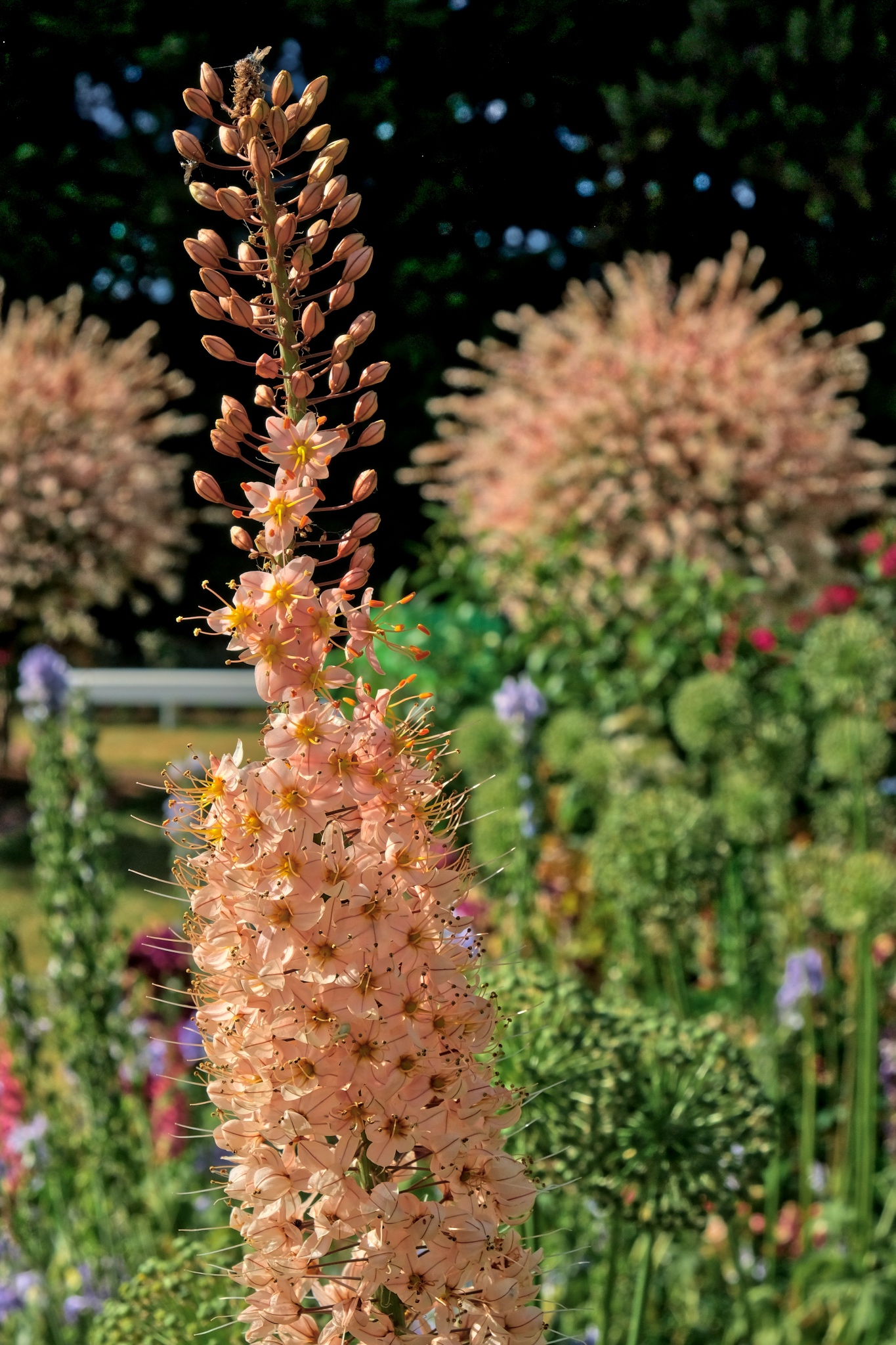 Almost everything in the garden was in bloom all at once!
Almost everything in the garden was in bloom all at once! I rested here for a while . . . very pleasant.
I rested here for a while . . . very pleasant.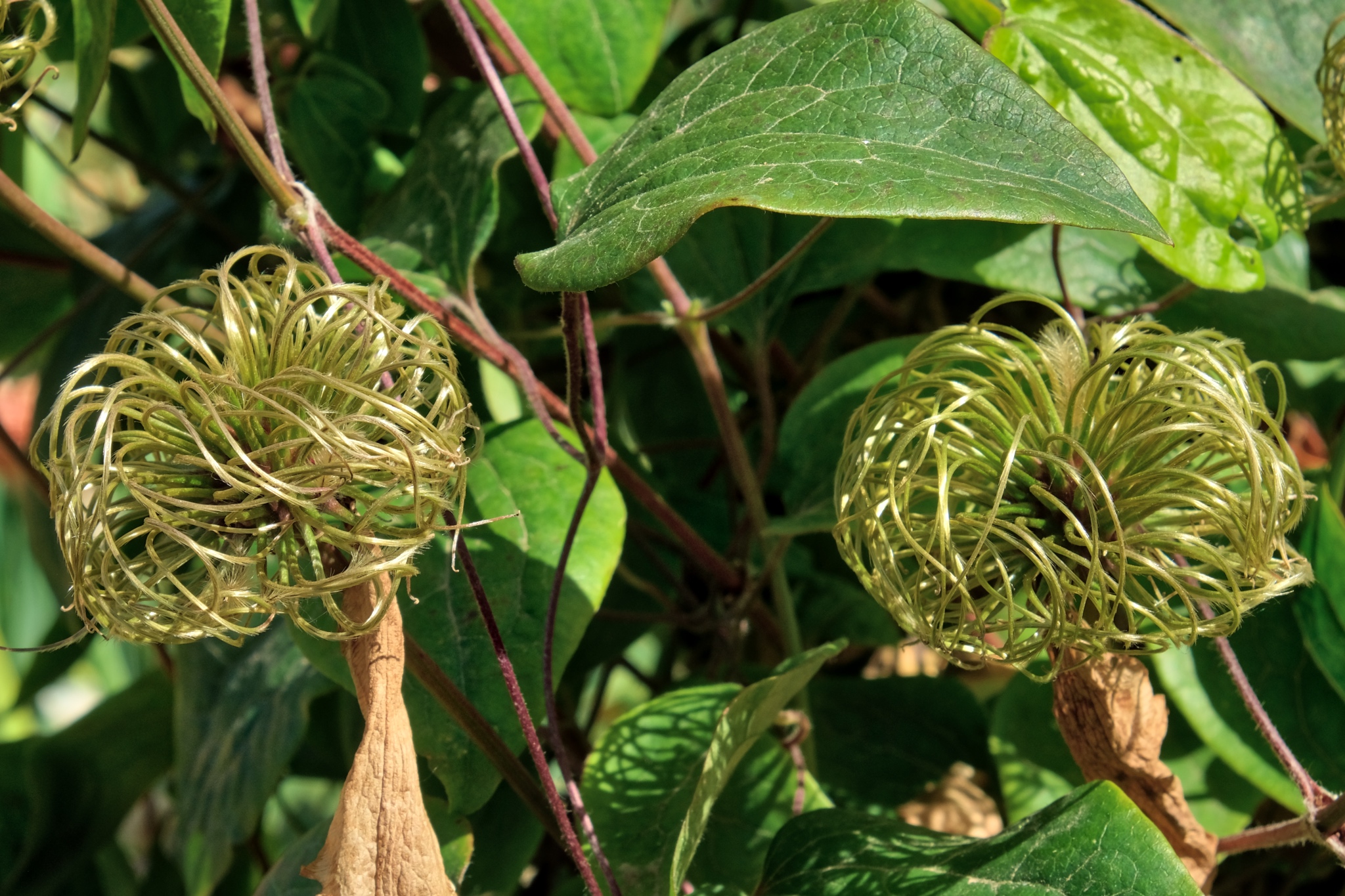 Wherever my gaze would light there would be something fascinating!
Wherever my gaze would light there would be something fascinating!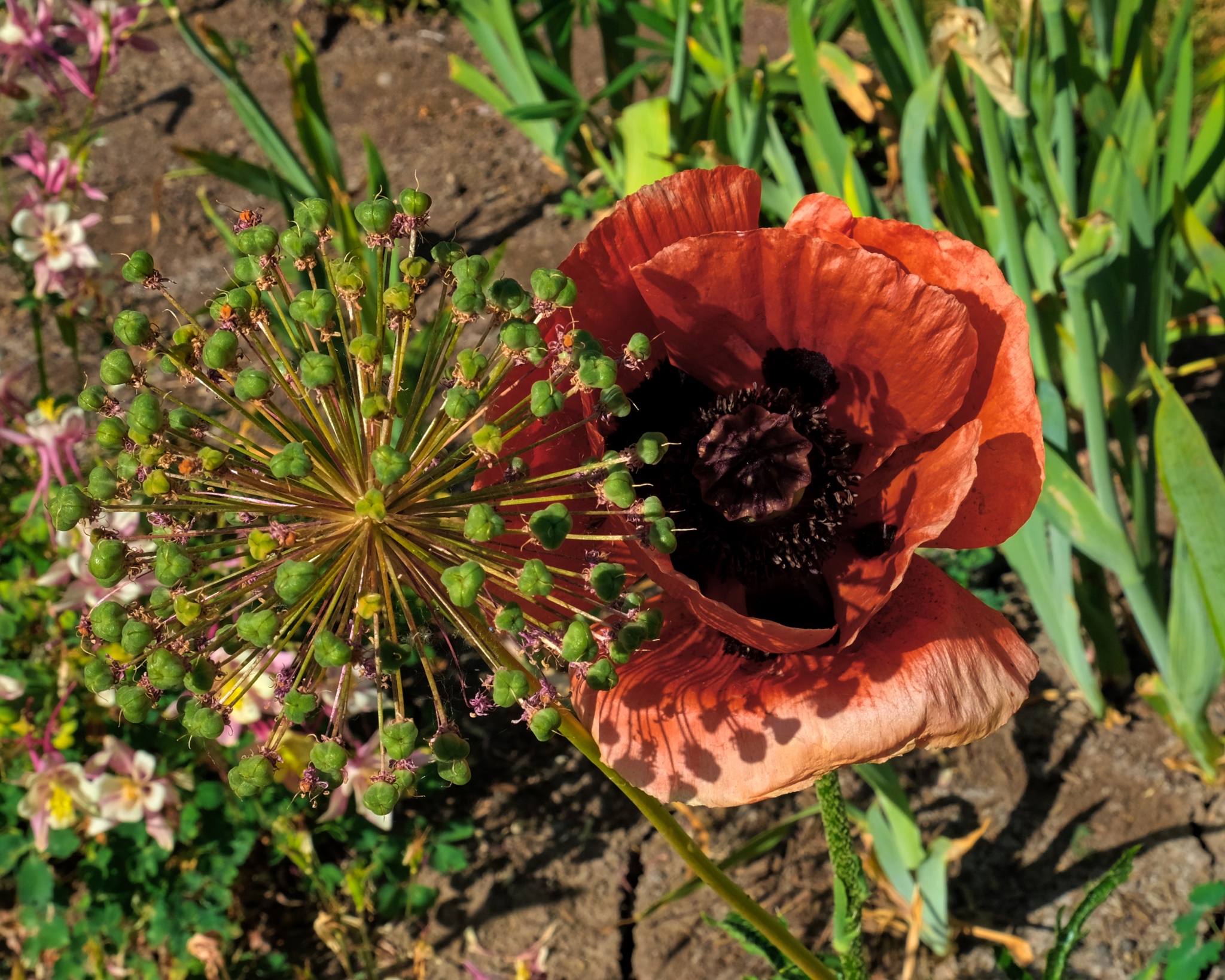 A red poppy and exploding pod ball!
A red poppy and exploding pod ball!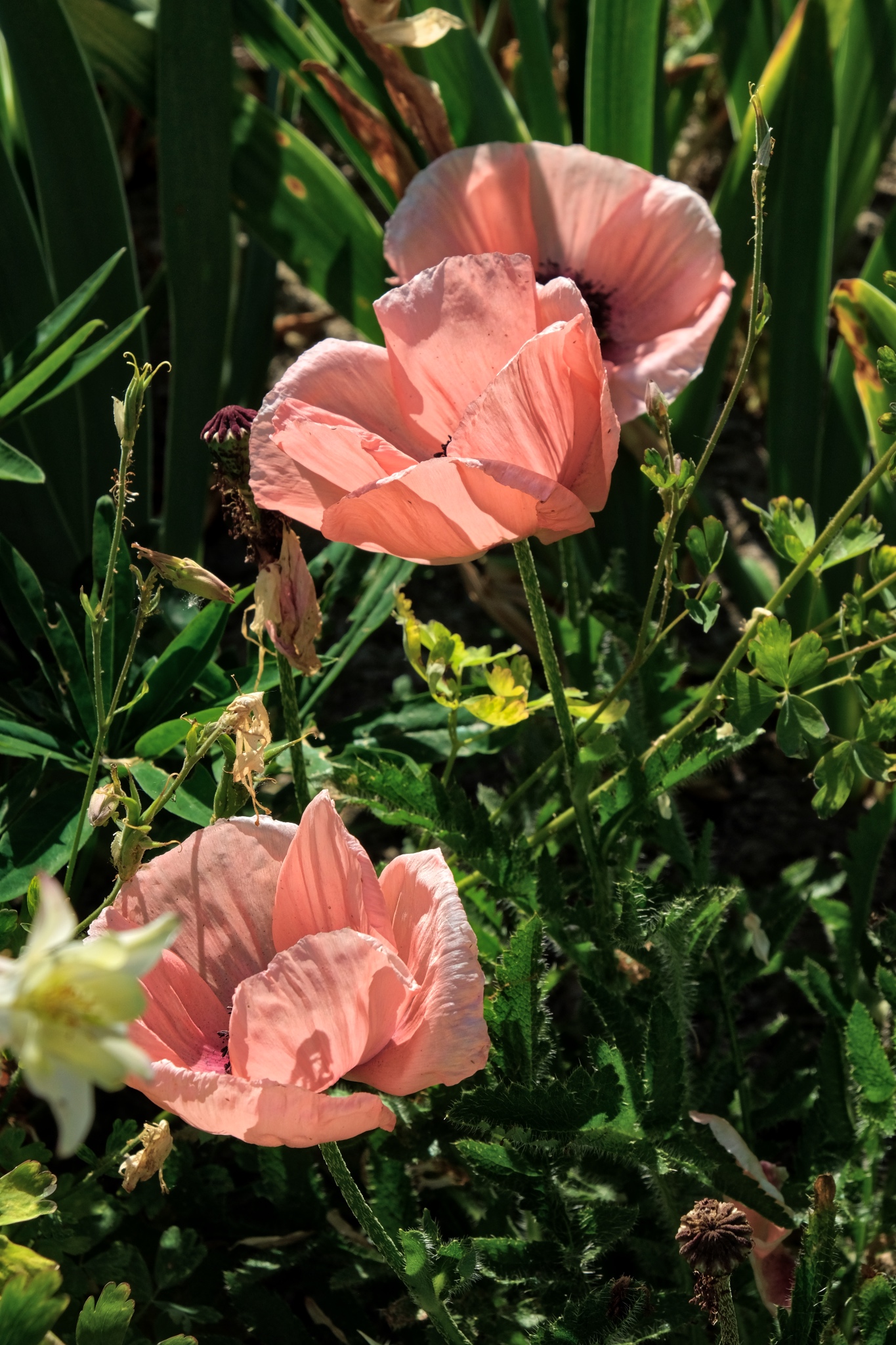 Pink Poppies.
Pink Poppies.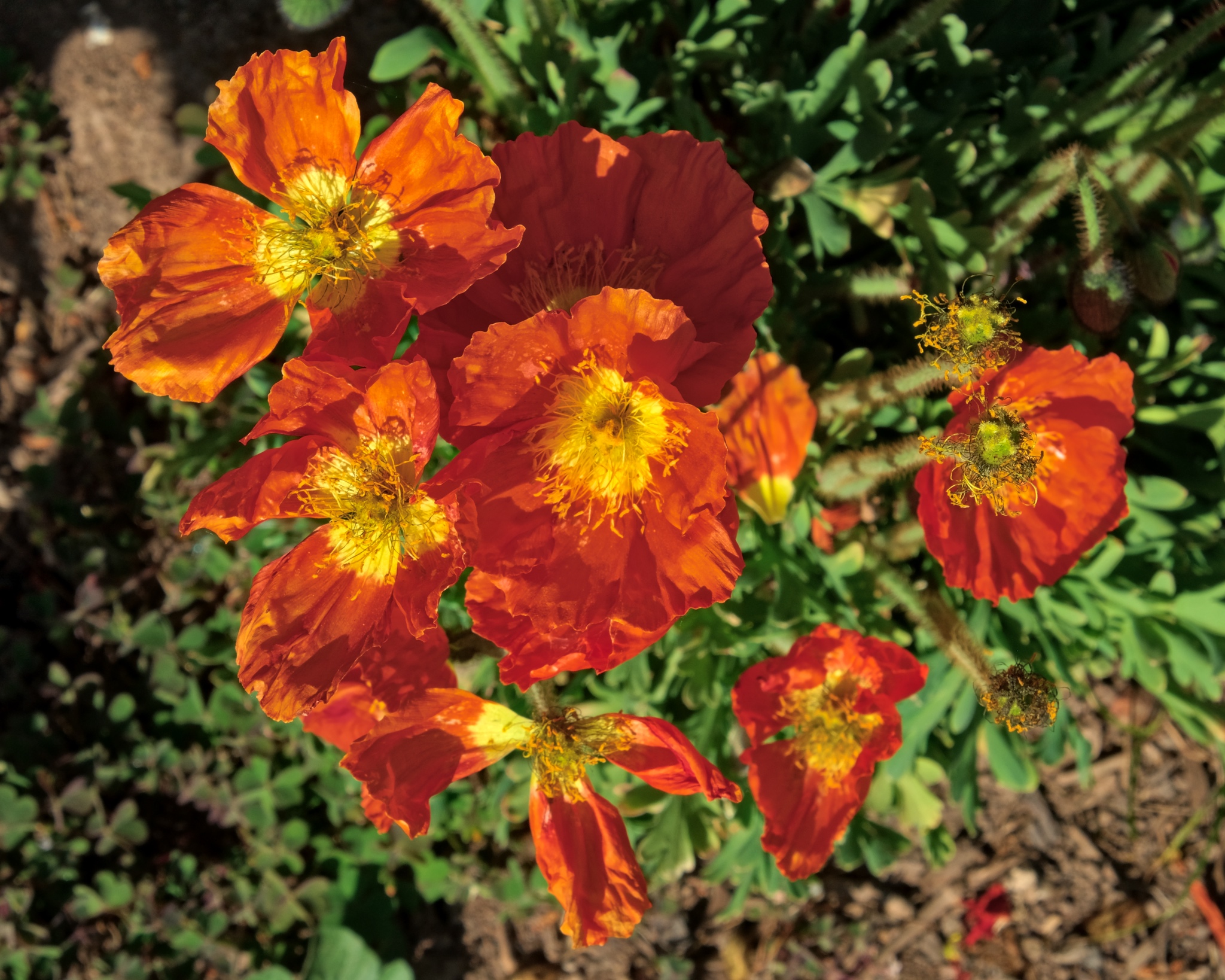 Bright orange poppies . . . so cheerful!
Bright orange poppies . . . so cheerful! A happy arrangement . . .
A happy arrangement . . .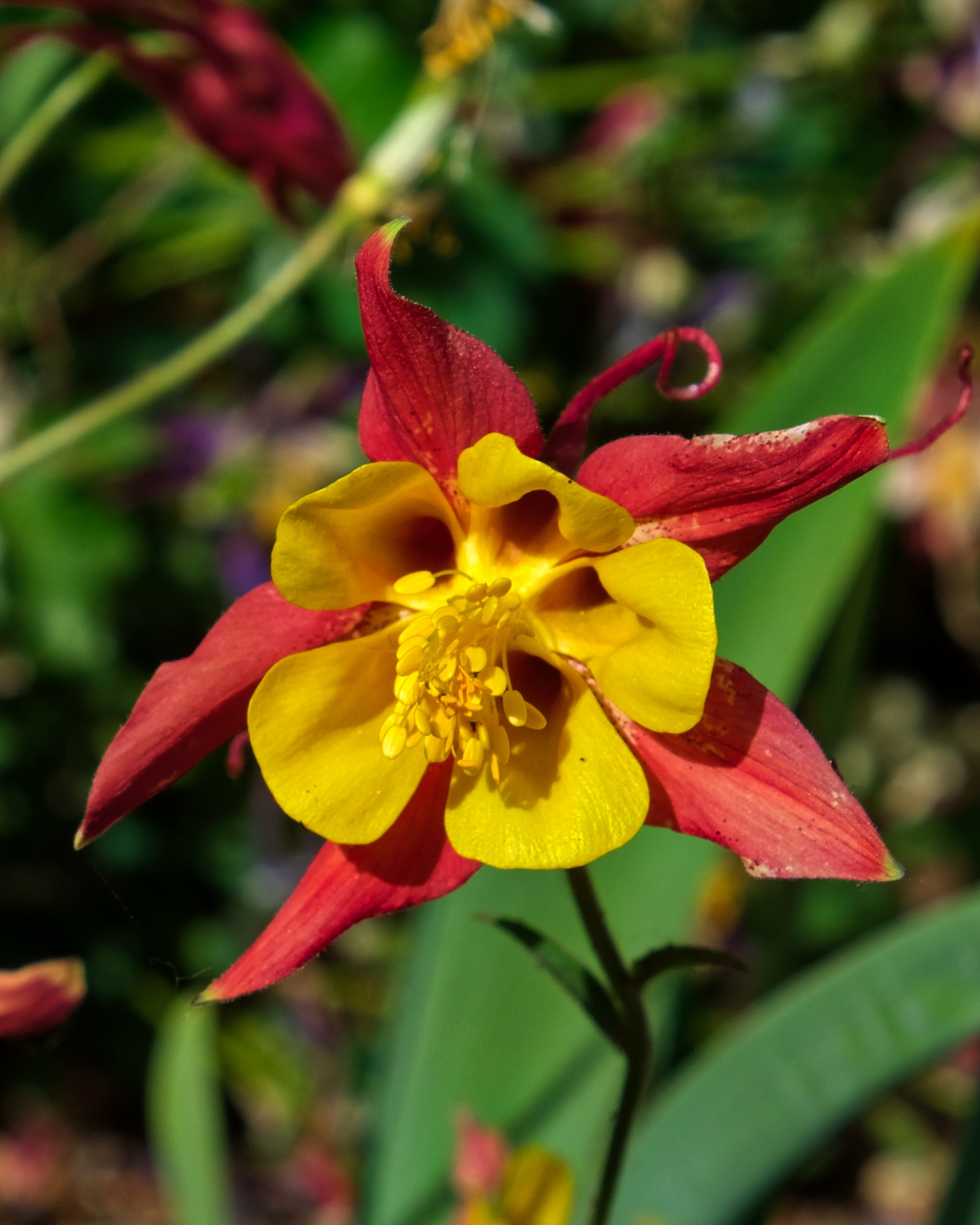 A cheerful little flower dancing on the wind.
A cheerful little flower dancing on the wind.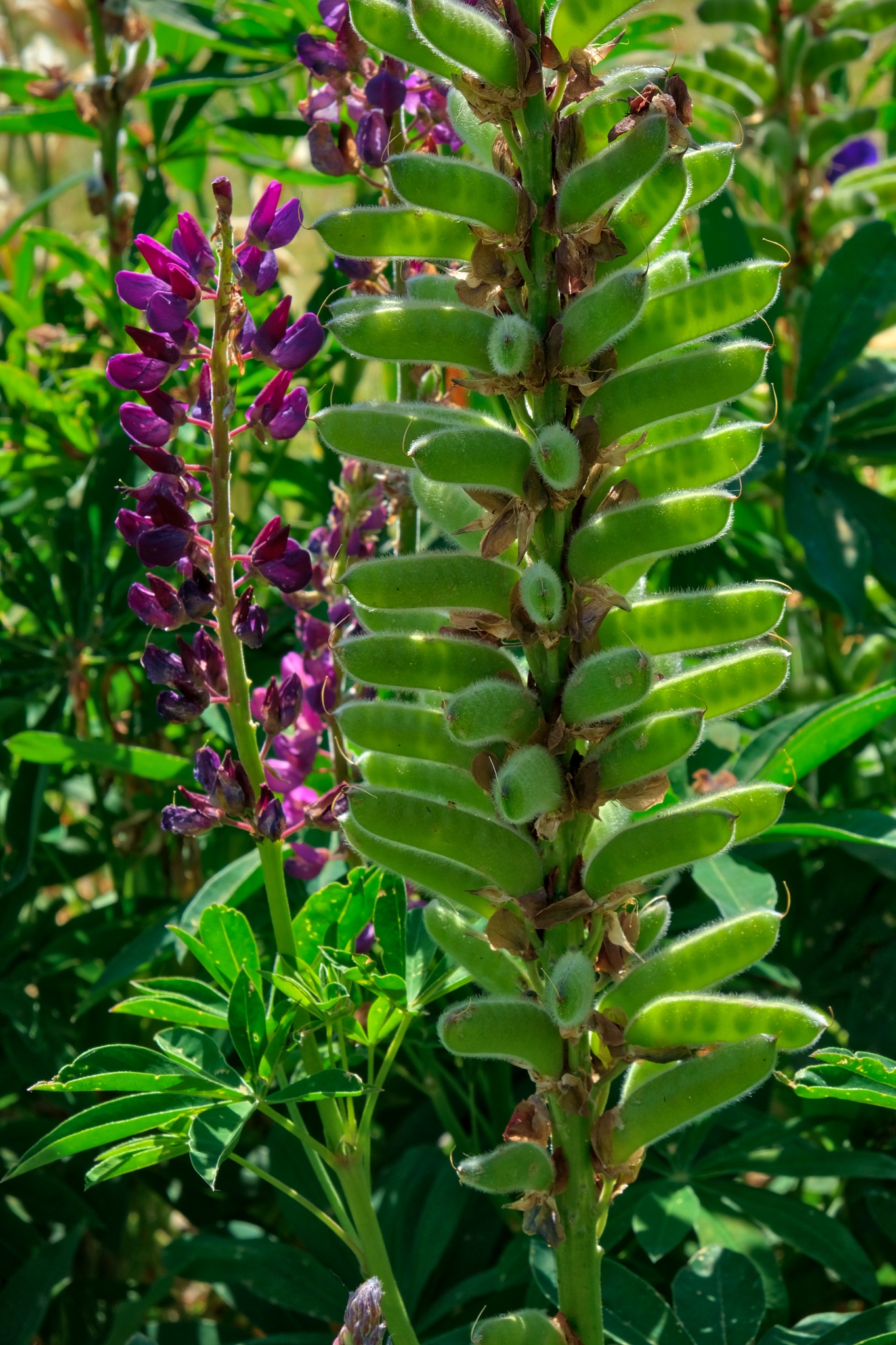 All sorts of flowering and bud configurations here and there.
All sorts of flowering and bud configurations here and there.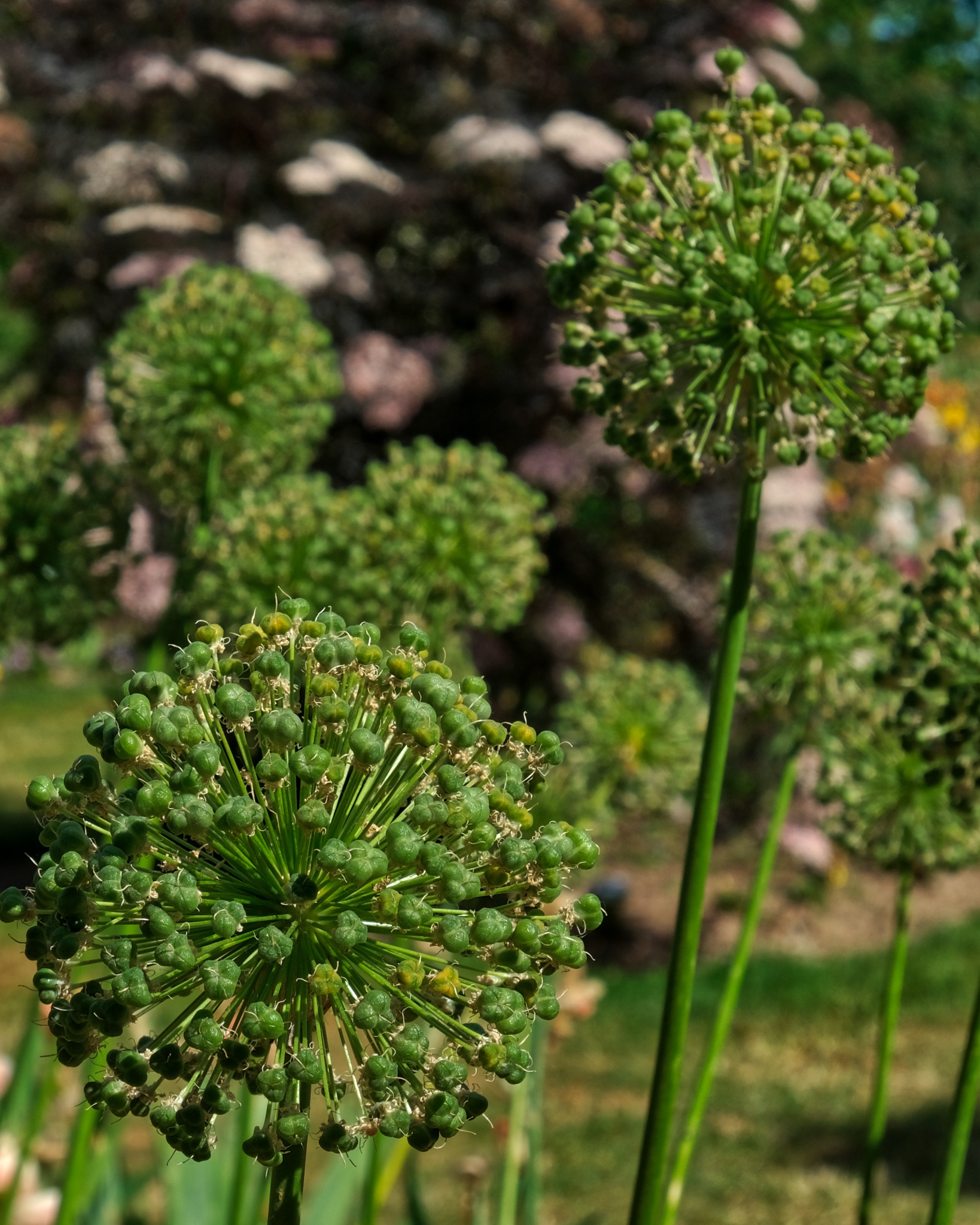 Ready to explode . . .
Ready to explode . . .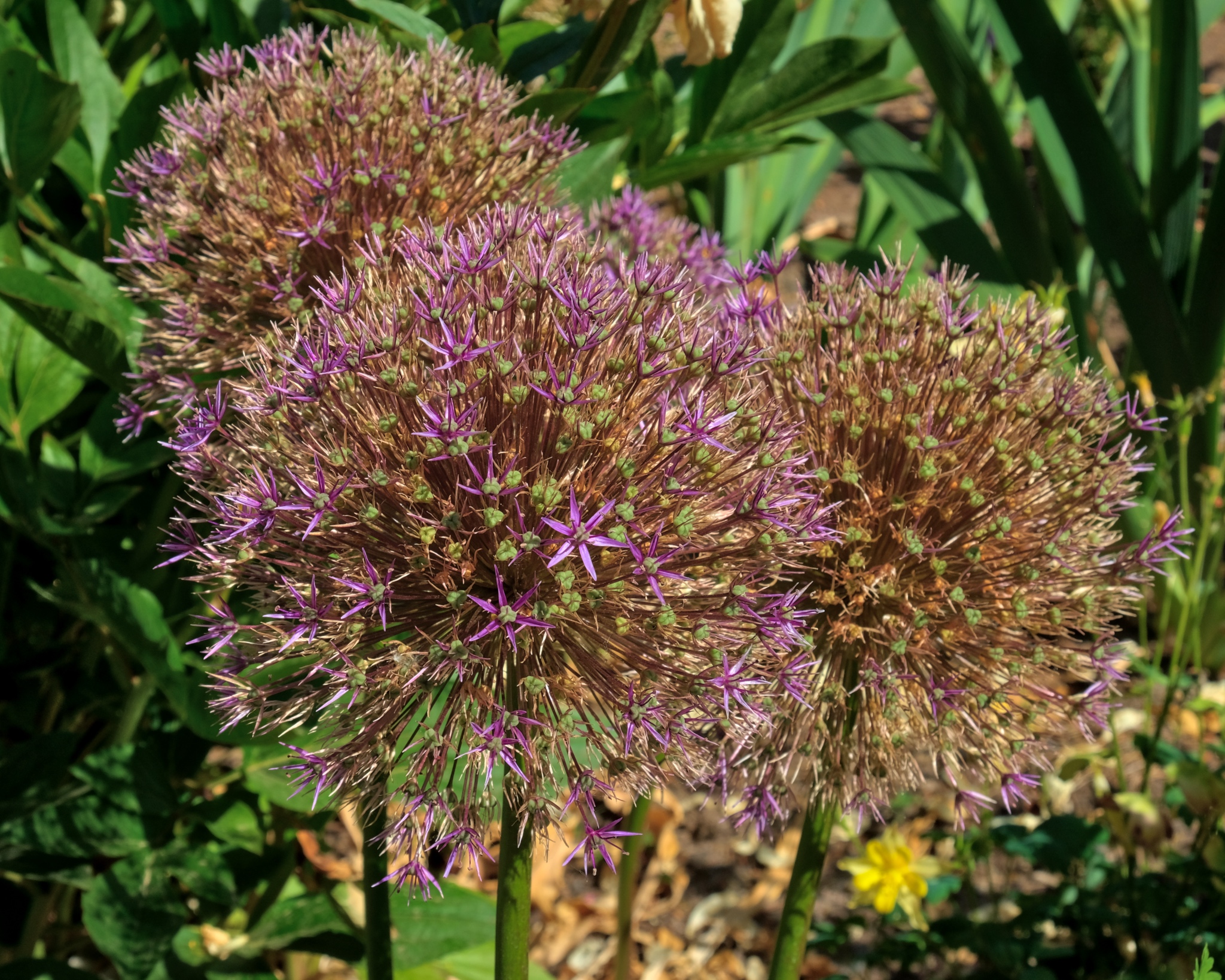 The beginnings of one of those purple puff balls . . .
The beginnings of one of those purple puff balls . . . There were many happy bees in the garden!
There were many happy bees in the garden!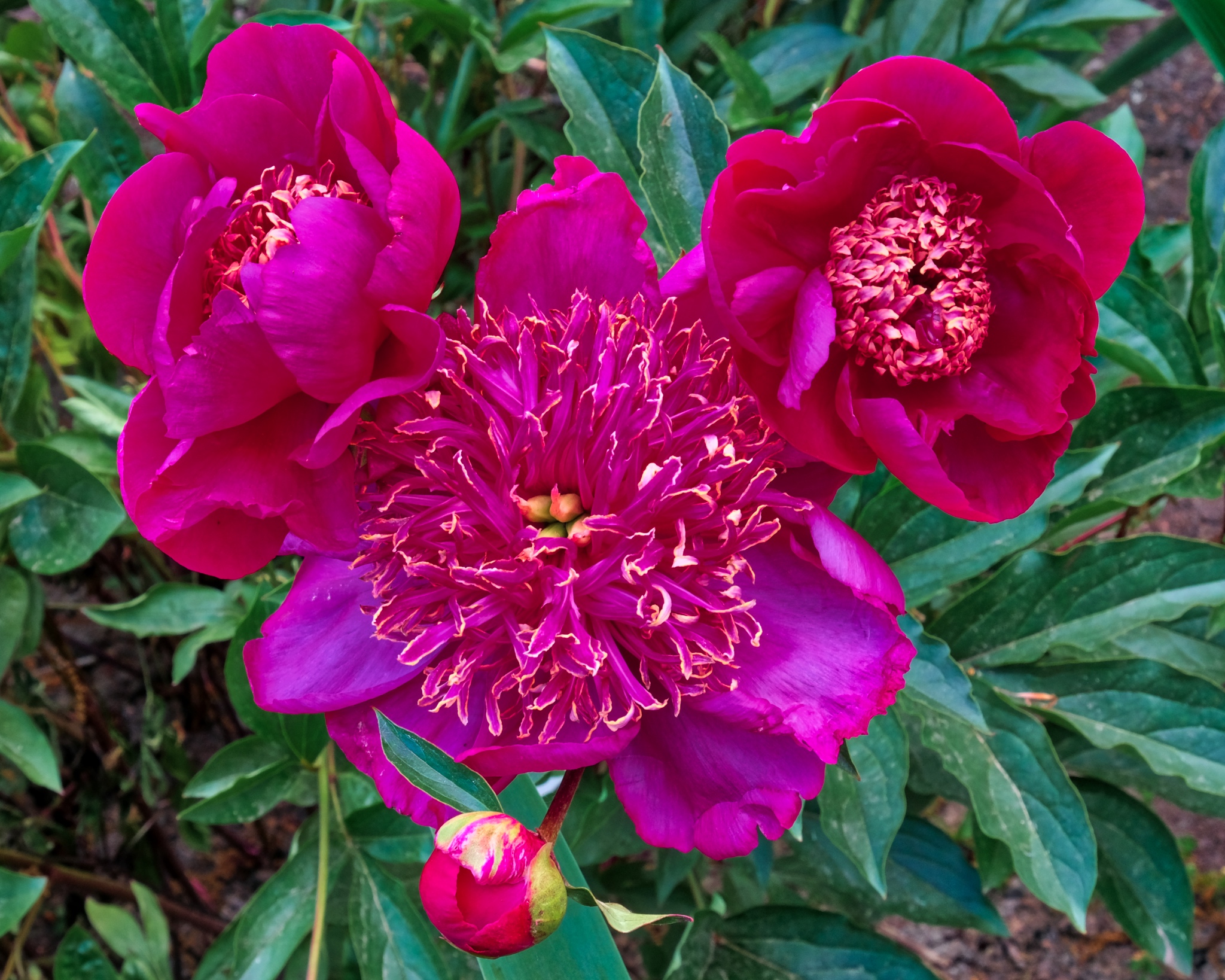 There were some red flowers too . . . some very, very red!
There were some red flowers too . . . some very, very red!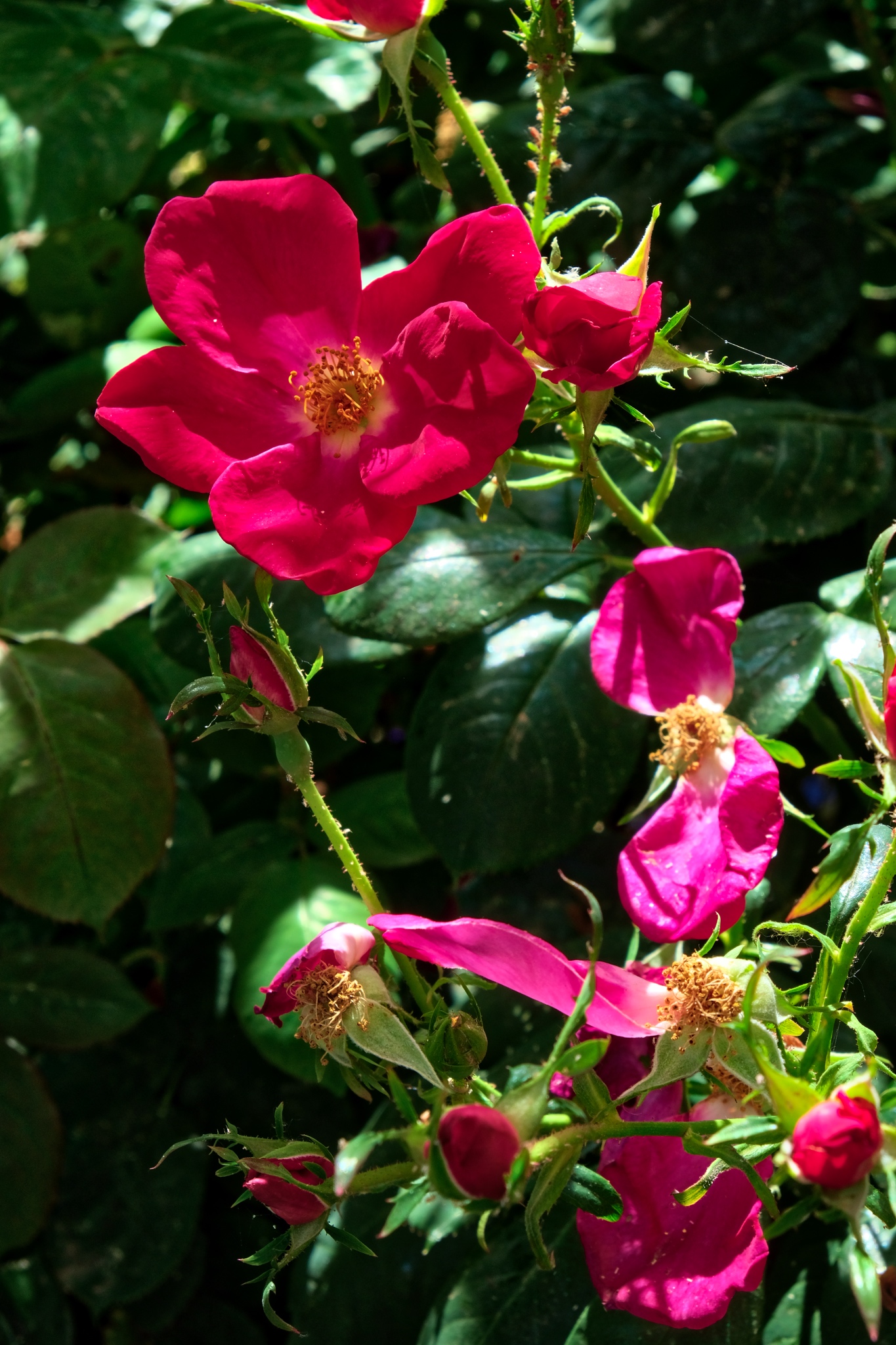 Reds everywhere.
Reds everywhere. Bushes full of red flowers.
Bushes full of red flowers.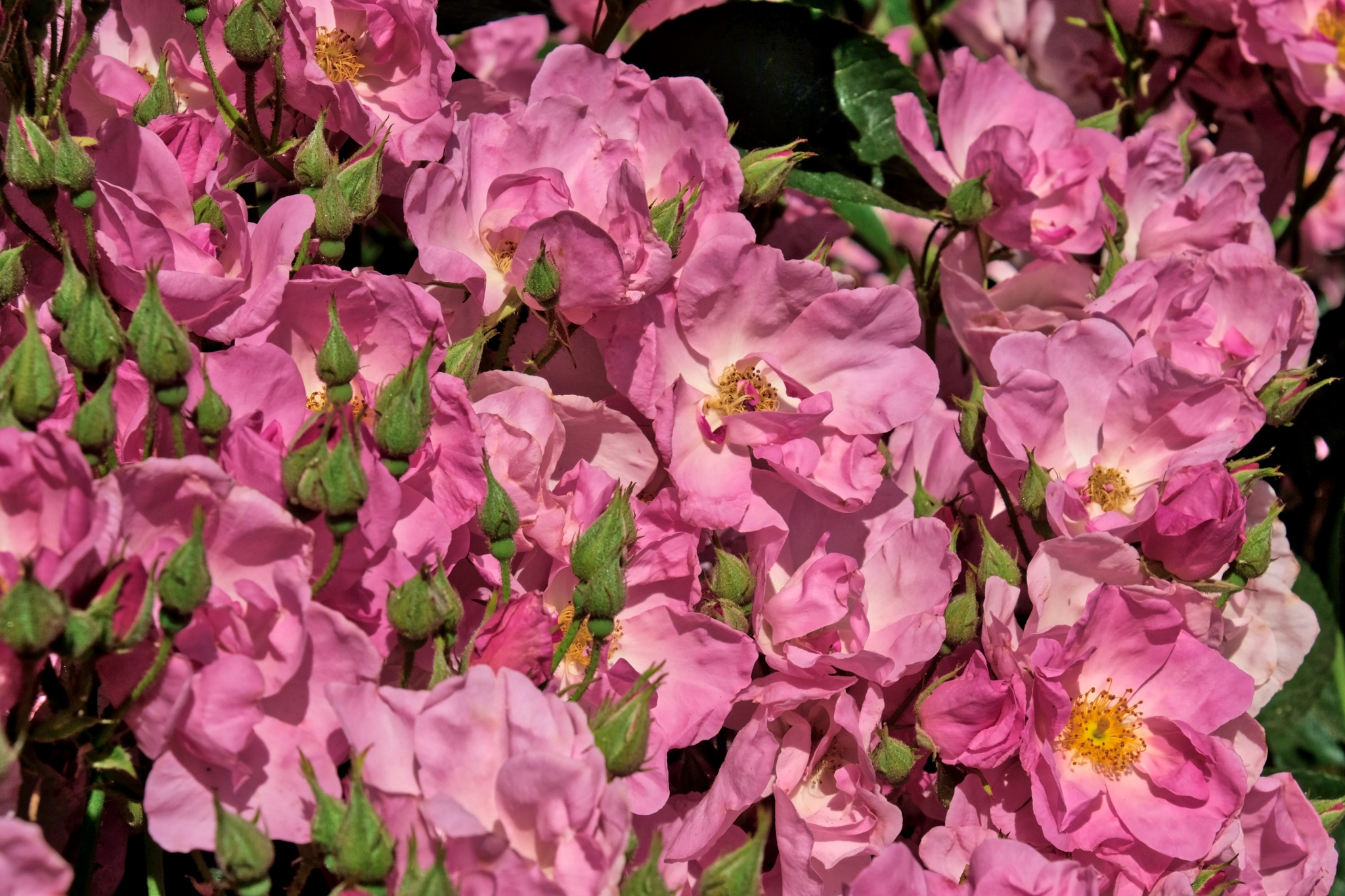 This bush was loaded with pink flowers . . .
This bush was loaded with pink flowers . . .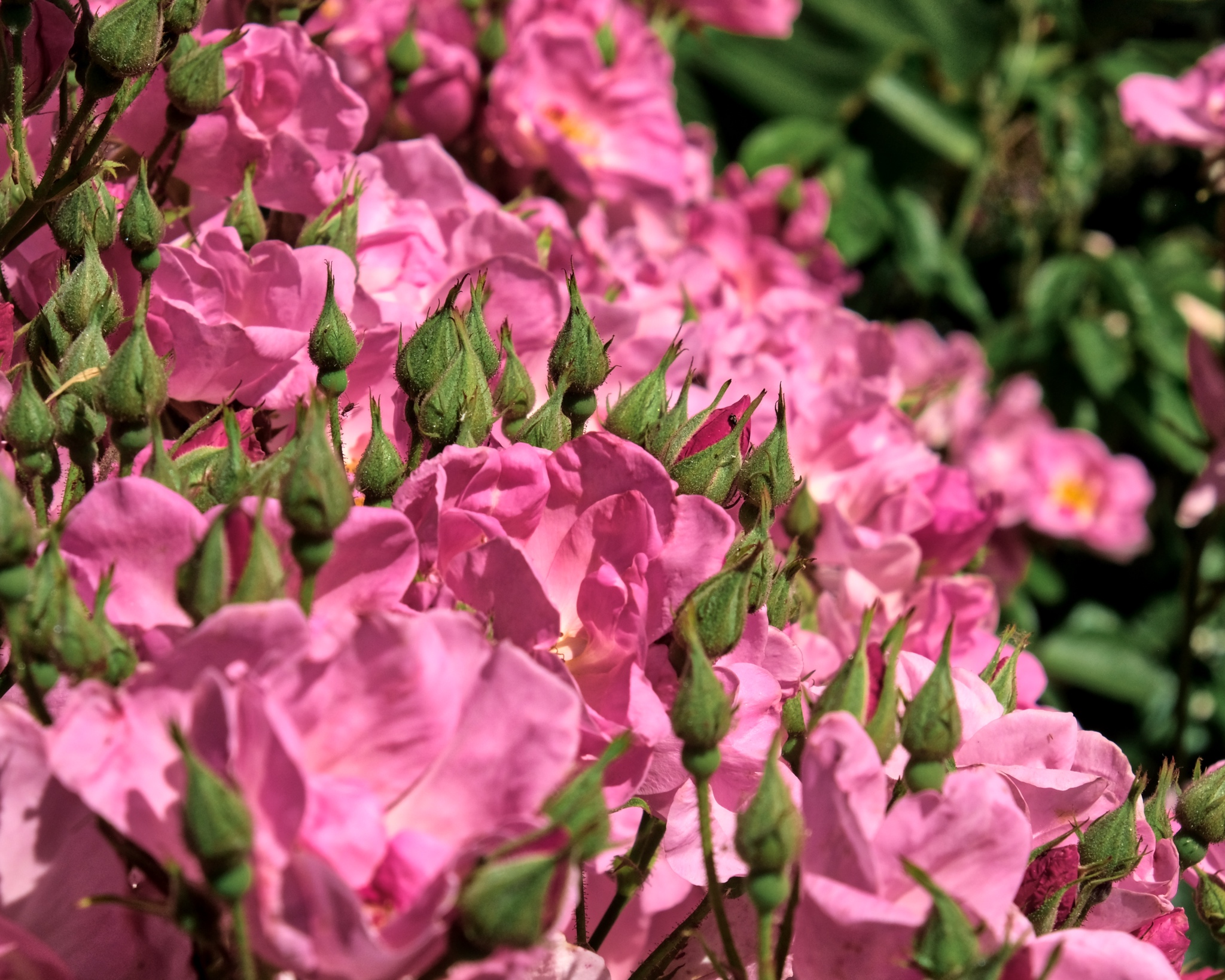 Loaded with flowers . . . and loaded with buds promising continuous flowering into the future.
Loaded with flowers . . . and loaded with buds promising continuous flowering into the future.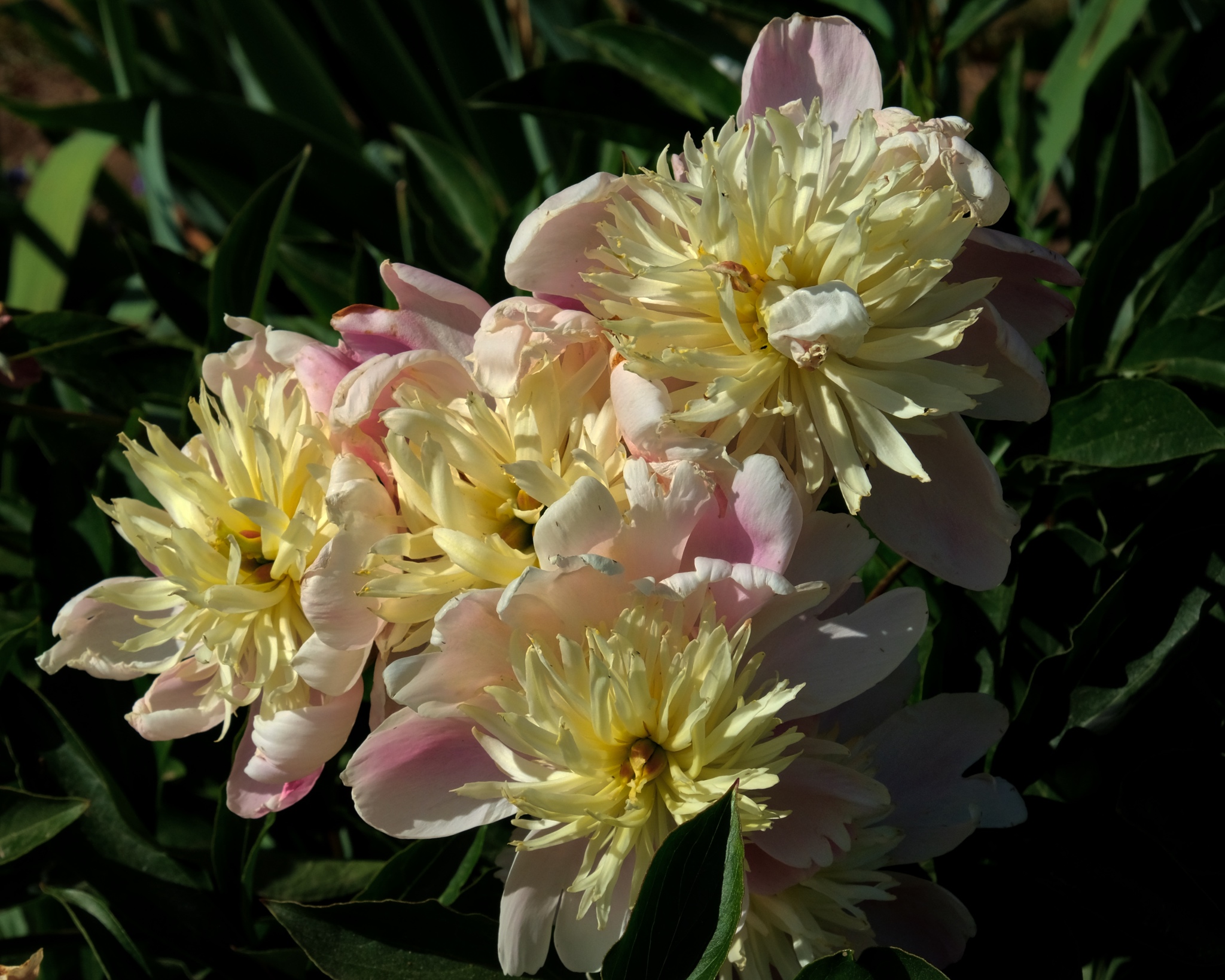 Lots of yellow flowers around too!
Lots of yellow flowers around too!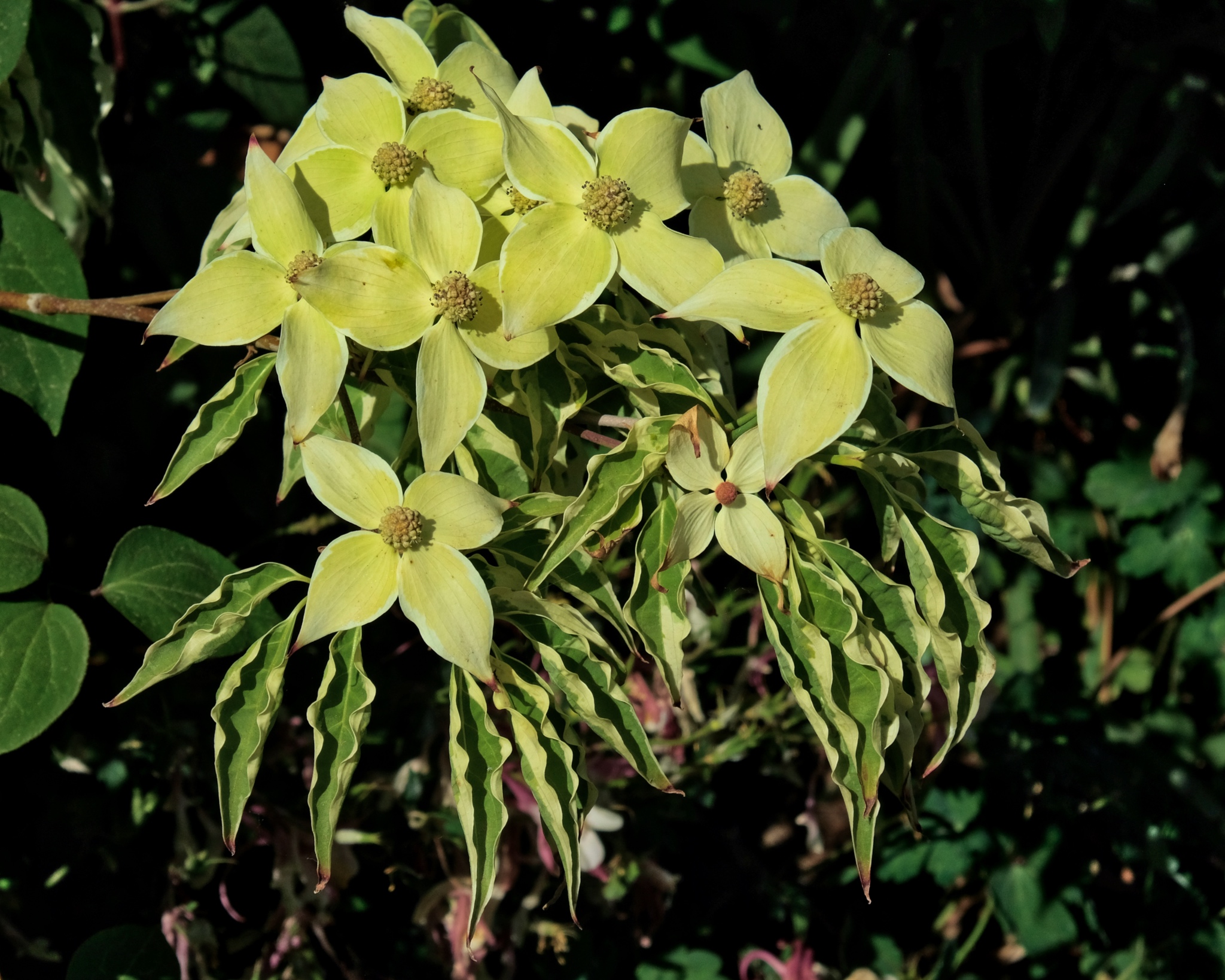 Yellow dogwood.
Yellow dogwood. Yellow/Orange roses smelled wonderfully.
Yellow/Orange roses smelled wonderfully. A fluorescent glow from within . . . otherworldly!
A fluorescent glow from within . . . otherworldly!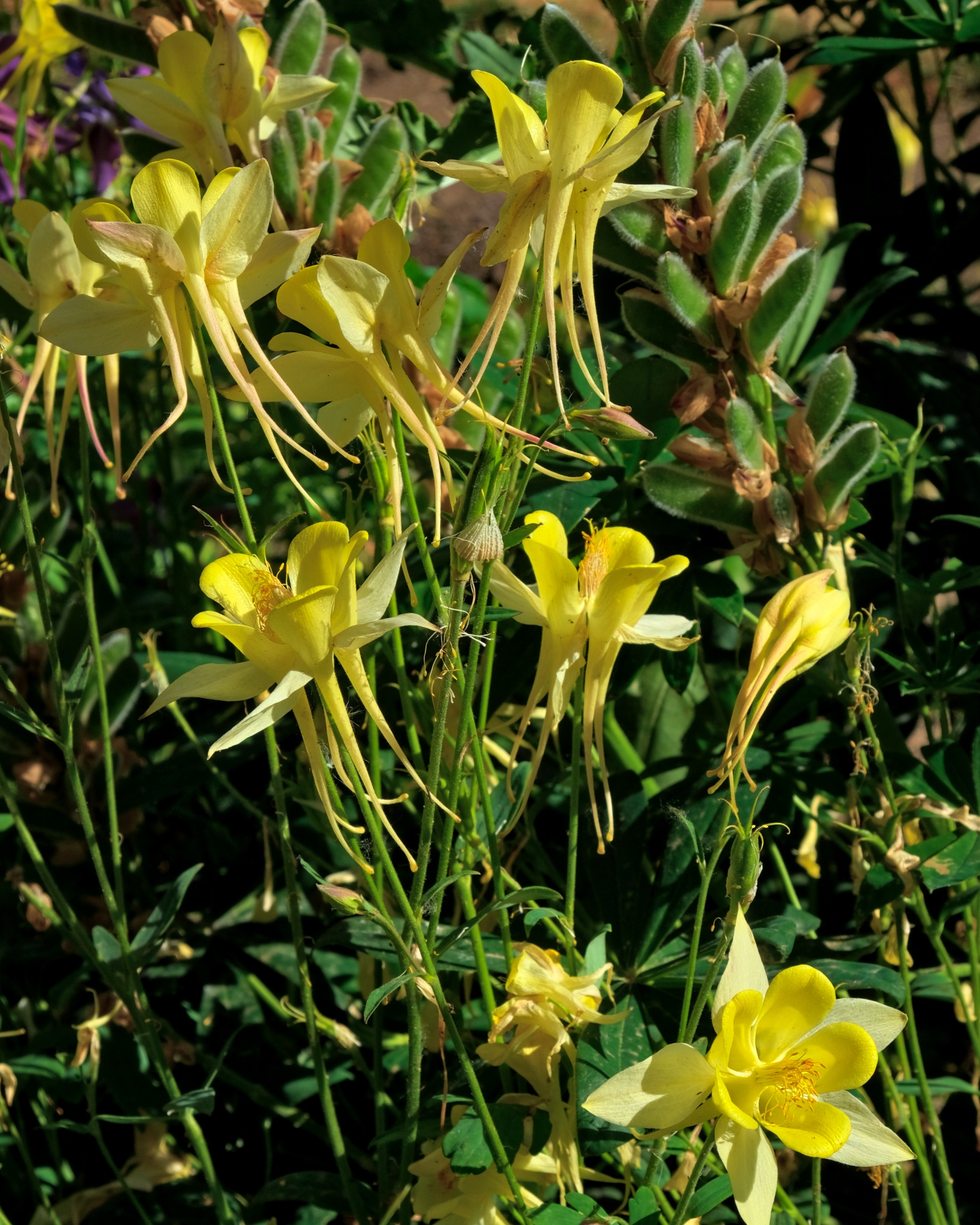 Sweet little yellow ferries!
Sweet little yellow ferries! One bush, multiple shades of yellow!
One bush, multiple shades of yellow!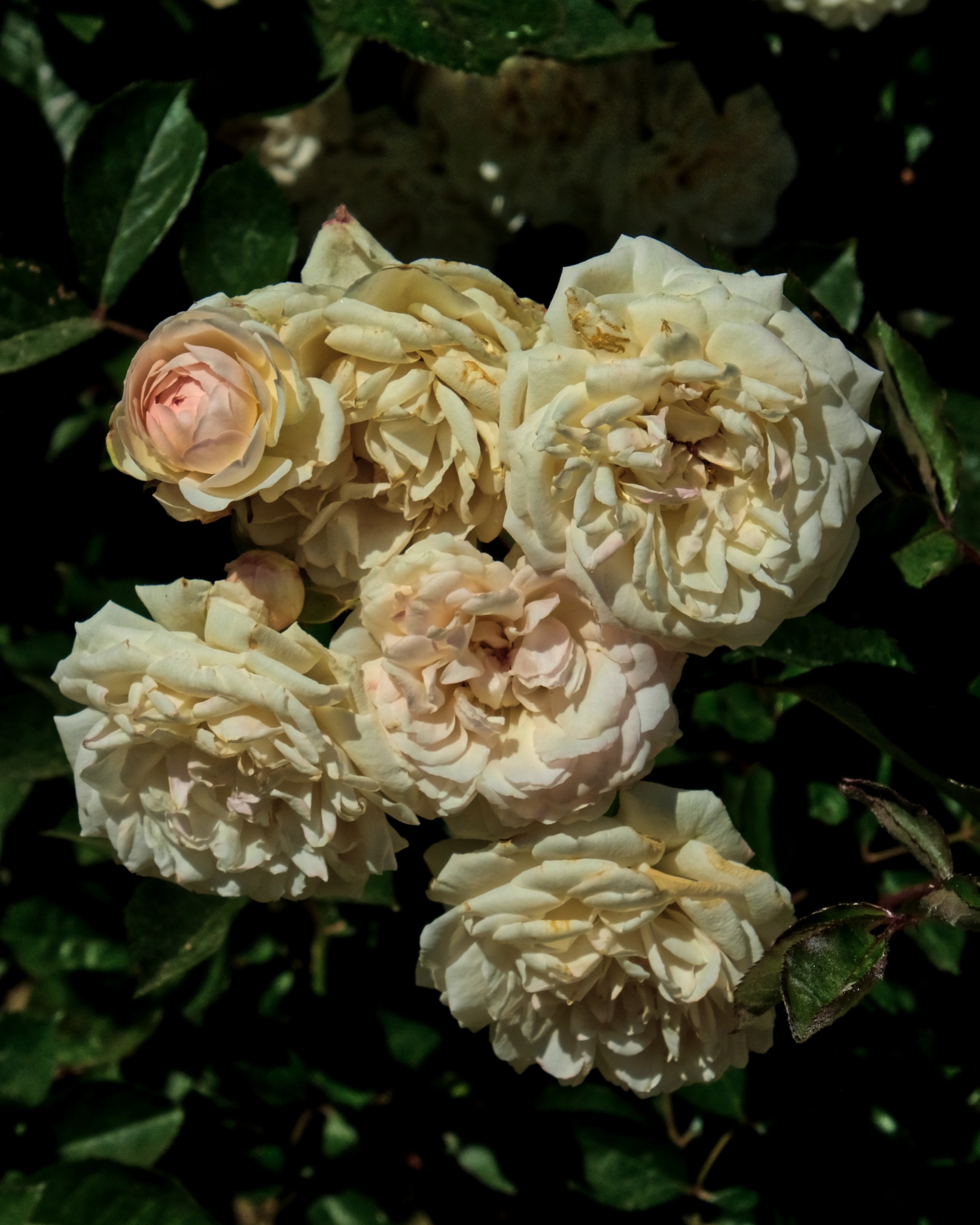 Creamy!
Creamy!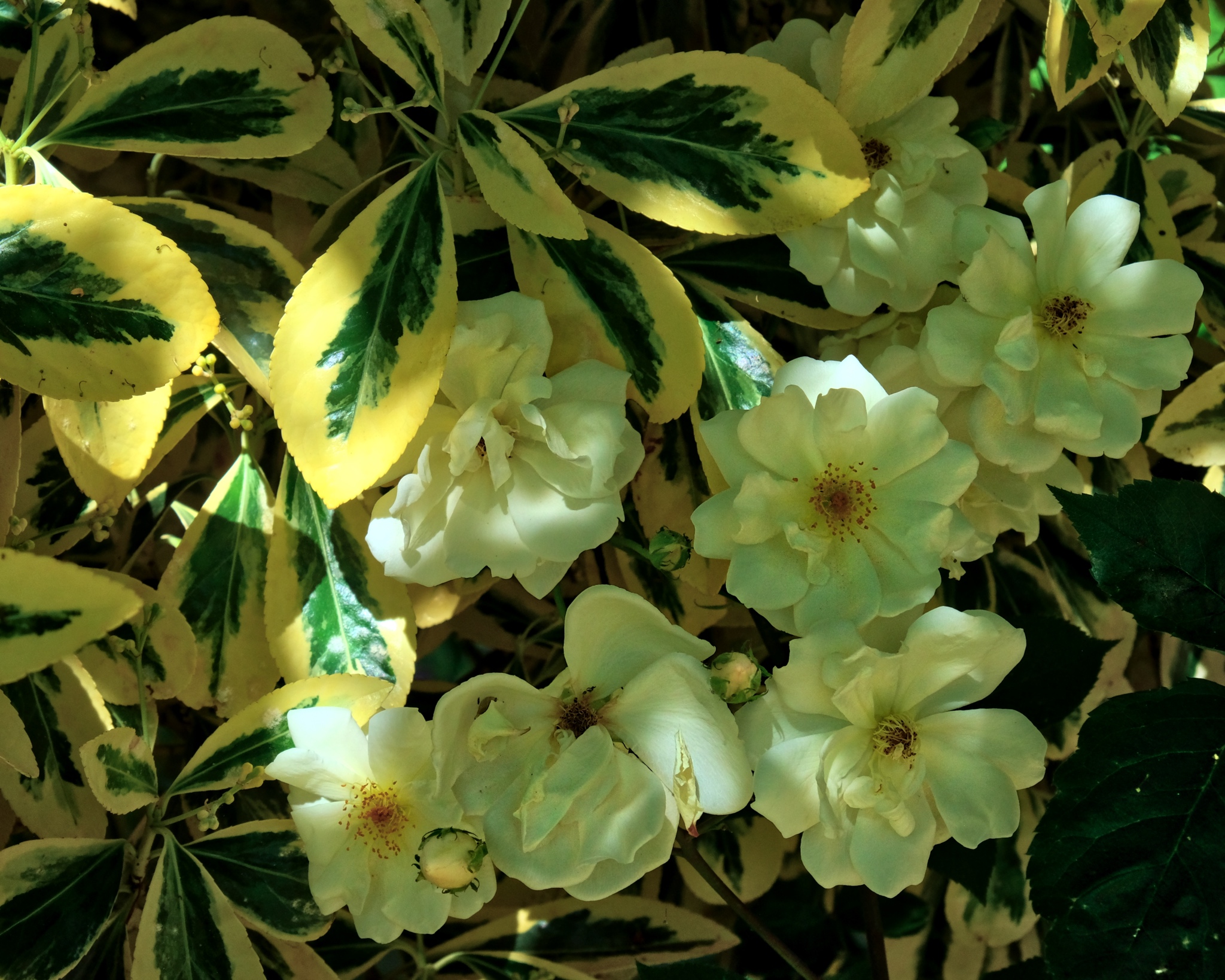 Filtered yellow light falling on a cluster of white flowers.
Filtered yellow light falling on a cluster of white flowers. Perfect.
Perfect.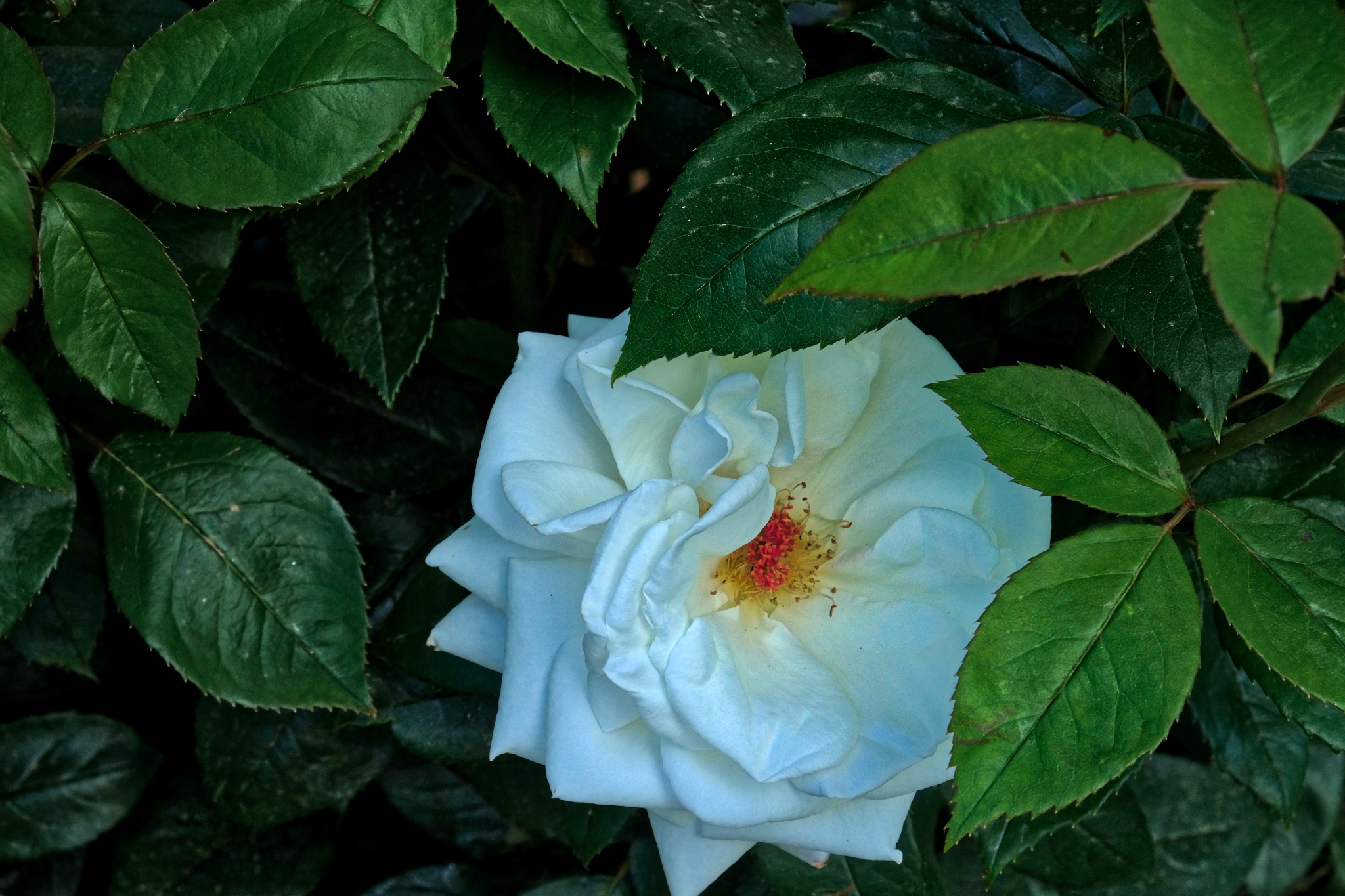 Deep inside a leafy bush . . . perfect white . . . in a perfect garden.
Deep inside a leafy bush . . . perfect white . . . in a perfect garden.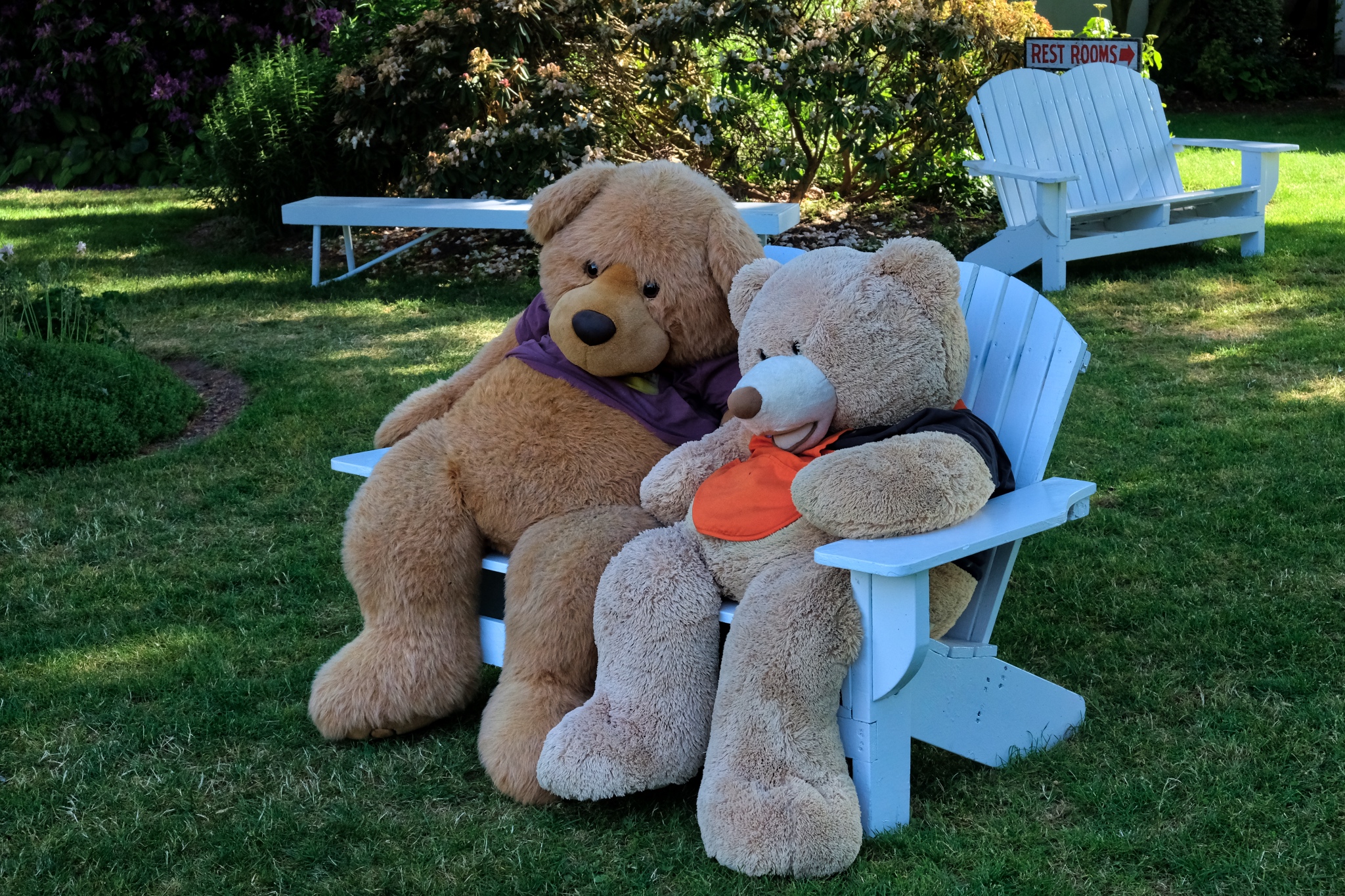 They obviously know that their garden is a magnet/catnip to photographers . . . and supplied these wonderful props for families. I hated to leave . . . but a BBQ beckoned!
They obviously know that their garden is a magnet/catnip to photographers . . . and supplied these wonderful props for families. I hated to leave . . . but a BBQ beckoned!Road Trip USA: Billy Frank Jr. Nisqually National Wildlife Refuge
 Thursday, July 5, 2018 at 2:21AM
Thursday, July 5, 2018 at 2:21AM 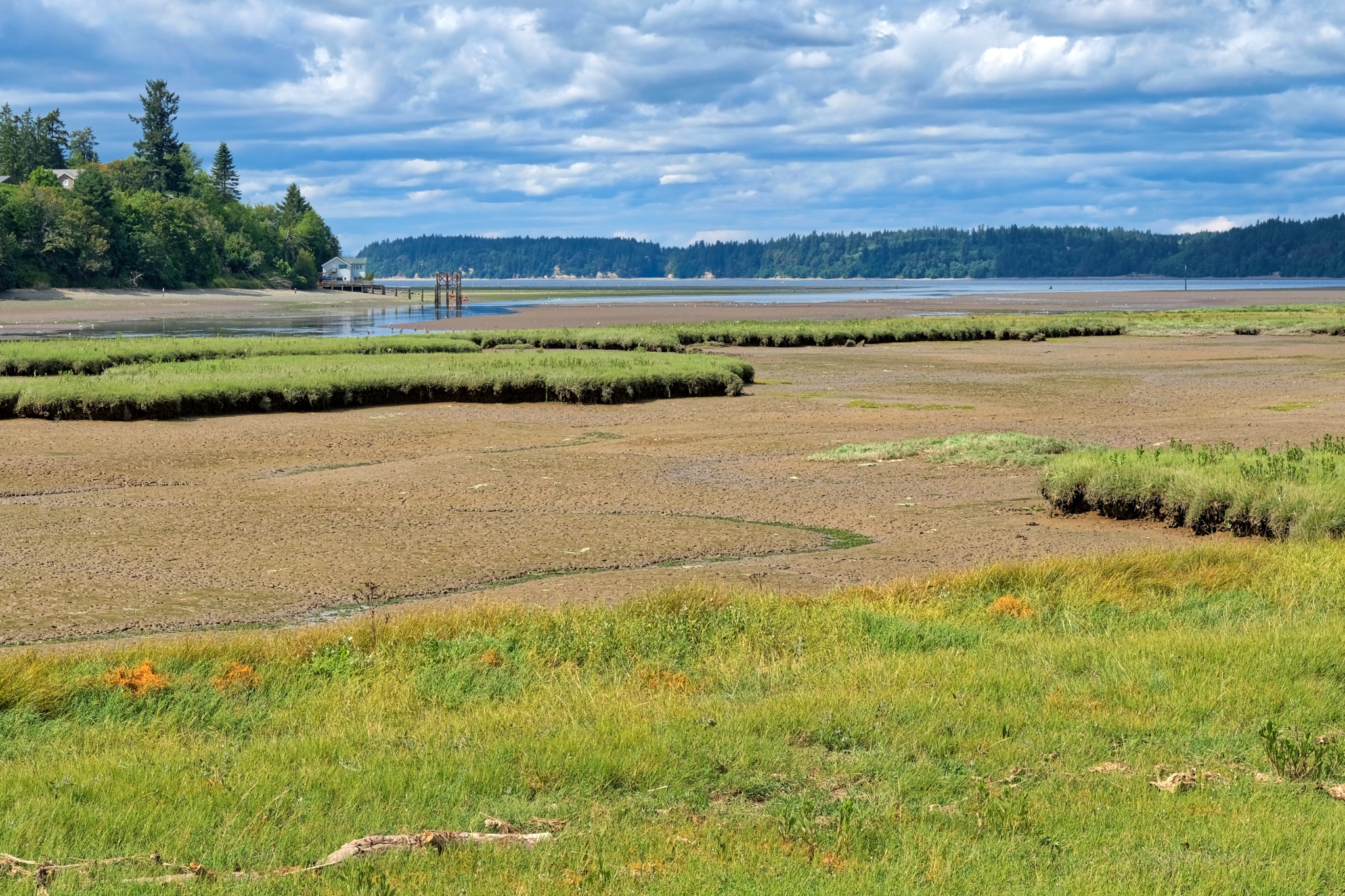 I spent a fine afternoon in the forest, fields, mud flats, and estuary of the Billy Frank Jr. Nisqually National Wildlife Reserve, near Olympia, Washington.
I spent a fine afternoon in the forest, fields, mud flats, and estuary of the Billy Frank Jr. Nisqually National Wildlife Reserve, near Olympia, Washington. I have wanted to go to the Nisqually Wildlife Reserve since I arrived in Washington a few months ago . . . and today was my chance: perfect weather. I passed Woodland Creek, an estuarial creek, several times before and stopped this time . . . it was on the way.
I have wanted to go to the Nisqually Wildlife Reserve since I arrived in Washington a few months ago . . . and today was my chance: perfect weather. I passed Woodland Creek, an estuarial creek, several times before and stopped this time . . . it was on the way. The wetlands grasses were in full mid-summer lushness.
The wetlands grasses were in full mid-summer lushness.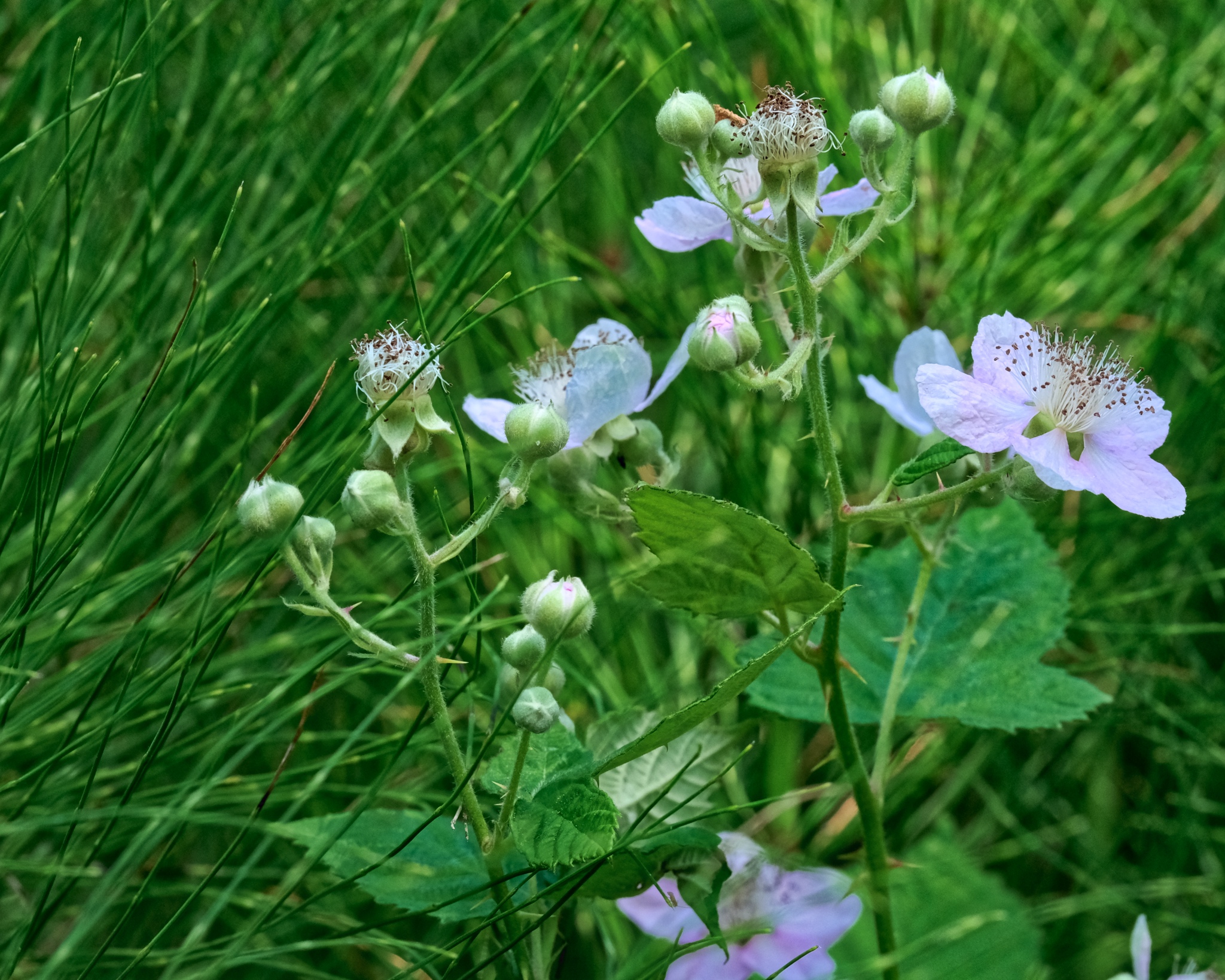 The blackberry vines grew among the horsetail ferns everywhere.
The blackberry vines grew among the horsetail ferns everywhere. Someone hung a large birdhouse along the path.
Someone hung a large birdhouse along the path. Beautiful summer wildflowers . . . and then a moving distraction along the creek . . .
Beautiful summer wildflowers . . . and then a moving distraction along the creek . . .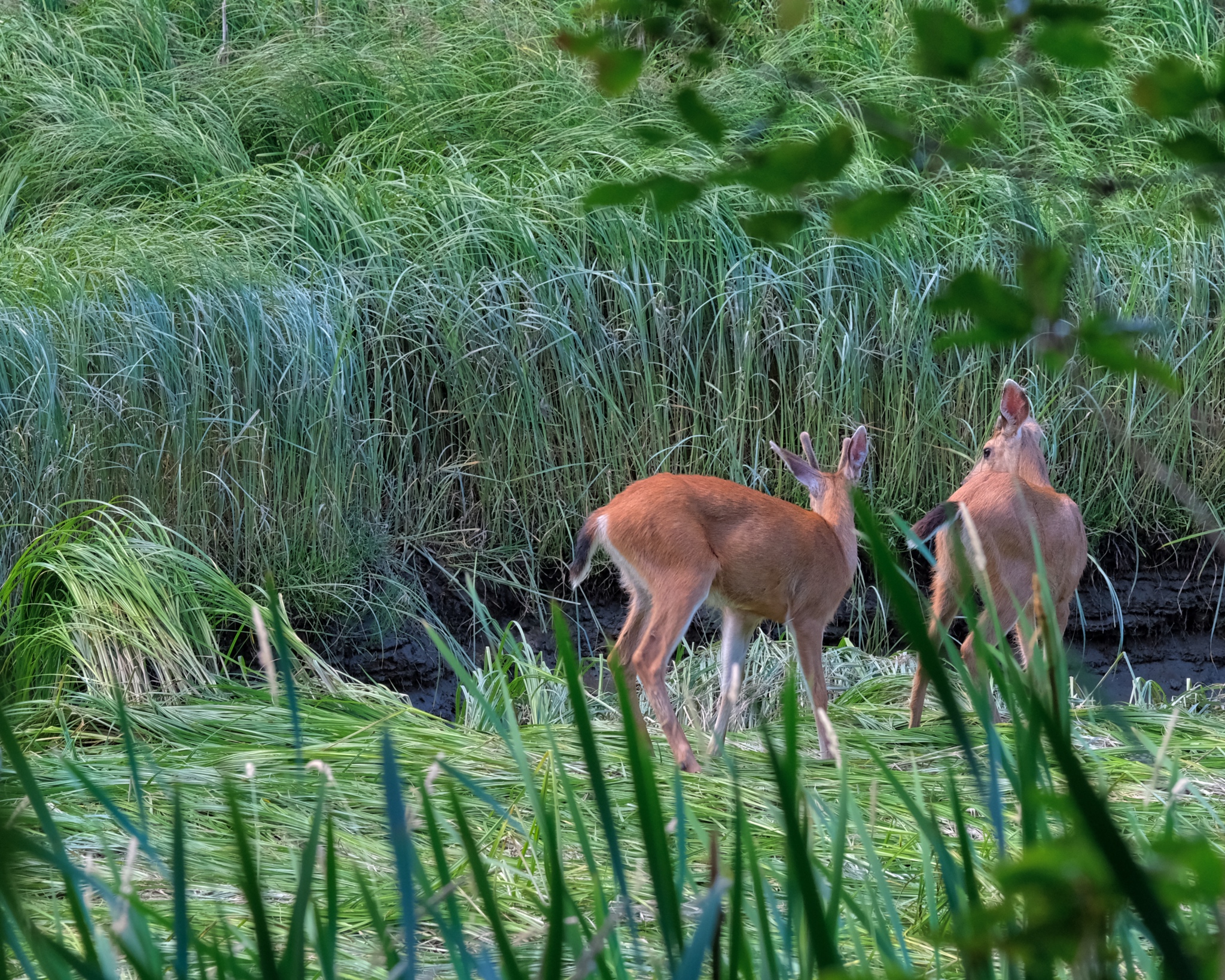 A wonderful surprise . . . . I sat very quietly, not 20 yards away.
A wonderful surprise . . . . I sat very quietly, not 20 yards away. I watched, and photographed, for over a half hour . . .
I watched, and photographed, for over a half hour . . .  They finally moved on along, walking in the Woodland Creek streambed. I followed, but lost sight of them in the dense forest.
They finally moved on along, walking in the Woodland Creek streambed. I followed, but lost sight of them in the dense forest. I wandered back to my camper along a horsetail fern-lined trail, and drove out to the Nisqually estuary.
I wandered back to my camper along a horsetail fern-lined trail, and drove out to the Nisqually estuary.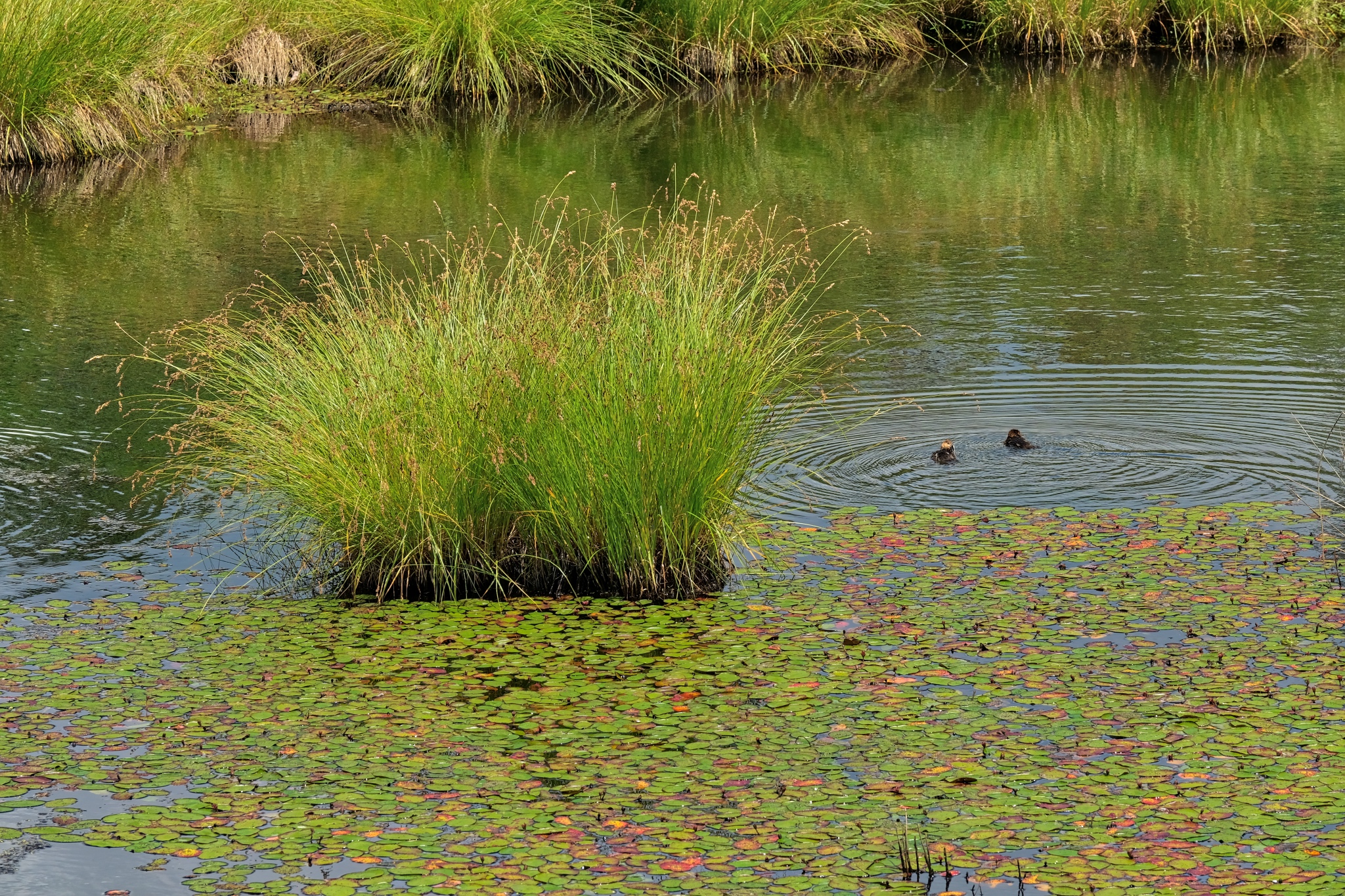 The Nisqually National Wildlife Reserve is comprised of four distinct natural ecological settings: freshwater ponds, wet forests, former farm fields, and estuarial mud flats (I visited during extreme low tide). All areas were fantastic! Here, diving ducks in a freshwater pond.
The Nisqually National Wildlife Reserve is comprised of four distinct natural ecological settings: freshwater ponds, wet forests, former farm fields, and estuarial mud flats (I visited during extreme low tide). All areas were fantastic! Here, diving ducks in a freshwater pond.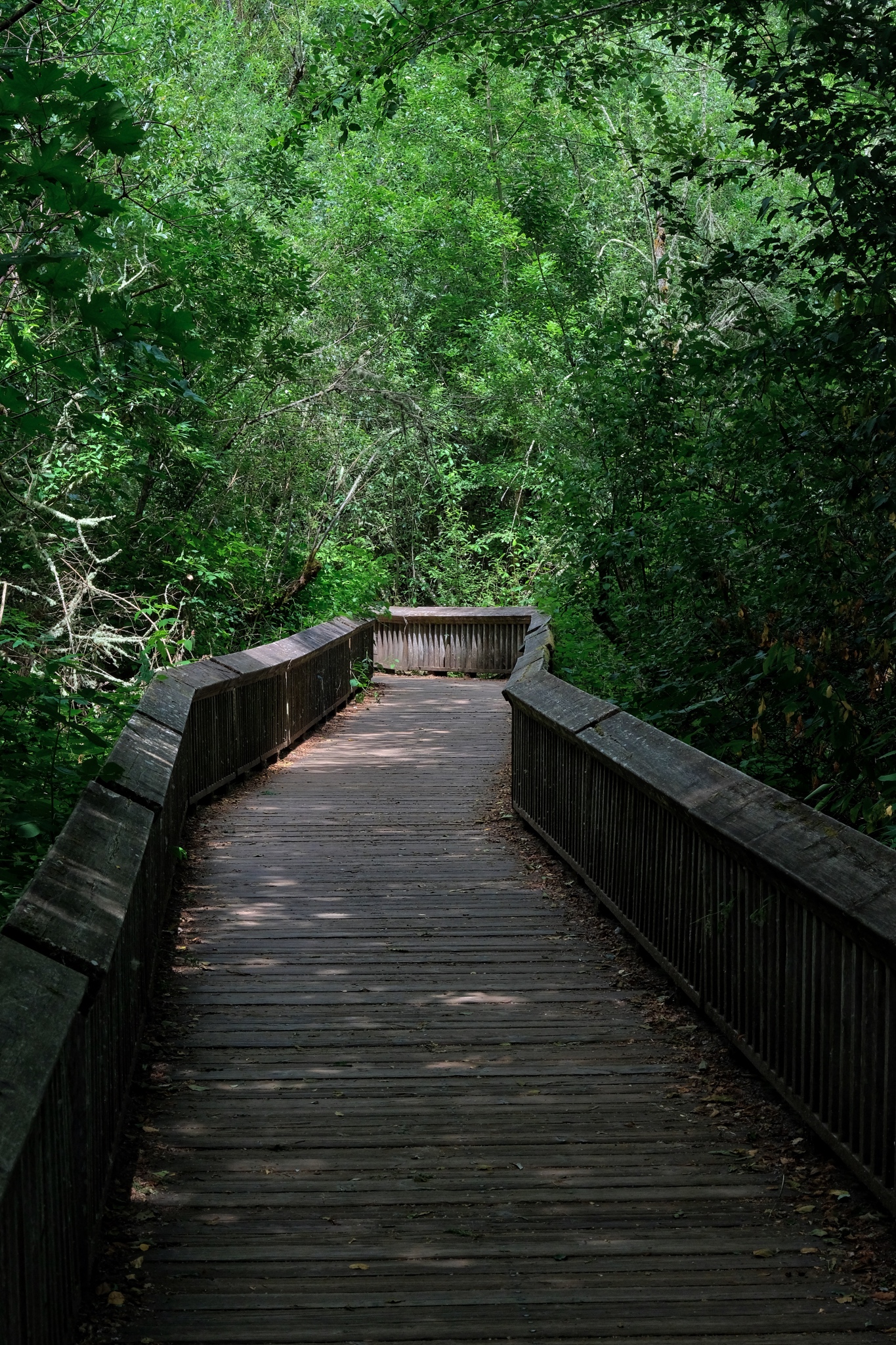 Elevated wooden walkways took visitors out into, and above the delicate ecology of the wet forest.
Elevated wooden walkways took visitors out into, and above the delicate ecology of the wet forest. The elevated walkways afforded wonderful views of the freshwater wetlands.
The elevated walkways afforded wonderful views of the freshwater wetlands.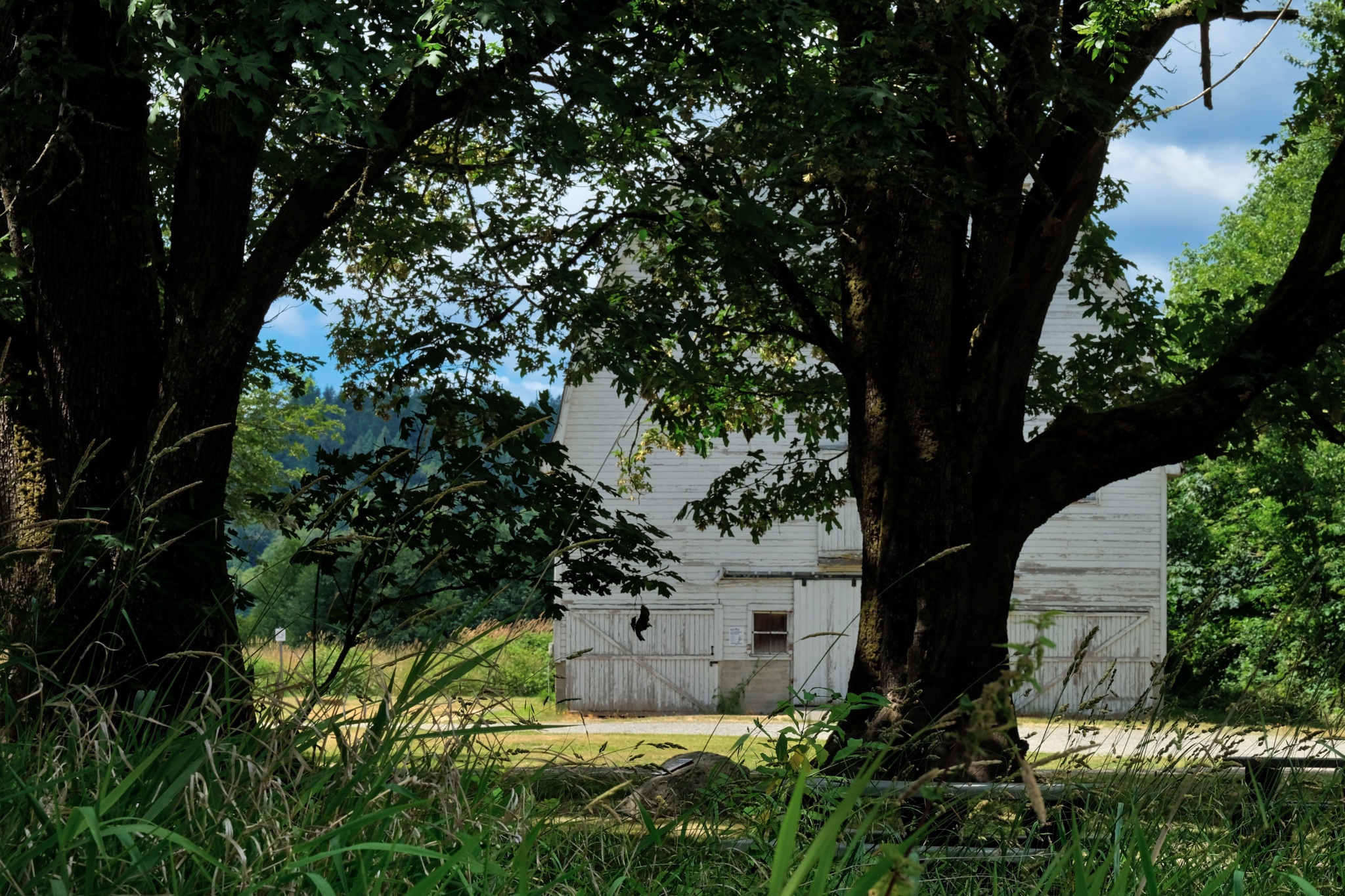 At the edge of the forest were the barns of an old settlement farm.
At the edge of the forest were the barns of an old settlement farm.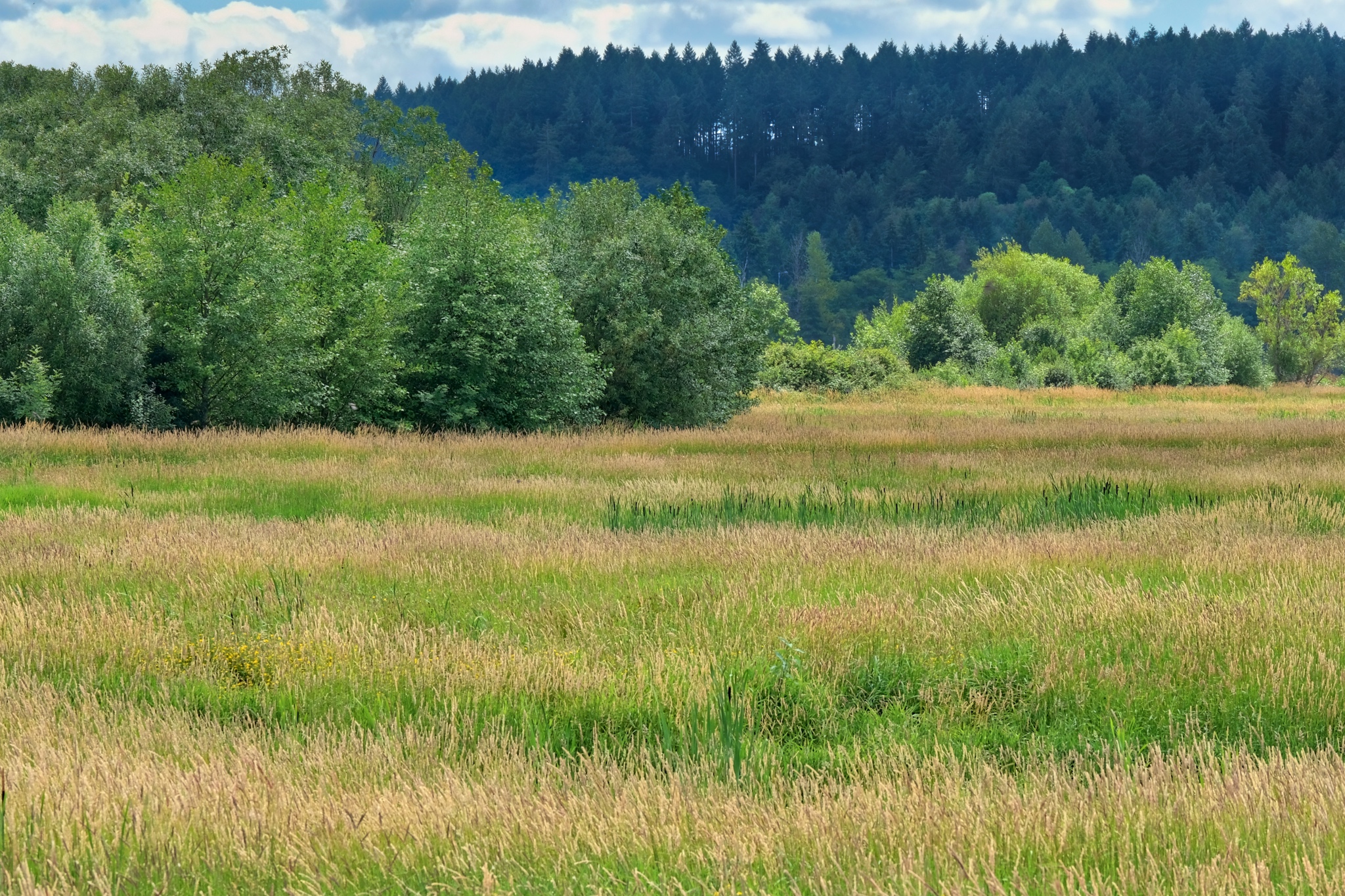 Early settlers expended a huge amount of labor and resources building a system of dykes to drain some of the Nisqually Estuary for farmland. The land now stands uncultivated . . . for the benefit of wildlife habitat.
Early settlers expended a huge amount of labor and resources building a system of dykes to drain some of the Nisqually Estuary for farmland. The land now stands uncultivated . . . for the benefit of wildlife habitat. The huge barn, now a part of the National Wildlife Reserve.
The huge barn, now a part of the National Wildlife Reserve.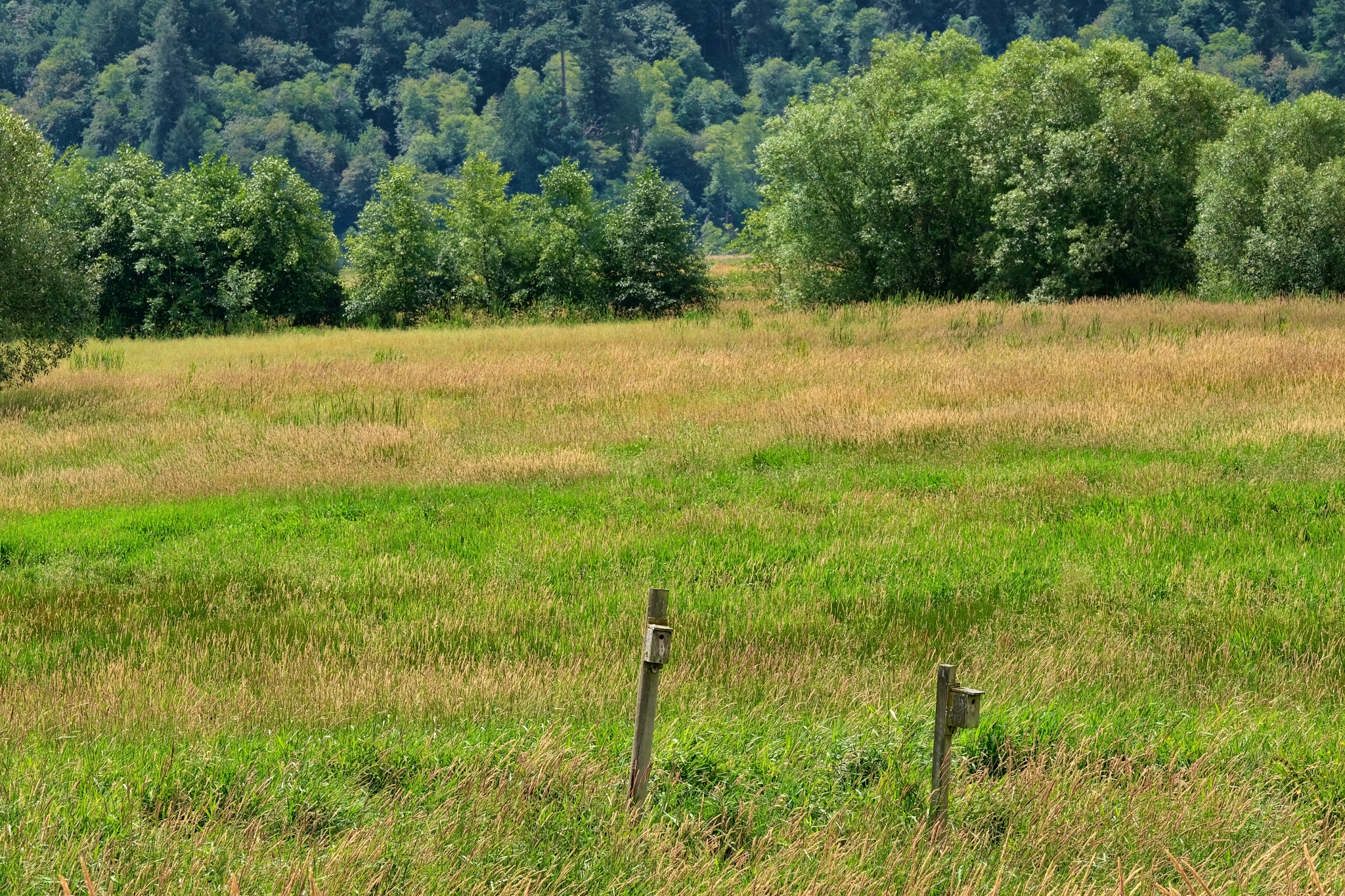 The colors of the fields and surrounding hills were breathtaking!
The colors of the fields and surrounding hills were breathtaking!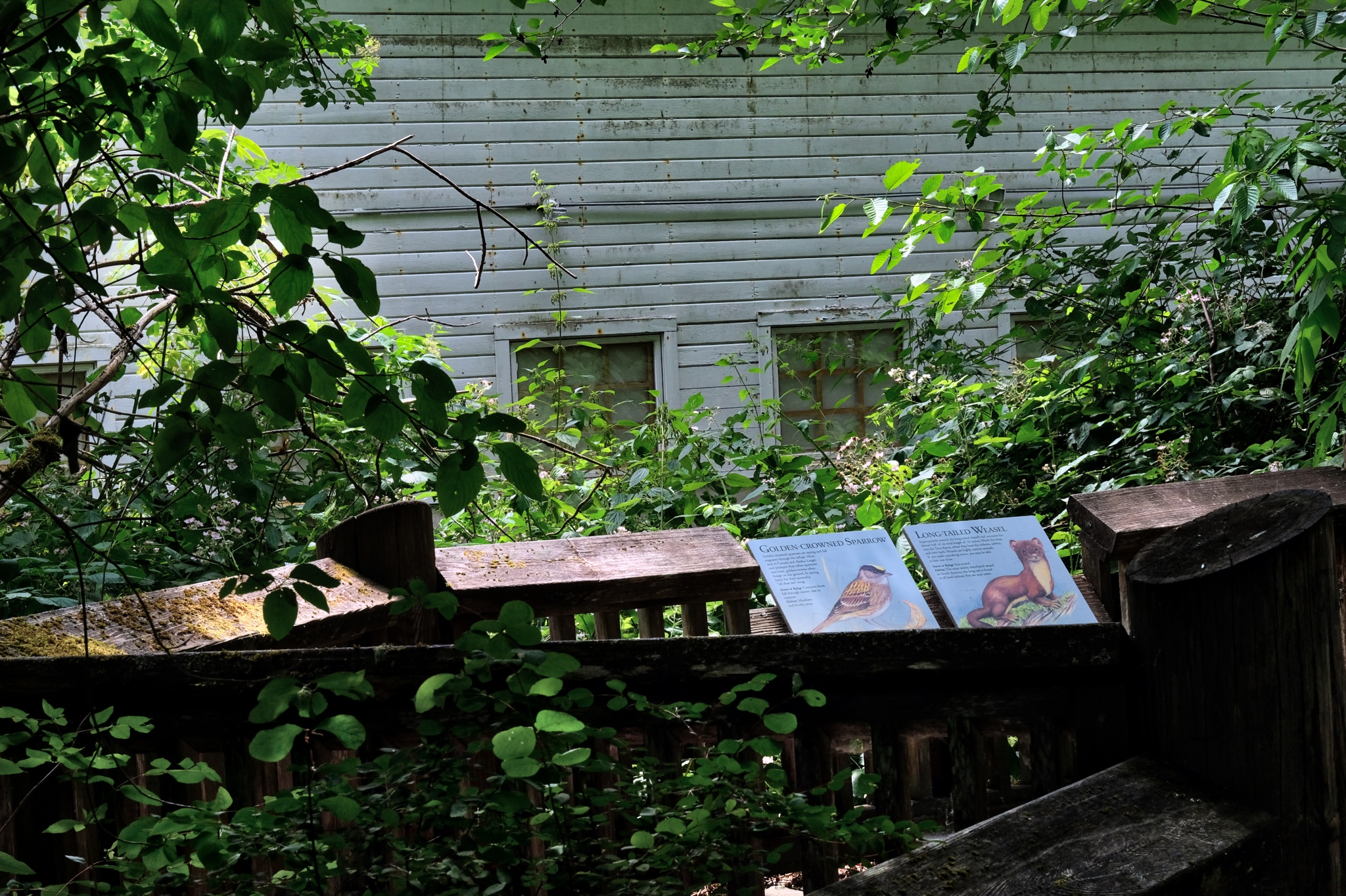 All the paths were well marked with informational signage about the indigenous flora, fauna, and local geology.
All the paths were well marked with informational signage about the indigenous flora, fauna, and local geology.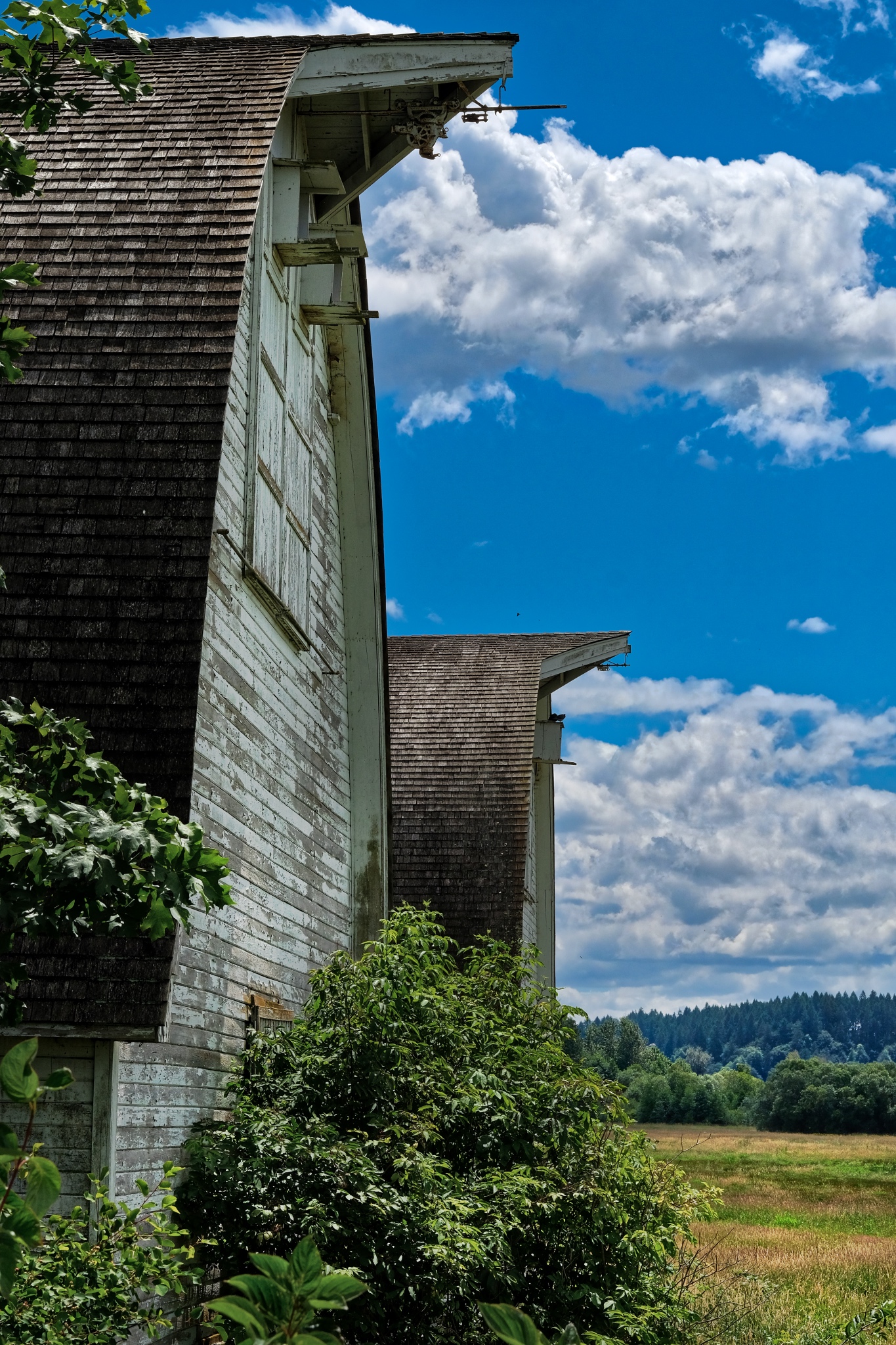 A wonderful angle from which to view the mammoth barns!
A wonderful angle from which to view the mammoth barns!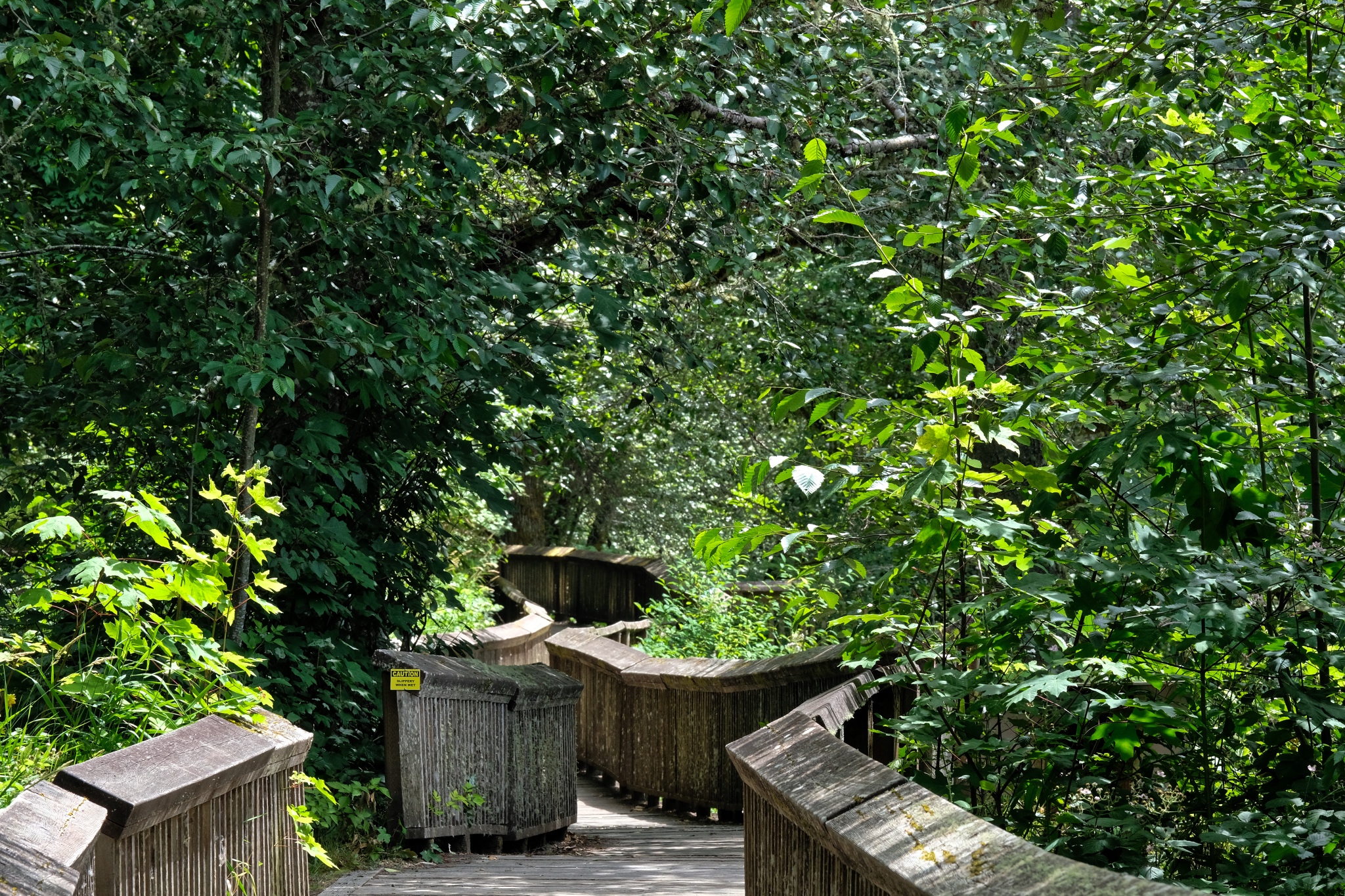 I wandered around some more on the elevated walkways, stopping here and there to take flower photos.
I wandered around some more on the elevated walkways, stopping here and there to take flower photos.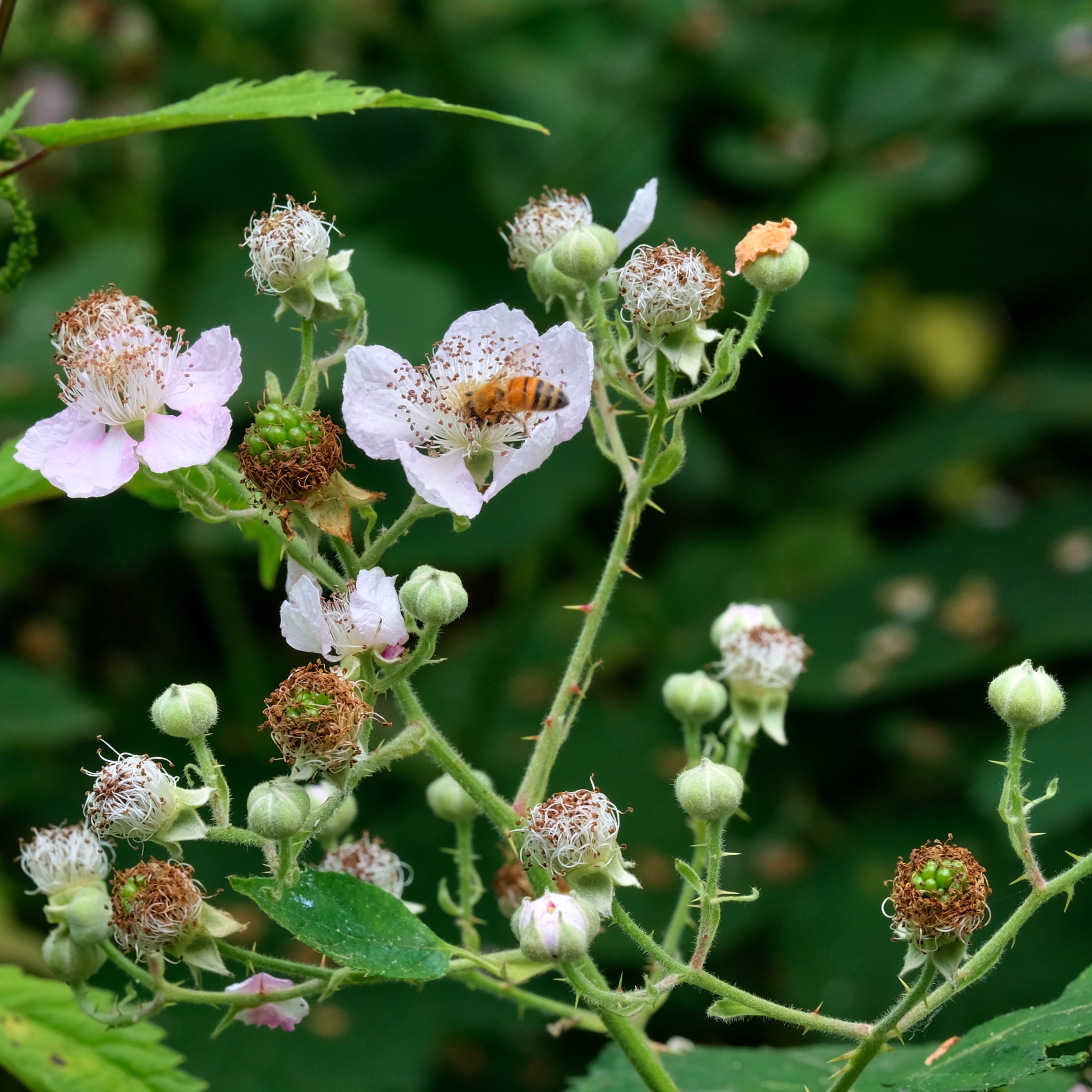 Busy bees . . . and . . .
Busy bees . . . and . . .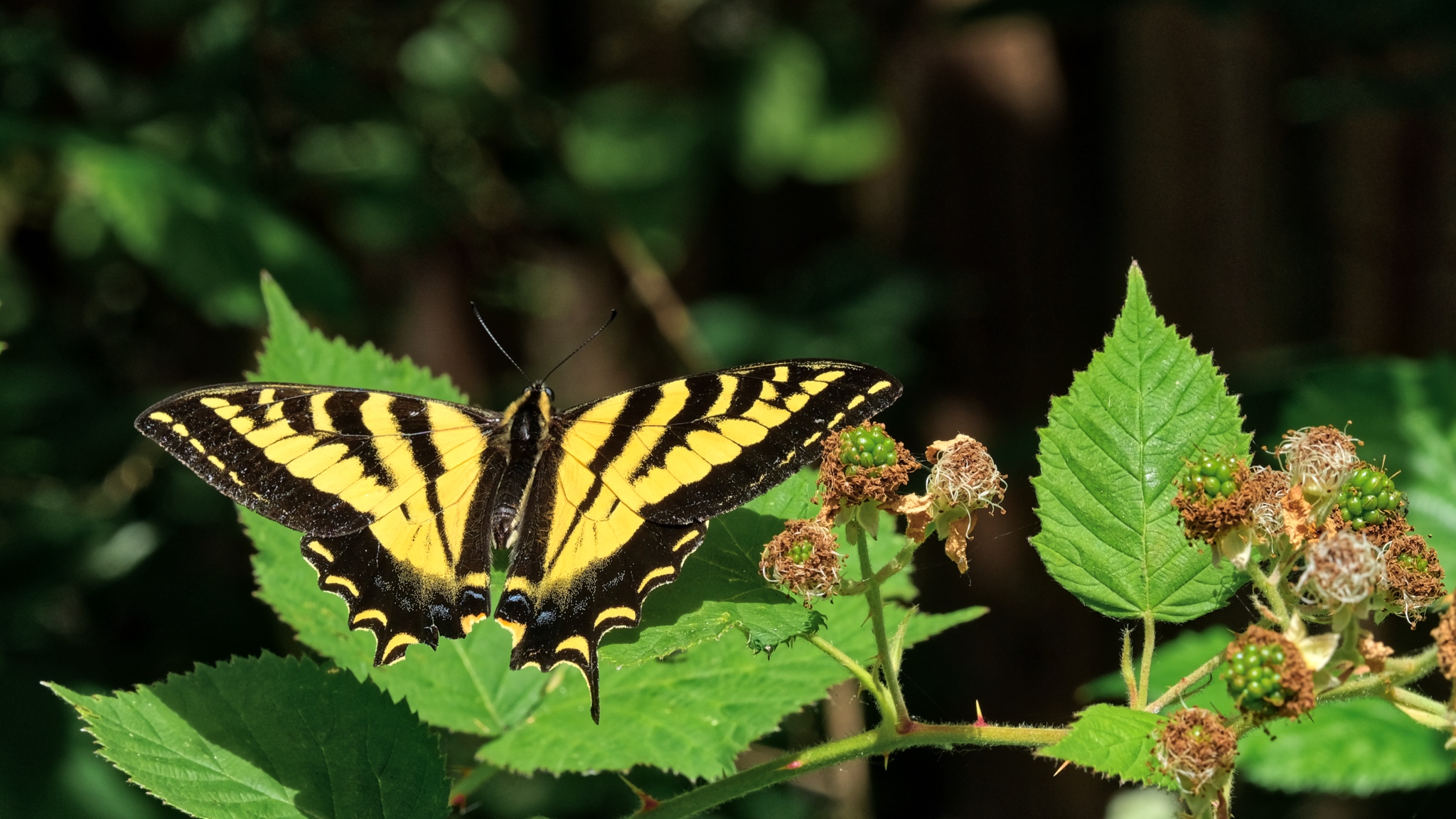 Busy butterflies too!
Busy butterflies too!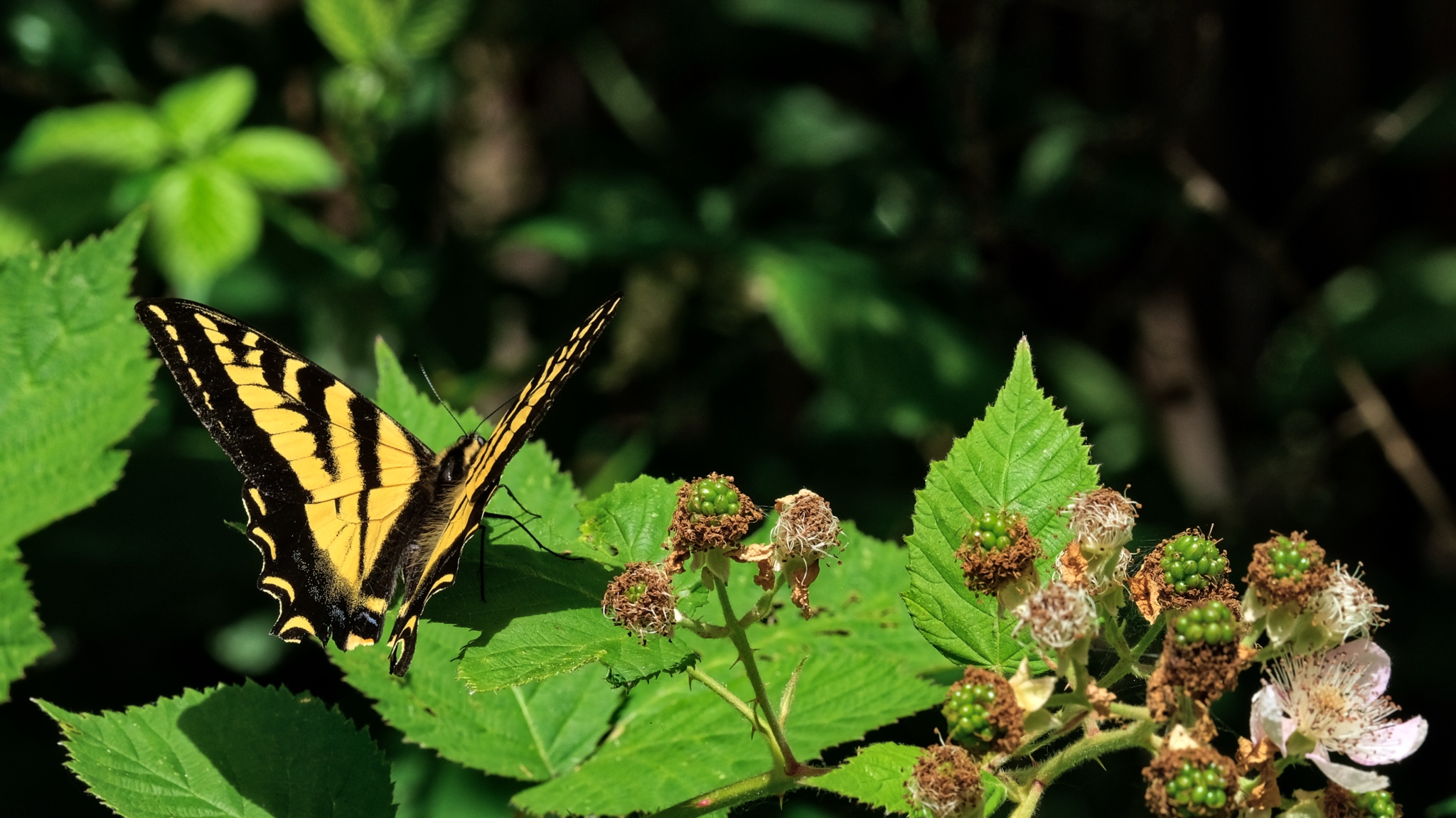 This one seemed to stay around just so I could photograph it!
This one seemed to stay around just so I could photograph it! I left the cool shade of the forest for the dry gravel path through the fields and onward toward the estuary . . .
I left the cool shade of the forest for the dry gravel path through the fields and onward toward the estuary . . .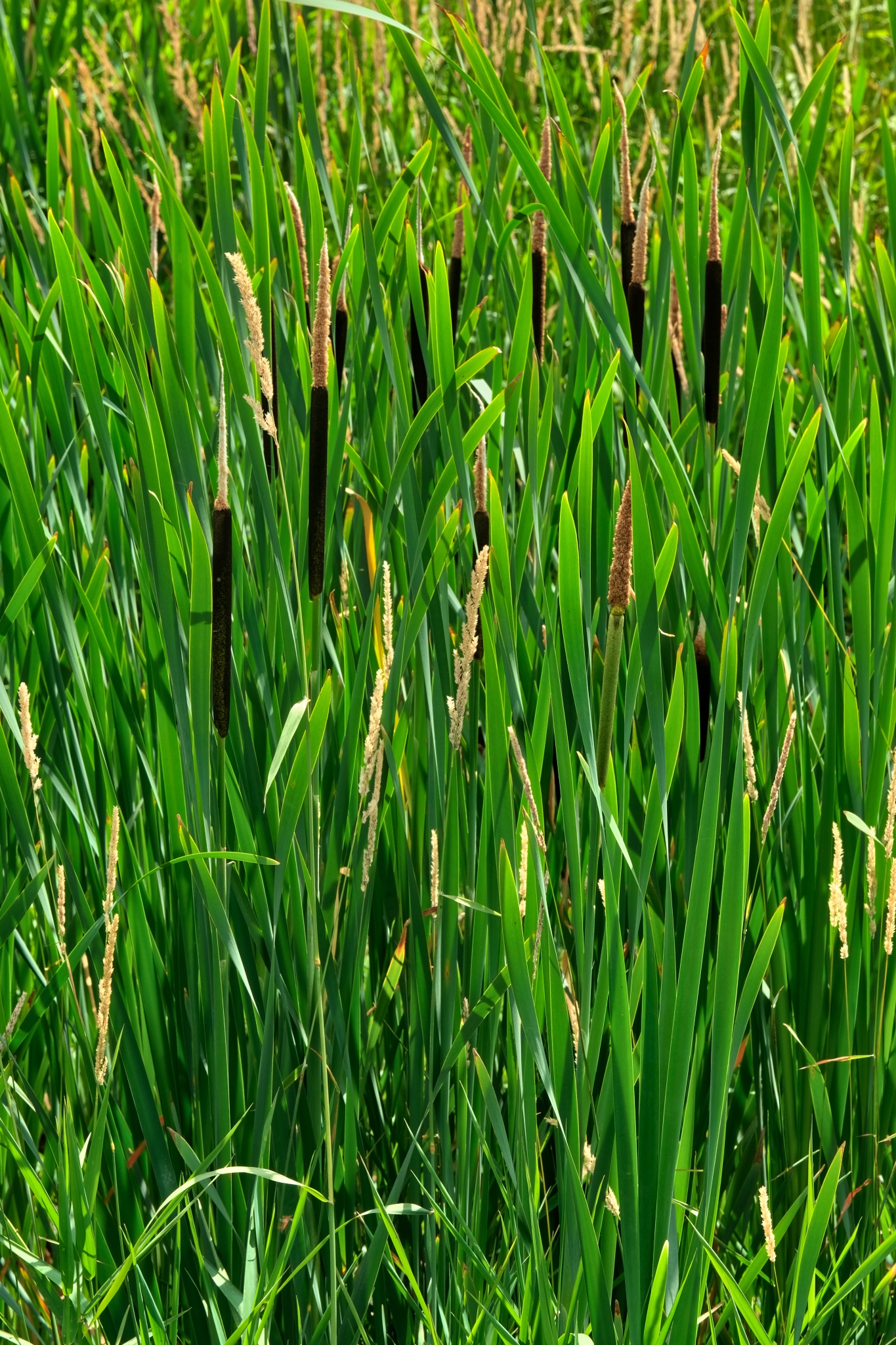 The old field drainage canals astride the dyke was full of thick bull rushes.
The old field drainage canals astride the dyke was full of thick bull rushes.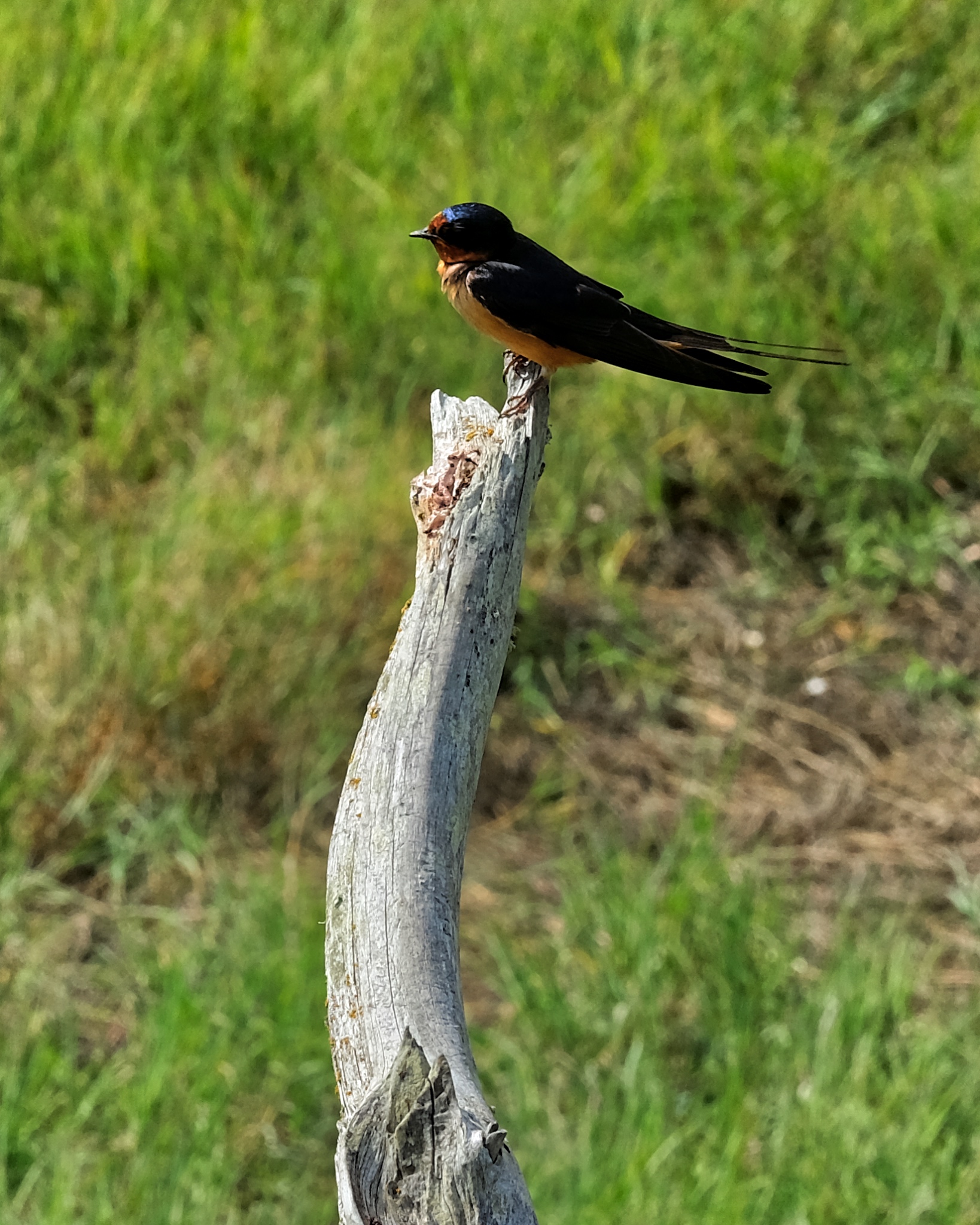 Many birds on the forest edge.
Many birds on the forest edge.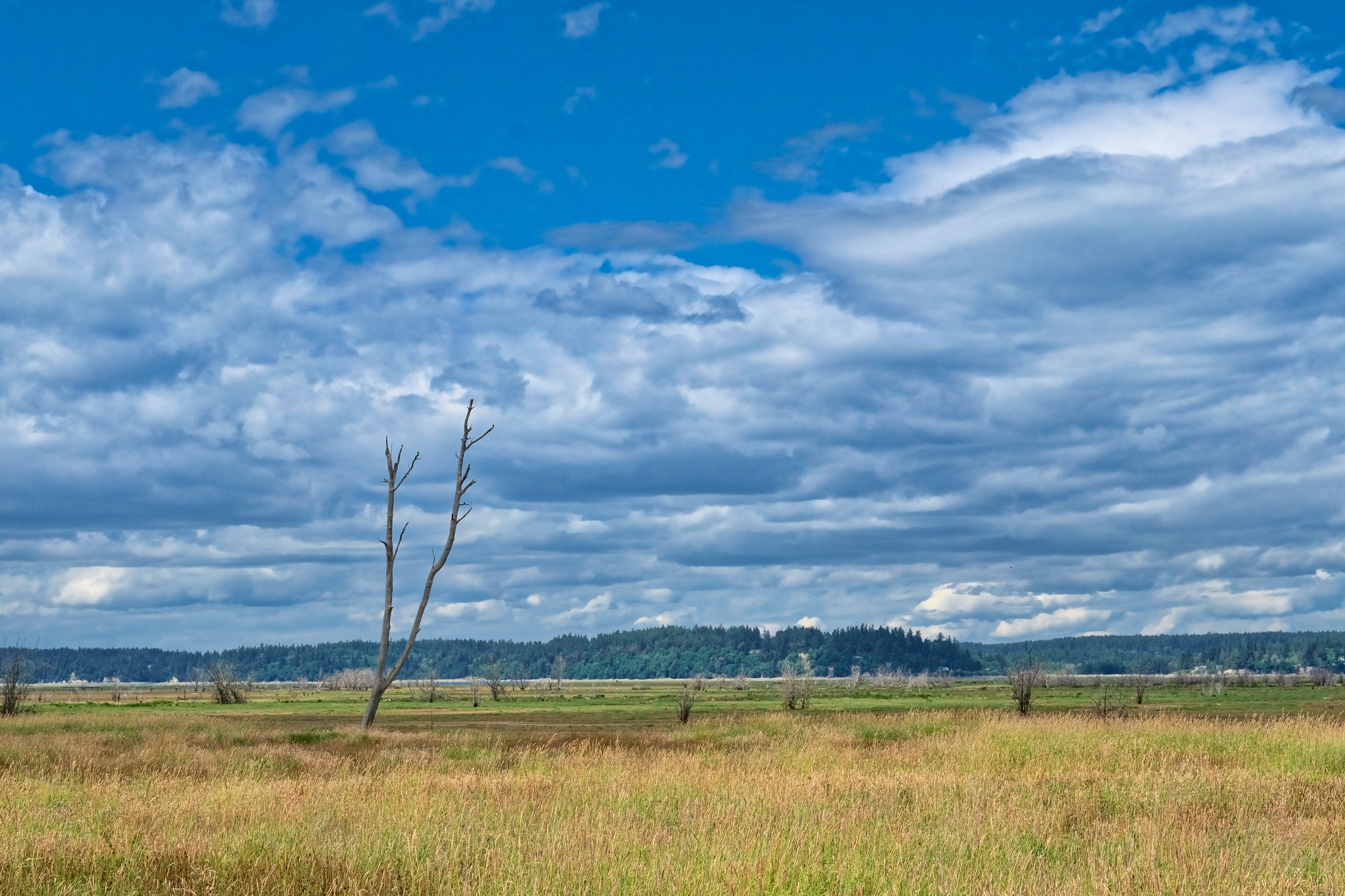 The grassy fields gradually gave way to estuarial flats.
The grassy fields gradually gave way to estuarial flats.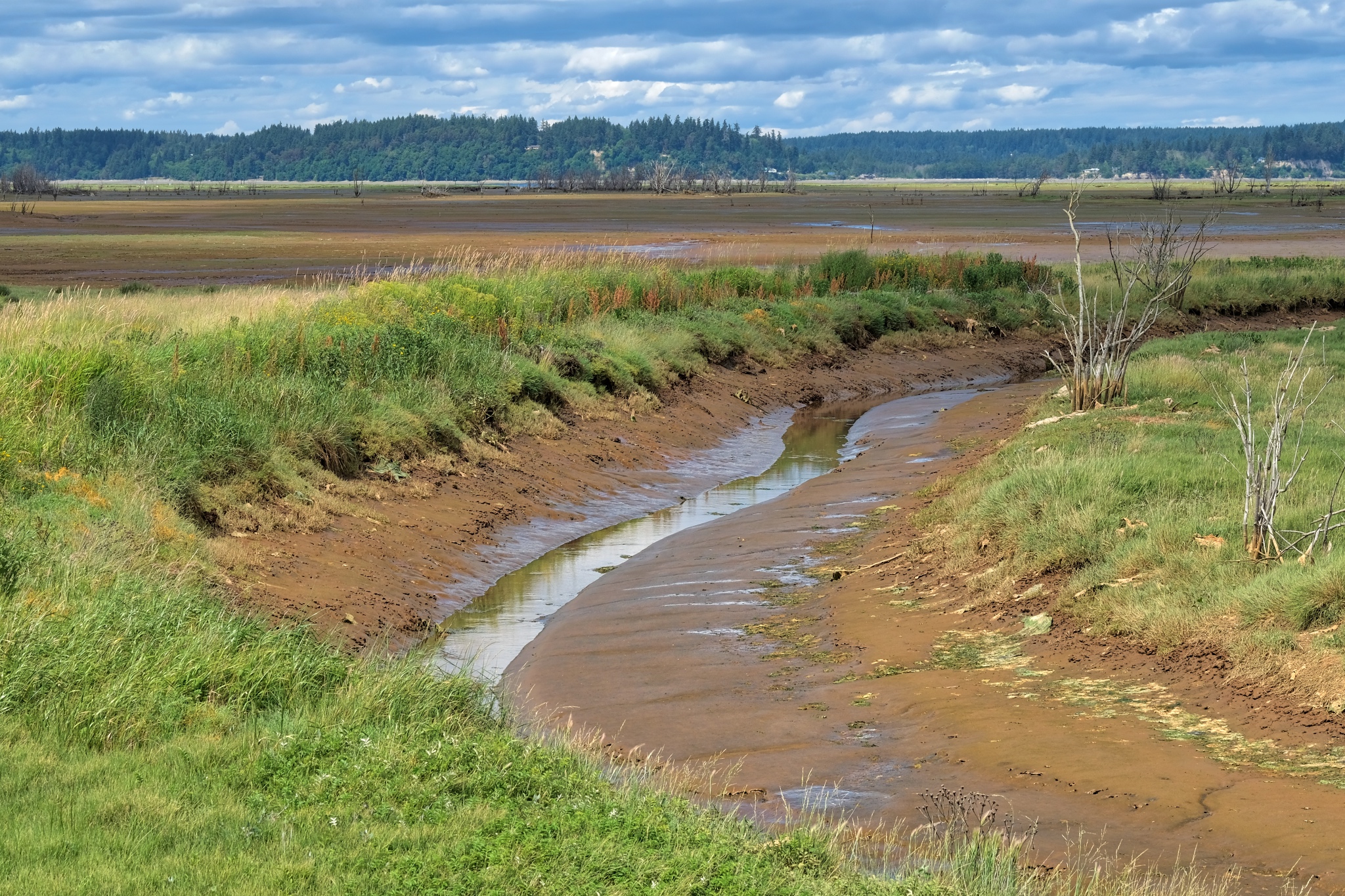 I knew the tide was going to be out when I saw these small bay arterial channels.
I knew the tide was going to be out when I saw these small bay arterial channels. My first view across the wetlands toward the elevated observation walkway.
My first view across the wetlands toward the elevated observation walkway.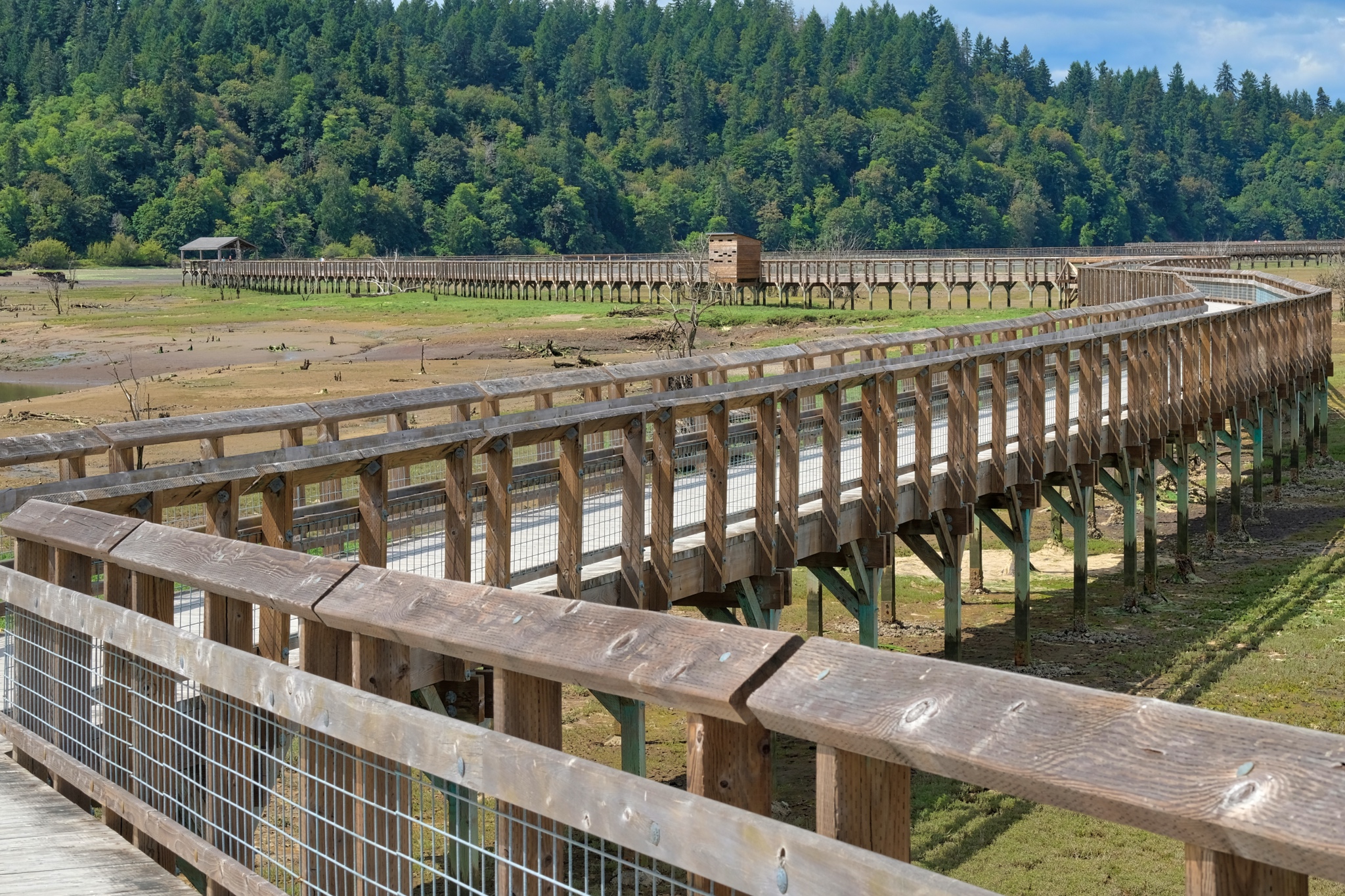 I climbed the ramp up onto the observation walkway . . . an incredible piece wooden construction in its own right.
I climbed the ramp up onto the observation walkway . . . an incredible piece wooden construction in its own right. The view back up the Nisqually River across dry sand bars.
The view back up the Nisqually River across dry sand bars.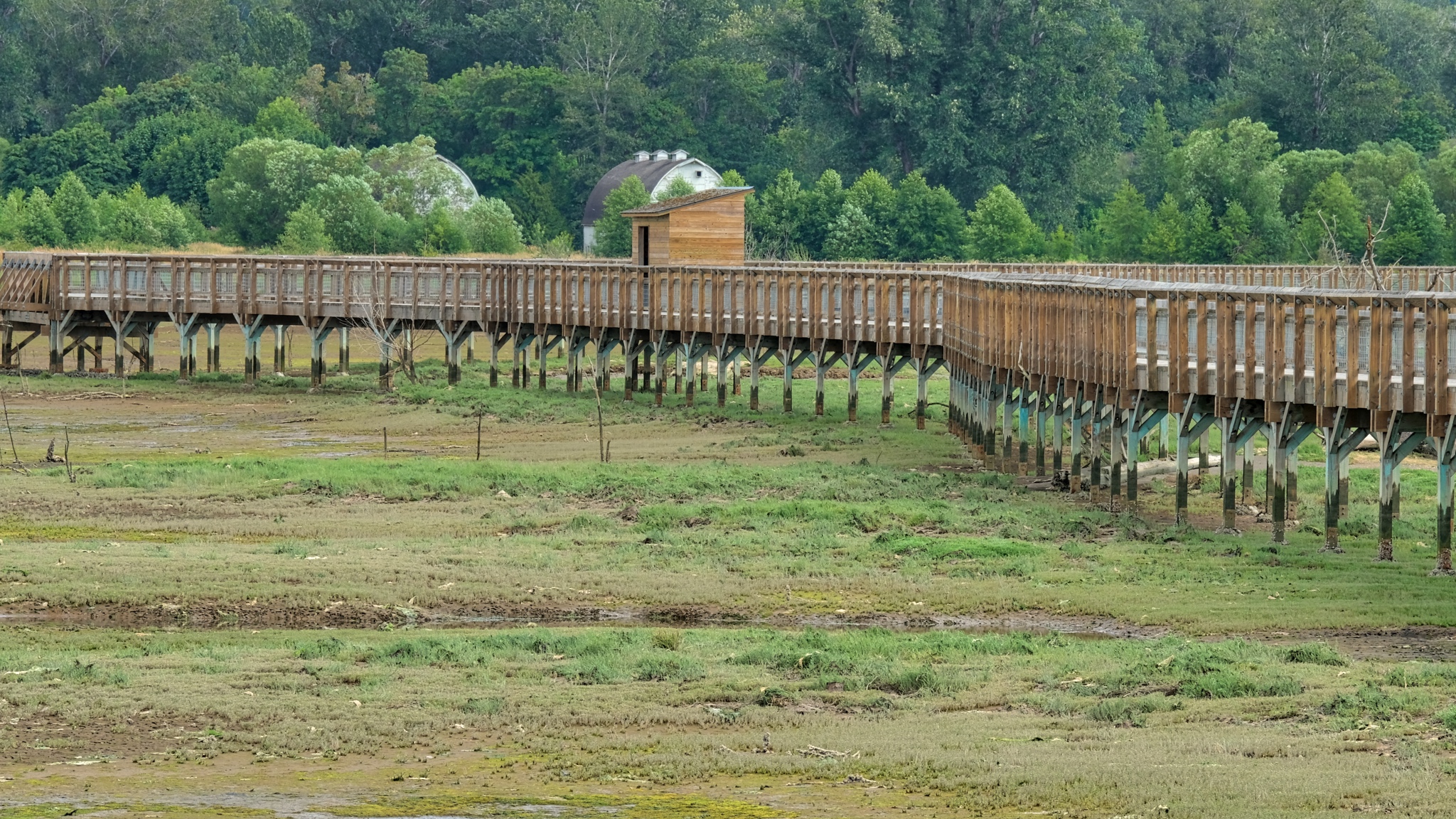 Looking back toward the tree line and the old ban from the walkway.
Looking back toward the tree line and the old ban from the walkway.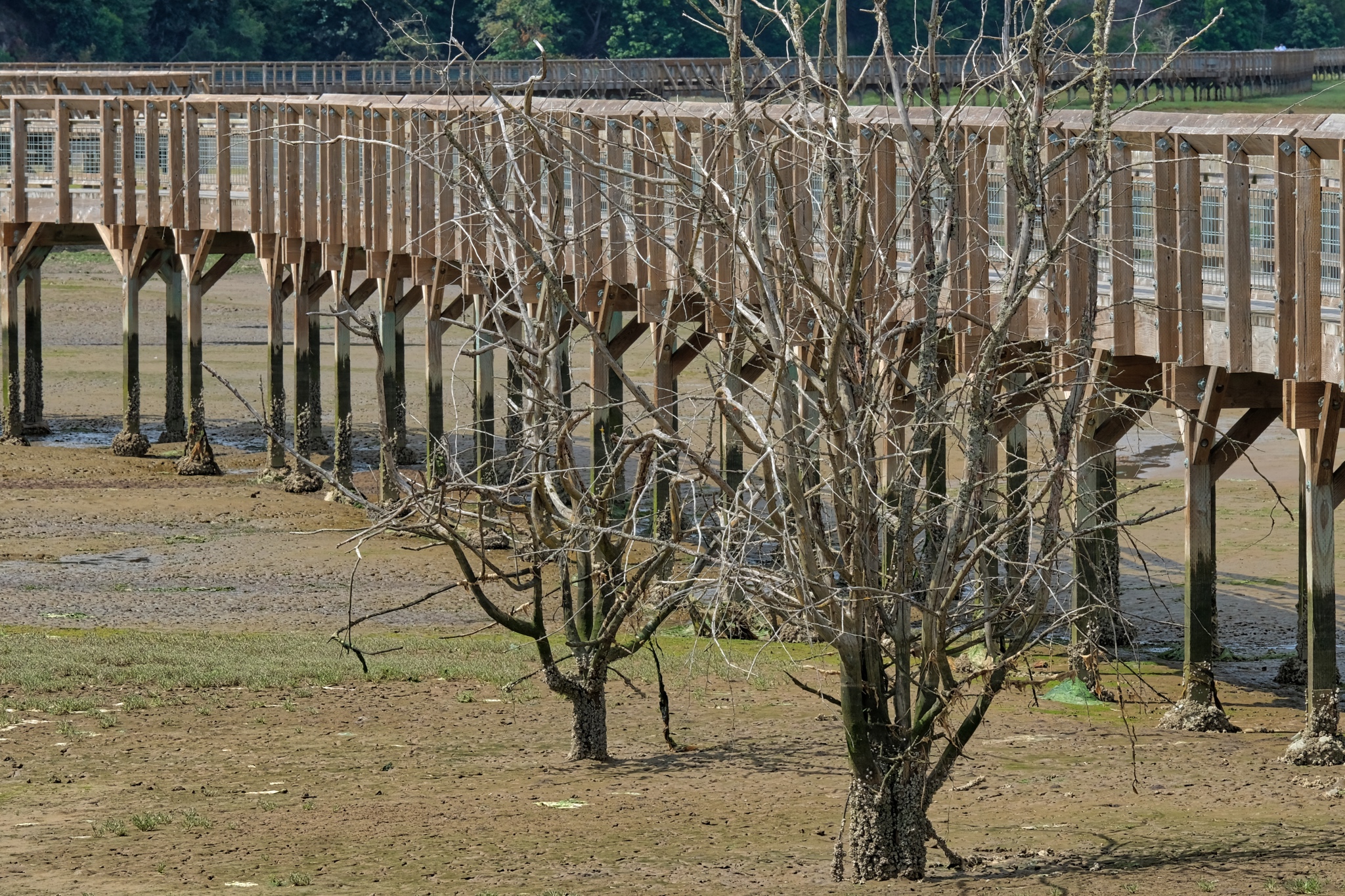 The sights from the walkway were both strange and captivating. You cannot visit these low tide estuarial landscapes any other way.
The sights from the walkway were both strange and captivating. You cannot visit these low tide estuarial landscapes any other way. A mega-walkway!
A mega-walkway!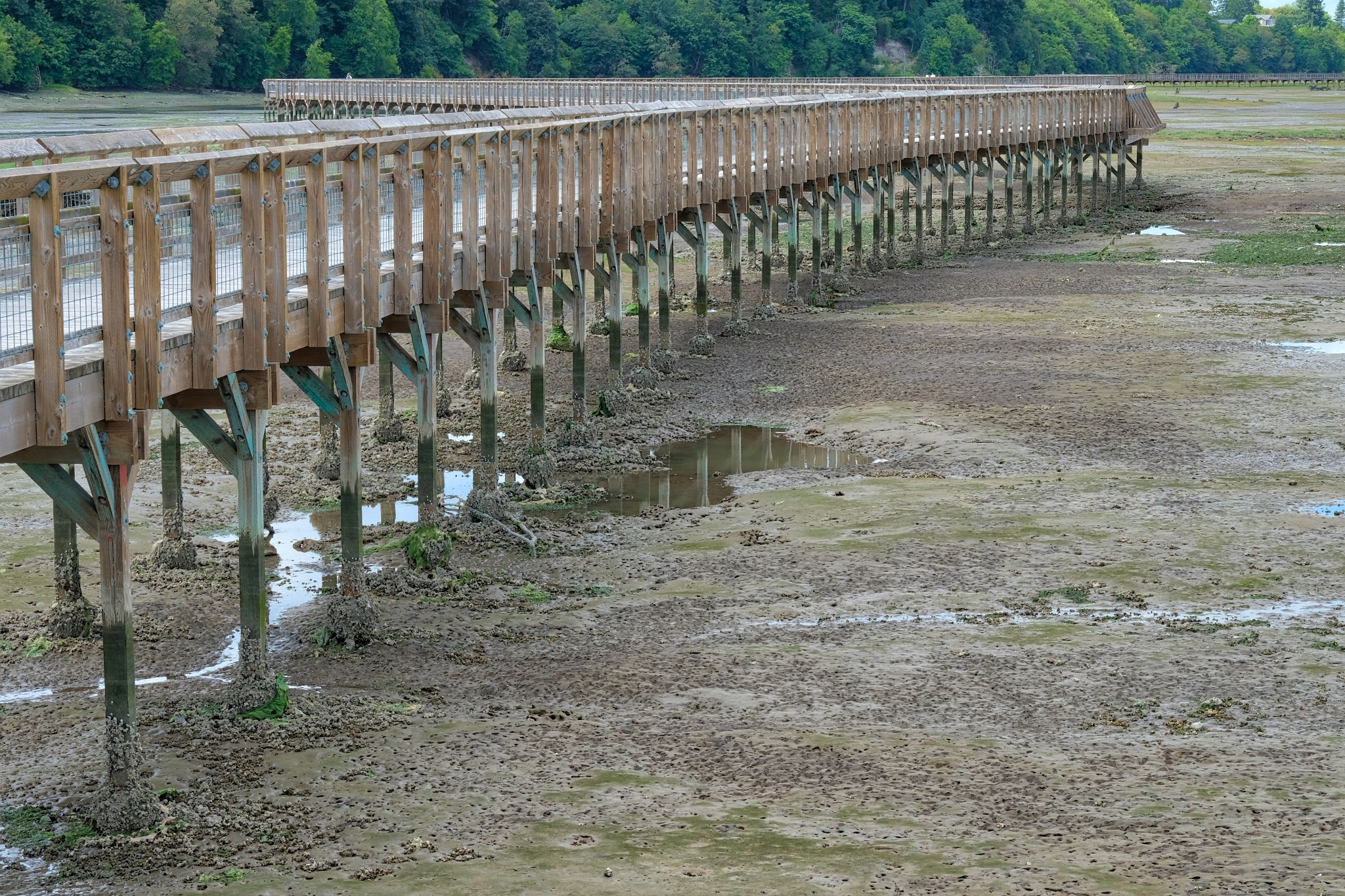 The further out I went the more it became an exposed bay floor.
The further out I went the more it became an exposed bay floor. On one side of the walkway was the Nisqually River . . . with evidence of the pilings of old commercial structures.
On one side of the walkway was the Nisqually River . . . with evidence of the pilings of old commercial structures. Some commercial project lost to time.
Some commercial project lost to time. On the other side of the walkway was a vista across vast mud flats . . . loaded with very interesting objects!
On the other side of the walkway was a vista across vast mud flats . . . loaded with very interesting objects!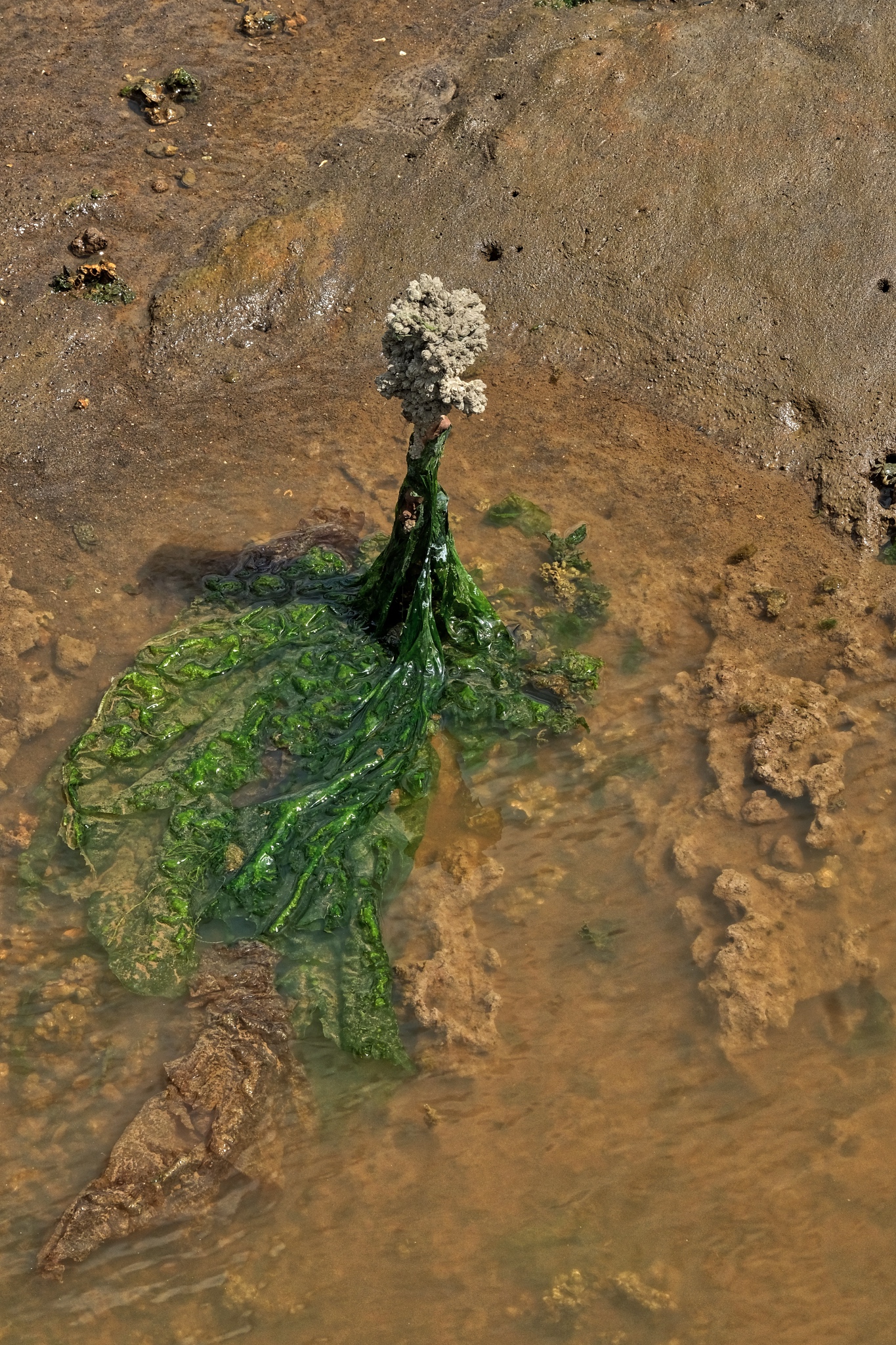 Strange things . . . . and, unfortunately all too many plastic bags!
Strange things . . . . and, unfortunately all too many plastic bags!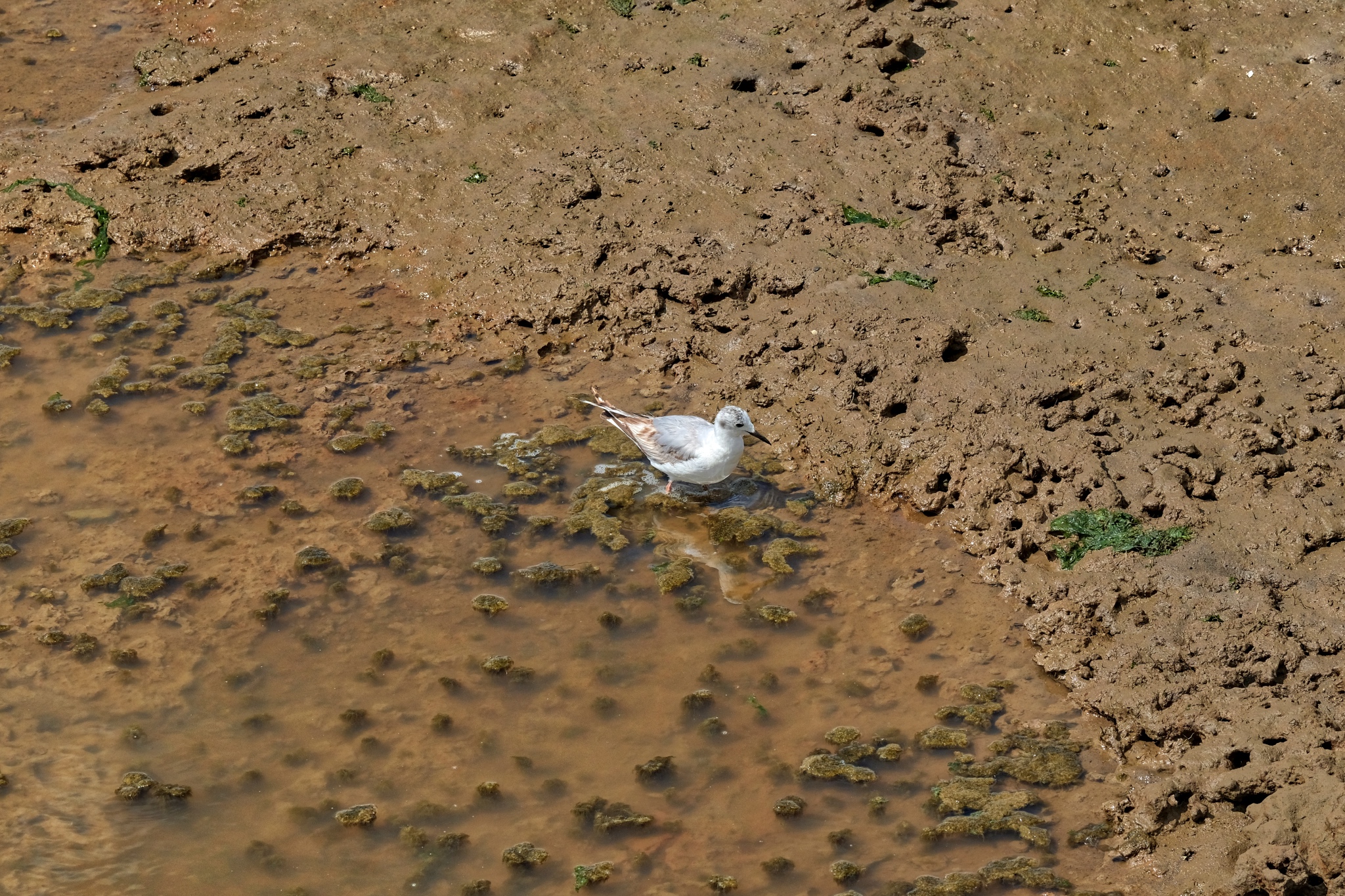 There were not as many birds as I somehow had expected . . . but there were birds.
There were not as many birds as I somehow had expected . . . but there were birds.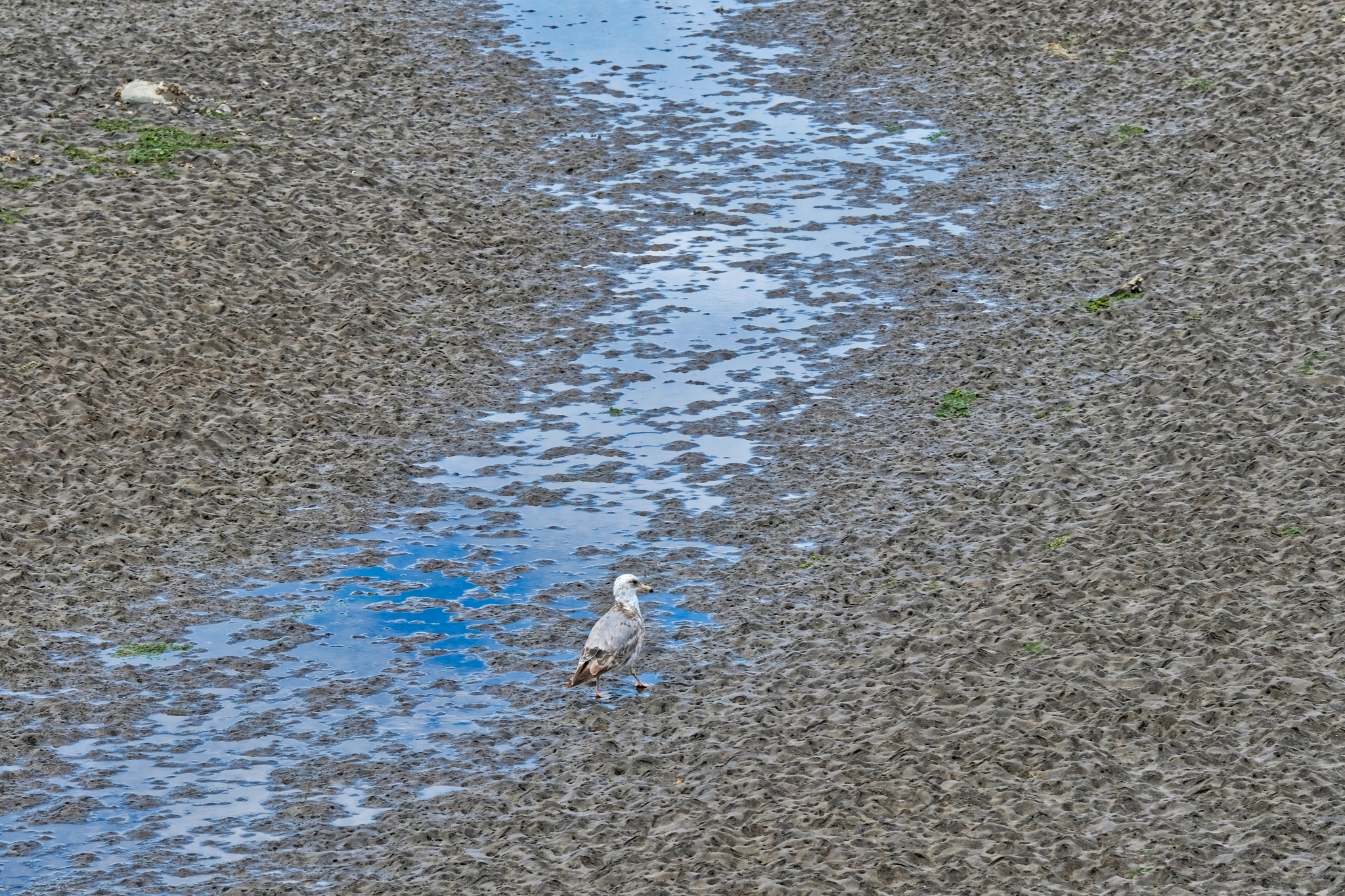 A gull loitering in the muddy estuary . . .
A gull loitering in the muddy estuary . . . 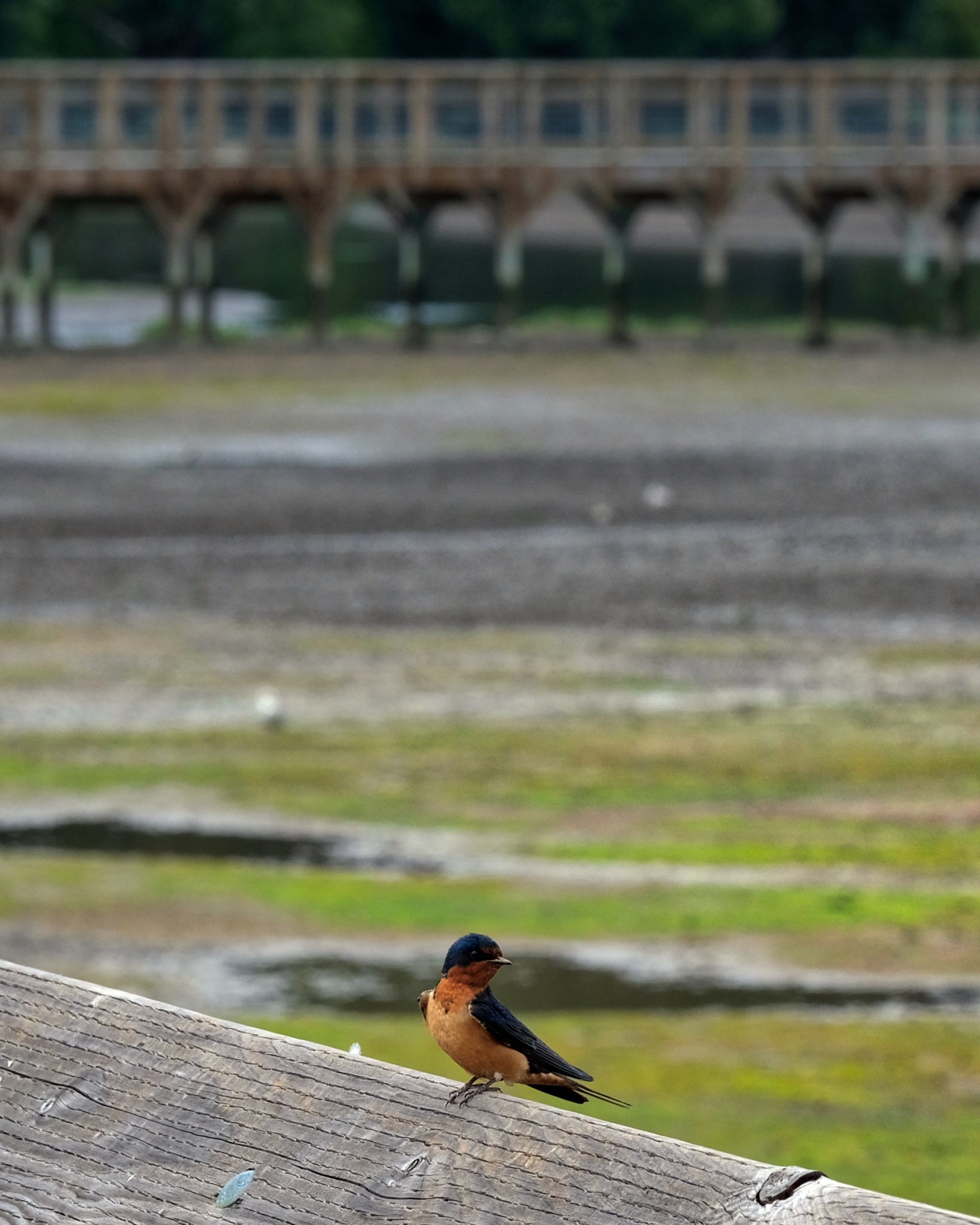 A friendly little fellow!
A friendly little fellow!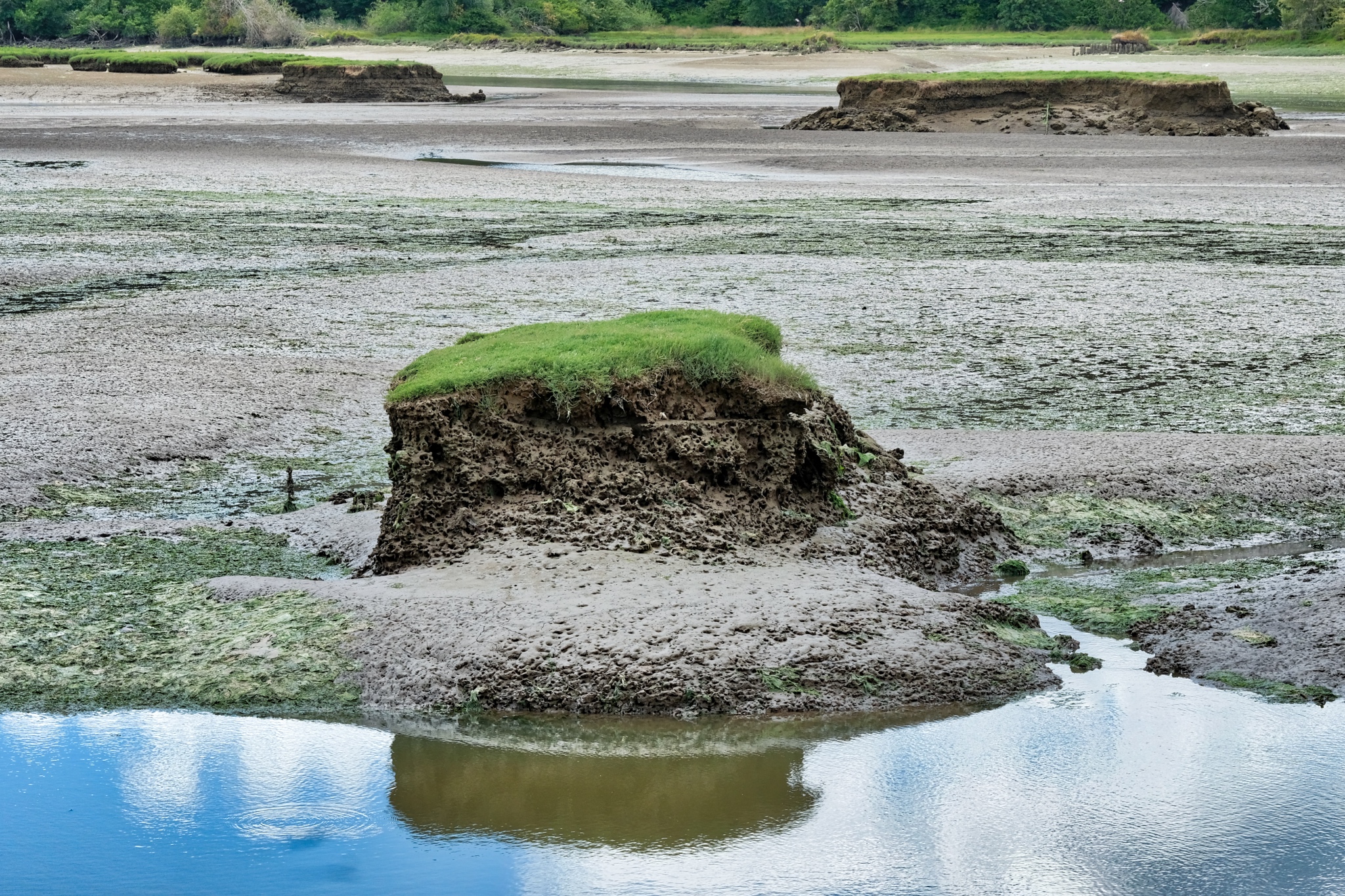 Evidence of sea level rise: the old level of the fields and 'dry' flats are eroding away with only a few small 'islands' of the old land level left. Only a few inches of sea level rise can cause this kind of erosion of wetlands.
Evidence of sea level rise: the old level of the fields and 'dry' flats are eroding away with only a few small 'islands' of the old land level left. Only a few inches of sea level rise can cause this kind of erosion of wetlands.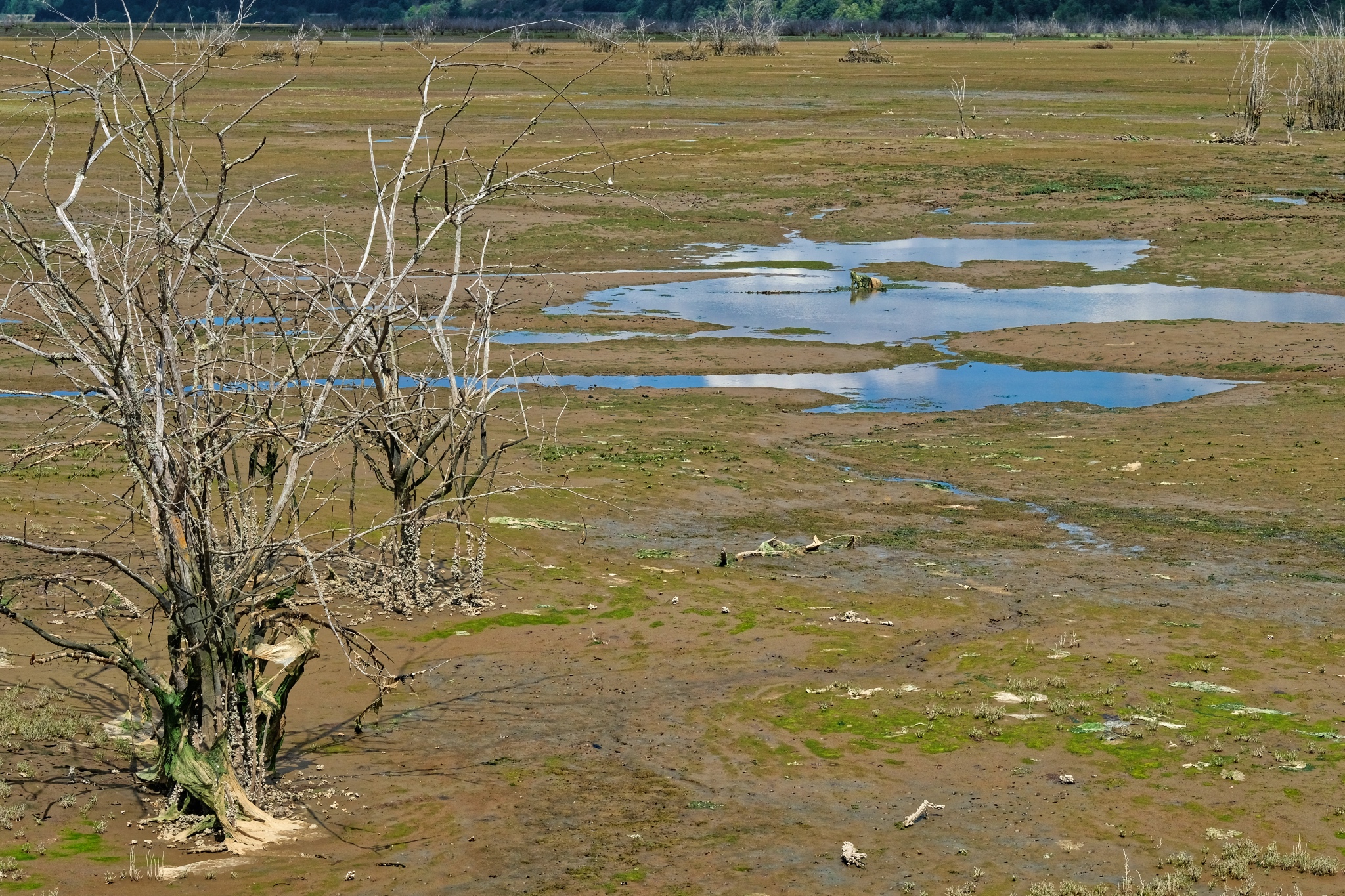 Sea water inundation into previously 'dry' areas.
Sea water inundation into previously 'dry' areas. A new ecology is beginning to develop.
A new ecology is beginning to develop.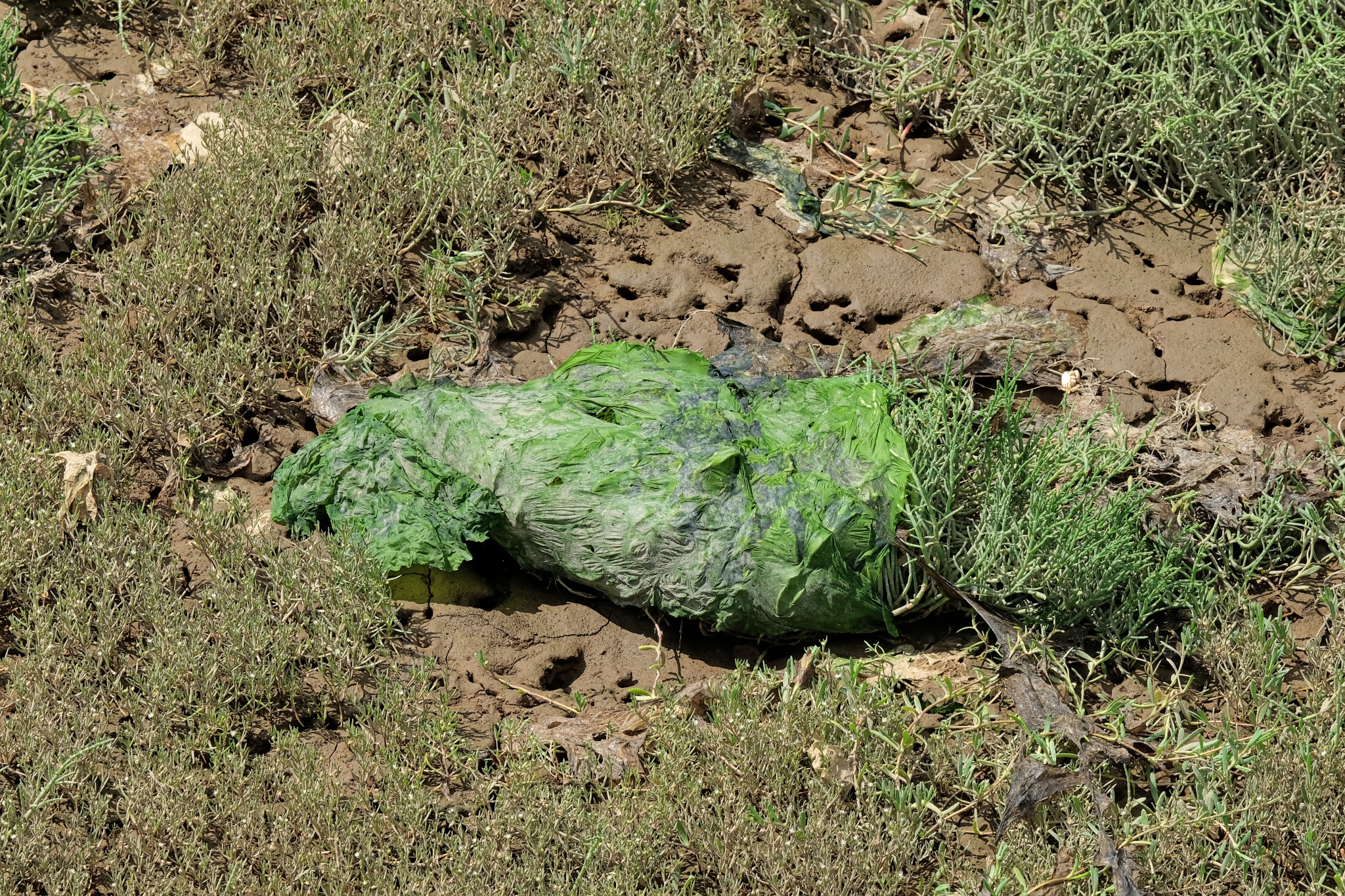 Altogether too much plastic. The Human Being!!!
Altogether too much plastic. The Human Being!!! Here and there were sand bag earthworks to direct the drainage flow under the walkway to the Nisqually River.
Here and there were sand bag earthworks to direct the drainage flow under the walkway to the Nisqually River.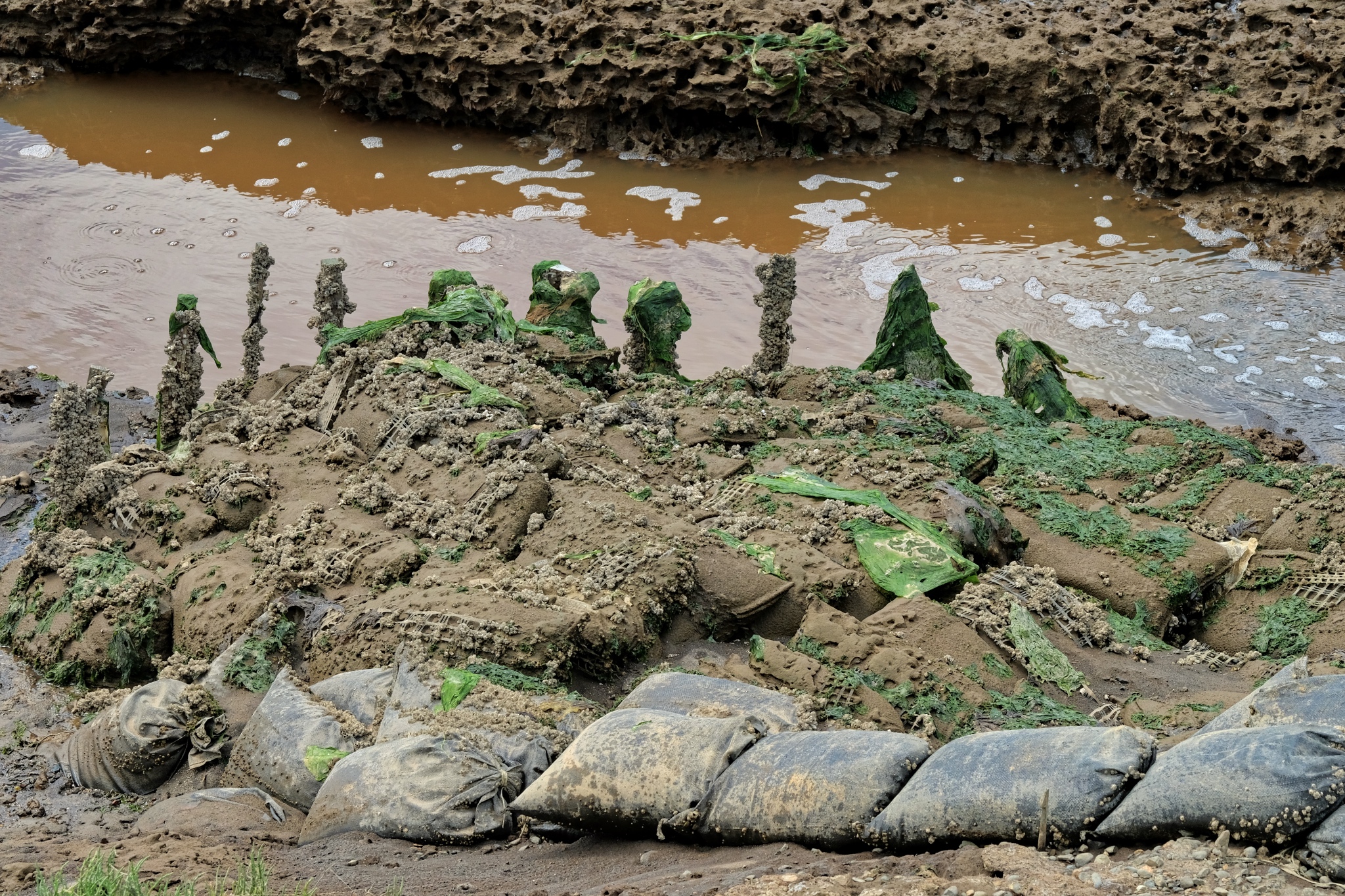 I imagine this water redirection effort to save the walkway is a never-ending chore.
I imagine this water redirection effort to save the walkway is a never-ending chore. Stumps washed down the river when it raged in winter.
Stumps washed down the river when it raged in winter.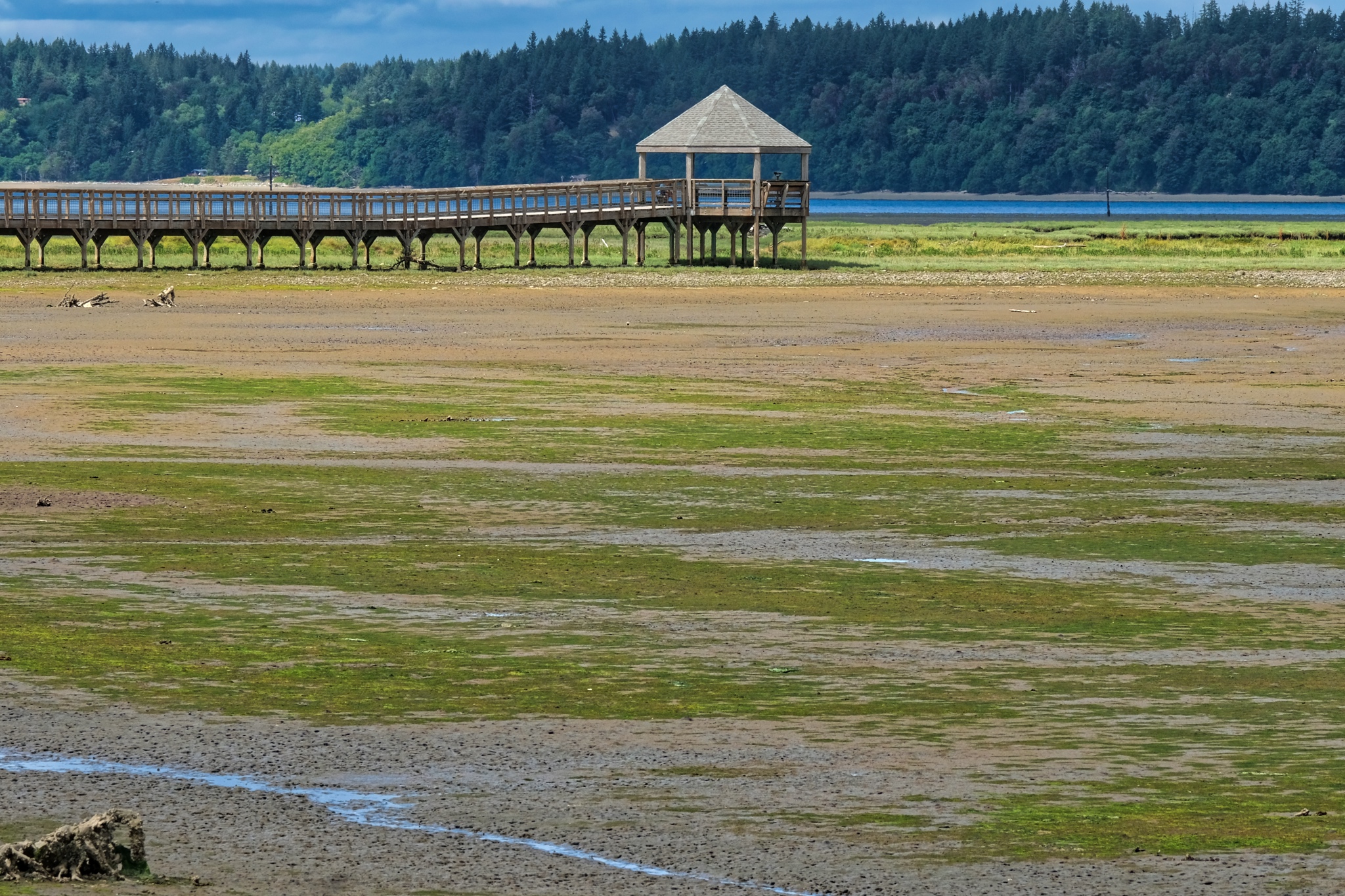 My ultimate goal, and the terminus of the walkway, was several miles from dry land!
My ultimate goal, and the terminus of the walkway, was several miles from dry land!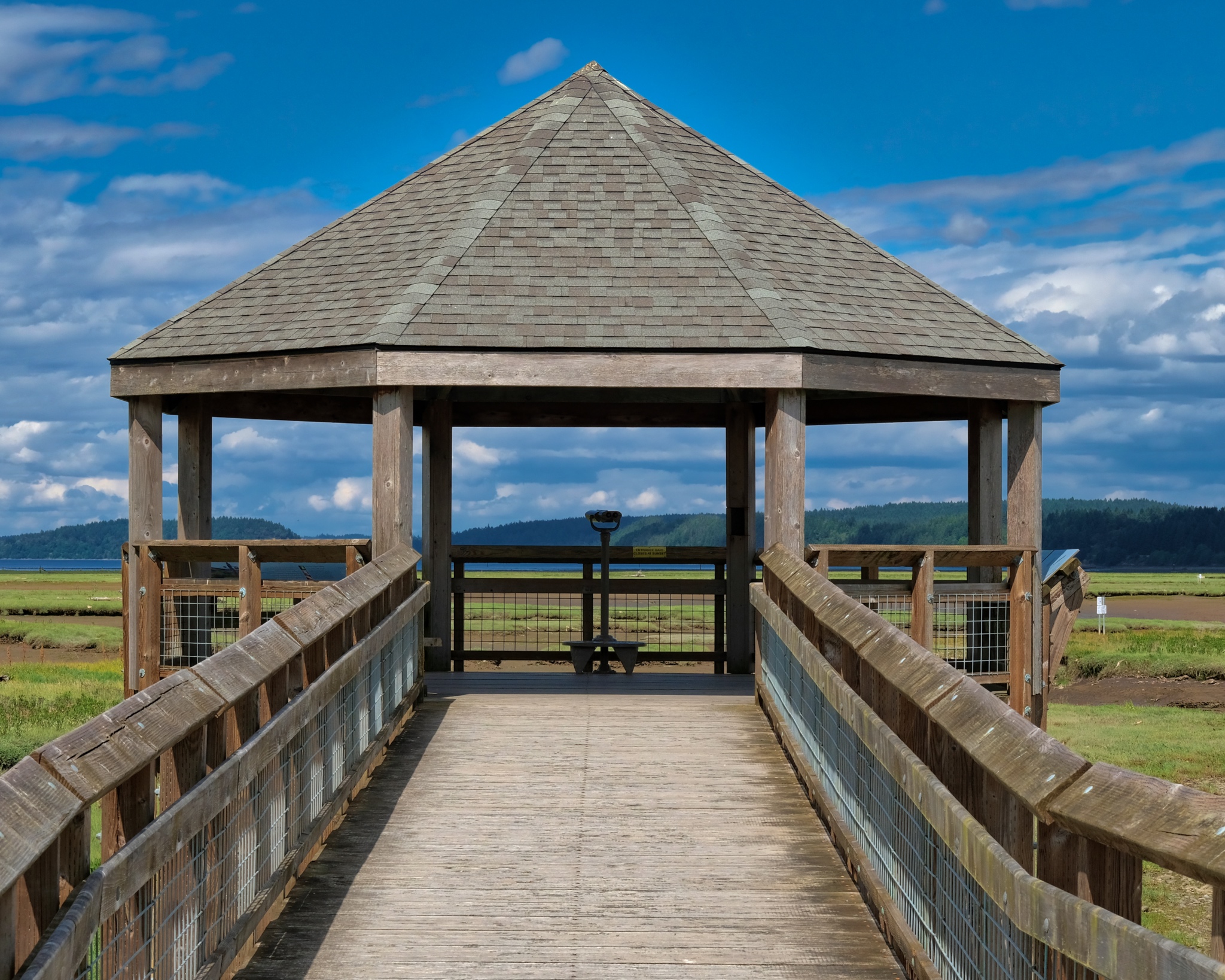 The final observation pavilion was not too far from the actual Puget Sound.
The final observation pavilion was not too far from the actual Puget Sound.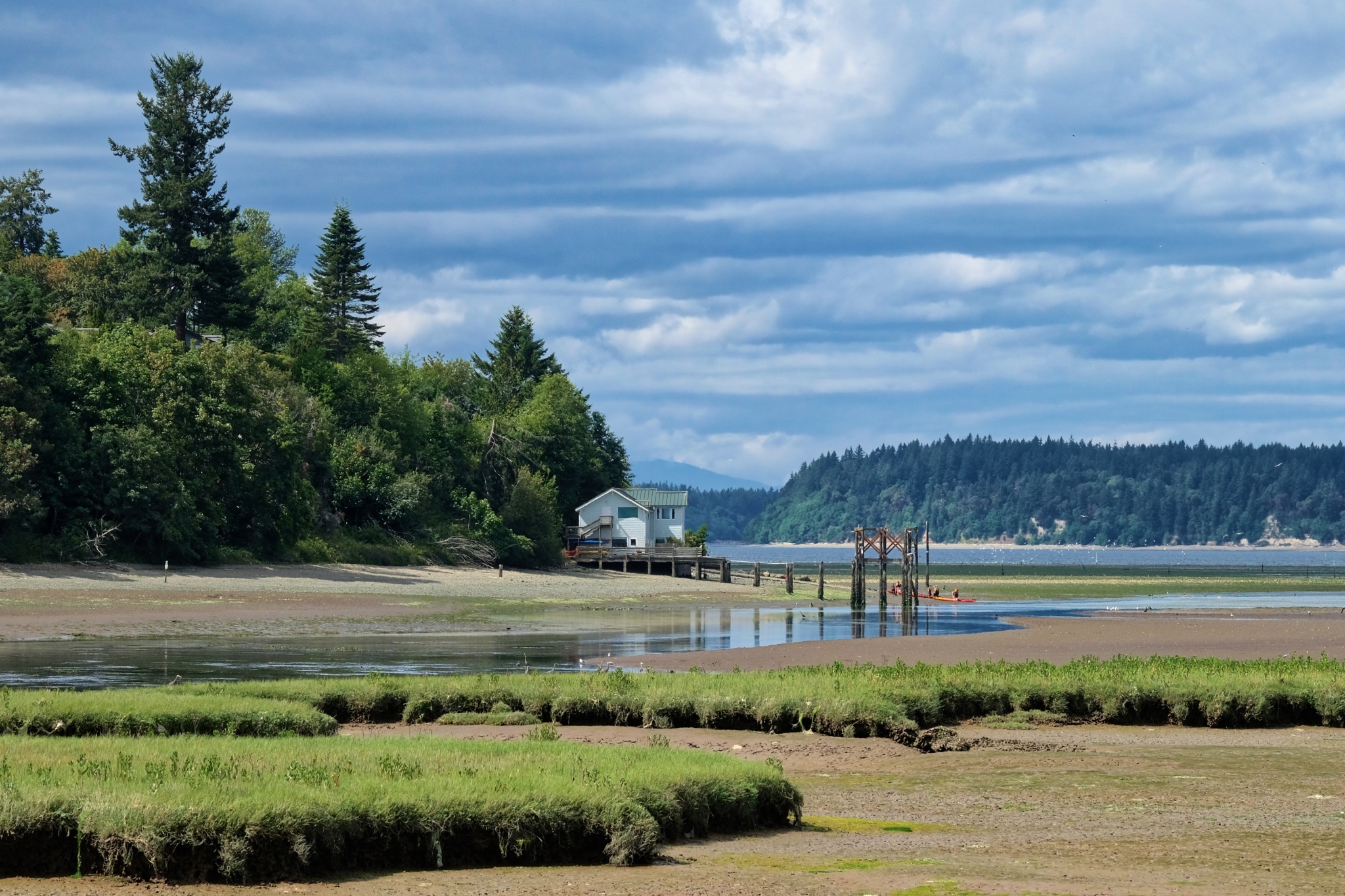
The view from the last observation pavilion.
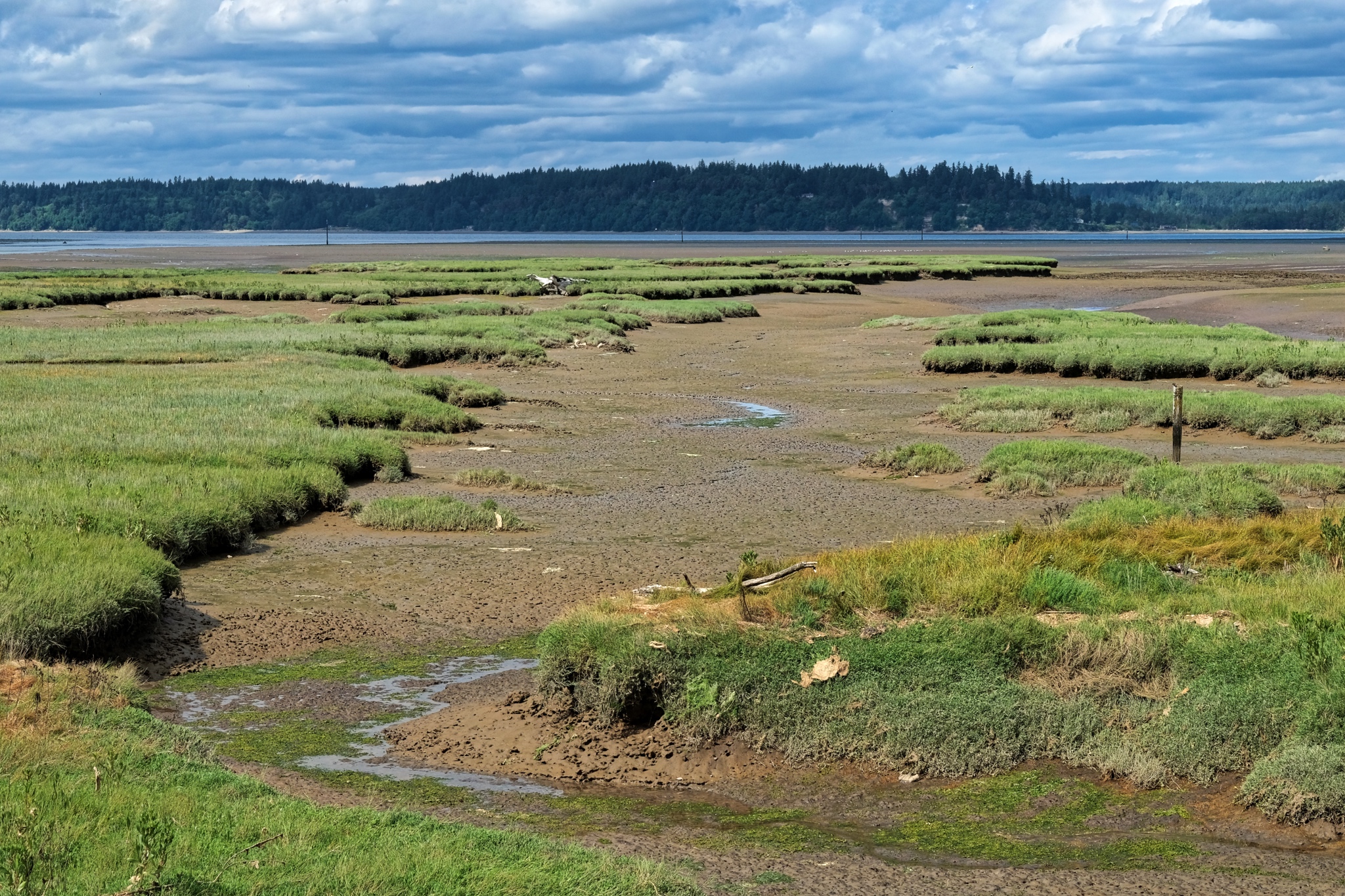 Puget Sound in the background.
Puget Sound in the background.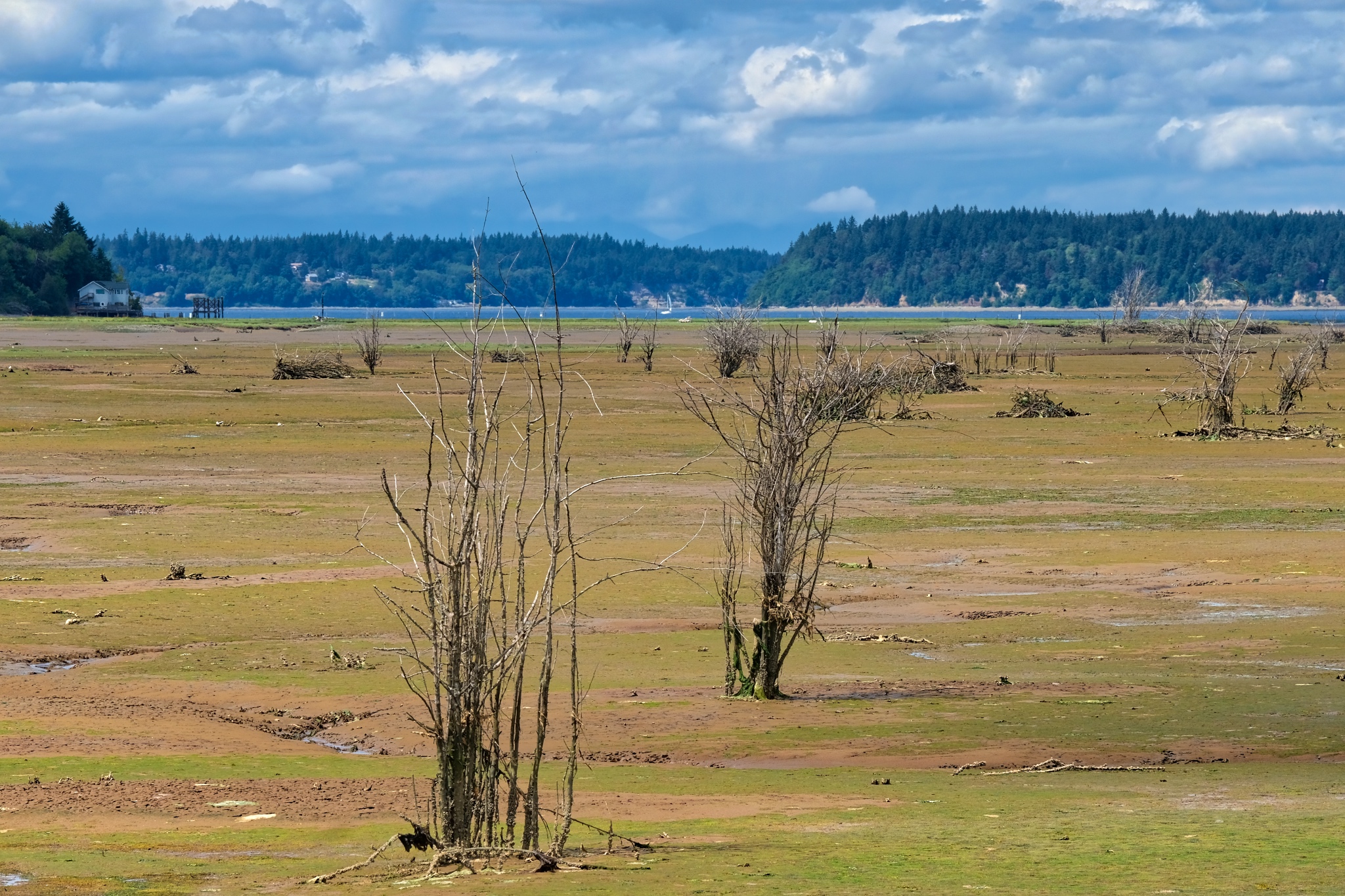 It was a beautiful day to be out in the world . . . making the most of the supramundane.
It was a beautiful day to be out in the world . . . making the most of the supramundane.Road Trip USA: Oregon Camping - Silver Creek Falls
 Wednesday, June 20, 2018 at 11:36AM
Wednesday, June 20, 2018 at 11:36AM  Magnificent South Falls at Oregon's Silver Falls State Park.
Magnificent South Falls at Oregon's Silver Falls State Park. Out and about on the back roads and state parks of Oregon in my little camping rig. Life is great.
Out and about on the back roads and state parks of Oregon in my little camping rig. Life is great. Only 40 miles from where I have been staying near Keizer, Oregon is Silver Falls State Park.
Only 40 miles from where I have been staying near Keizer, Oregon is Silver Falls State Park. The western slopes of the Cascades Mountains are extremely damp and lush.
The western slopes of the Cascades Mountains are extremely damp and lush. It rains so much here there is moss hanging from the trees.
It rains so much here there is moss hanging from the trees. I arrived on a cool, but dry, afternoon in early June. After setting up camp I went out on my bicycle to explore the well maintained trails.
I arrived on a cool, but dry, afternoon in early June. After setting up camp I went out on my bicycle to explore the well maintained trails. I have been all over the world . . . and this part of Oregon is by far the GREENEST! Ireland and Scotland are not even close.
I have been all over the world . . . and this part of Oregon is by far the GREENEST! Ireland and Scotland are not even close. There are many miles of bike paths throughout the park, which I rode on day two of my stay. This is the Ridge Trial. I love the look of the orange pine needles covering the trail.
There are many miles of bike paths throughout the park, which I rode on day two of my stay. This is the Ridge Trial. I love the look of the orange pine needles covering the trail.  The Ridge Trail passed through some marvelous old growth forest.
The Ridge Trail passed through some marvelous old growth forest. A steep climb brought many views of this old forest.
A steep climb brought many views of this old forest. In many places the forest floor was a carpet of ferns!
In many places the forest floor was a carpet of ferns! A new wonderment at every turn of the bike path.
A new wonderment at every turn of the bike path. Trees felled by storms lay about here and there . . . and will decompose to supply nutrients to the next generations of tall trees.
Trees felled by storms lay about here and there . . . and will decompose to supply nutrients to the next generations of tall trees. I found myself stopping often just to take in all the beauty. What a bike trail!
I found myself stopping often just to take in all the beauty. What a bike trail! A damp stand . . . .
A damp stand . . . . Layers and layers of greenery . . .
Layers and layers of greenery . . . SOUTH FALLS
 After a long bike ride in the forest, the overcast sky began to clear, so I packed up my camp site and drove to the South Falls trailhead. Here, the view of the South Falls from above. I met a nice family from Thailand here. It's a small world.
After a long bike ride in the forest, the overcast sky began to clear, so I packed up my camp site and drove to the South Falls trailhead. Here, the view of the South Falls from above. I met a nice family from Thailand here. It's a small world. The path down and behind South Falls offers many fine spots for photography.
The path down and behind South Falls offers many fine spots for photography. A very beautiful waterfall.
A very beautiful waterfall. The trail goes behind the cascading falls . . . a very impressive sight.
The trail goes behind the cascading falls . . . a very impressive sight. There were a fair number of tourists on this day . . . and we all stood kin silence under the falls listening to the powerful 'song' of the water falling from above.
There were a fair number of tourists on this day . . . and we all stood kin silence under the falls listening to the powerful 'song' of the water falling from above. The bright sun suddenly appeared along the path to the Lower South Falls. . . making the already green environment explode with luminosity. Incredible green!
The bright sun suddenly appeared along the path to the Lower South Falls. . . making the already green environment explode with luminosity. Incredible green! The picture post card view.
The picture post card view. Silver Creek.
Silver Creek. A nice bridge view . . . there were many other photographers, most with big tripods, wanting to use the bridge as a vantage point . . . but they were all complaining that people walking on it caused it to shake.
A nice bridge view . . . there were many other photographers, most with big tripods, wanting to use the bridge as a vantage point . . . but they were all complaining that people walking on it caused it to shake. The two-mile path to Lower South Falls followed Silver Creek most of the way.
The two-mile path to Lower South Falls followed Silver Creek most of the way.
This is a very busy trail with lots of curious children.
 A magical place.
A magical place. The path rose for quite while before a view of the creek was visible again.
The path rose for quite while before a view of the creek was visible again. A steep zig-zag of stairs down to the fall's base.
A steep zig-zag of stairs down to the fall's base. After the winding and steep stairs down, I was rewarded with my first view of Lower South Falls.
After the winding and steep stairs down, I was rewarded with my first view of Lower South Falls. The Lower South Falls through the trees.
The Lower South Falls through the trees. A beautiful view.
A beautiful view. Oregon!
Oregon! The path here also continued behind the falls.
The path here also continued behind the falls. The roar of the falls became very loud as you neared it.
The roar of the falls became very loud as you neared it. Another fabulous forest waterfall view.
Another fabulous forest waterfall view. I got a little wet behind the falls.
I got a little wet behind the falls. Through the mists . . .
Through the mists . . . Directly behind the falls.
Directly behind the falls. My last glimpse of the Lower South Falls as the sun began to shine again.
My last glimpse of the Lower South Falls as the sun began to shine again. Up the steep steps and onto the ridge for a view of the creek in bright sunlight.
Up the steep steps and onto the ridge for a view of the creek in bright sunlight. I walked back up the path to my camper and left the park. I spent a wonderful three days in a beautiful place. The camping sites and facilities were first rate.
I walked back up the path to my camper and left the park. I spent a wonderful three days in a beautiful place. The camping sites and facilities were first rate.Oregon Countryside and Gallon House Bridge
 Hops for your beer: Oregon is a major world producer of hops . . . a very labour-intensive crop.
Hops for your beer: Oregon is a major world producer of hops . . . a very labour-intensive crop. Oregon fields of grain.
Oregon fields of grain. This cooperative farmer stopped so I could take this photograph. Thank you.
This cooperative farmer stopped so I could take this photograph. Thank you. A small road sign indicated 'Gallon House Bridge' . . . it must be very special, I thought.
A small road sign indicated 'Gallon House Bridge' . . . it must be very special, I thought. And very special it was too. Gallon House Bridge is the oldest continuously used covered bridge in Oregon.
And very special it was too. Gallon House Bridge is the oldest continuously used covered bridge in Oregon. A perfect country road 'find.'
A perfect country road 'find.' A very well-maintained old bridge.
A very well-maintained old bridge. To walk an Oregon country road in June . . . .
To walk an Oregon country road in June . . . . Oregon . . . good people, beautiful countryside.
Oregon . . . good people, beautiful countryside.